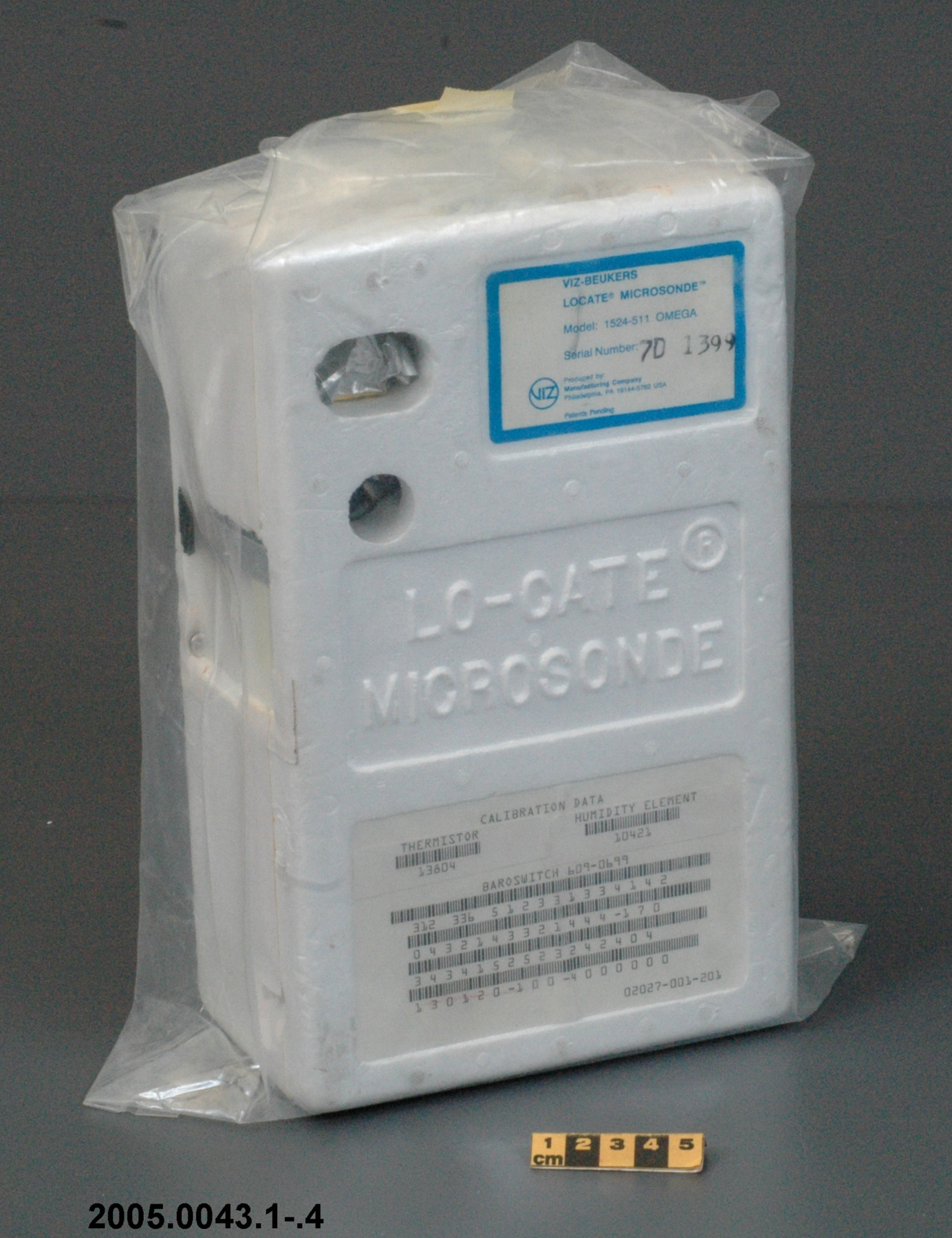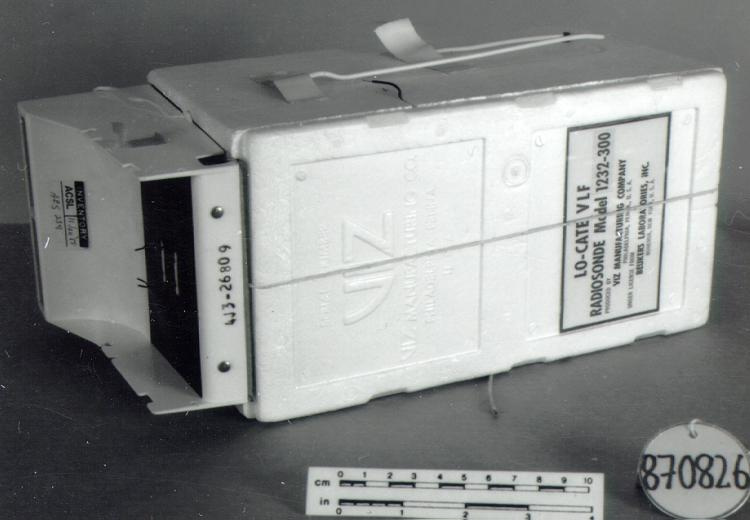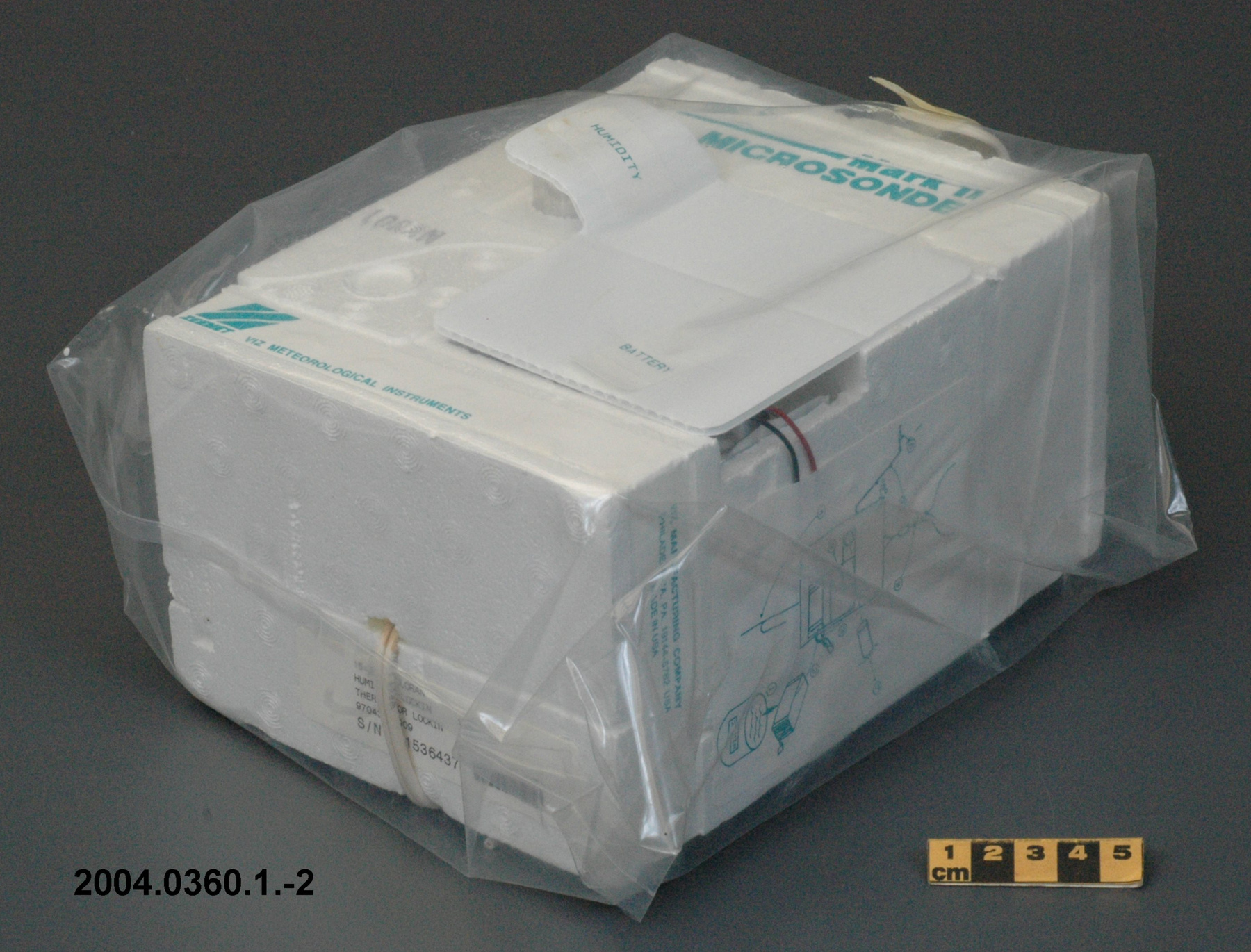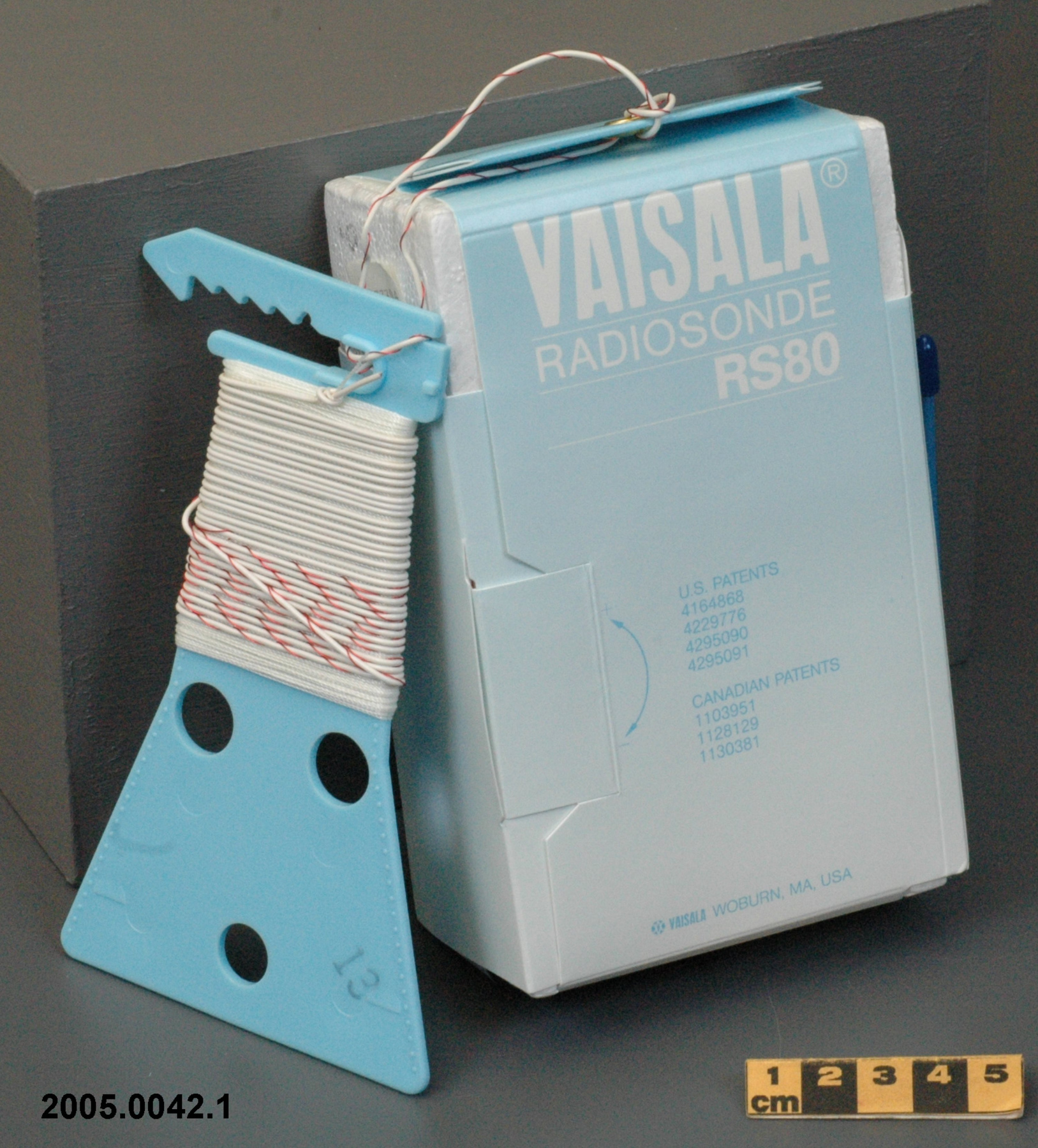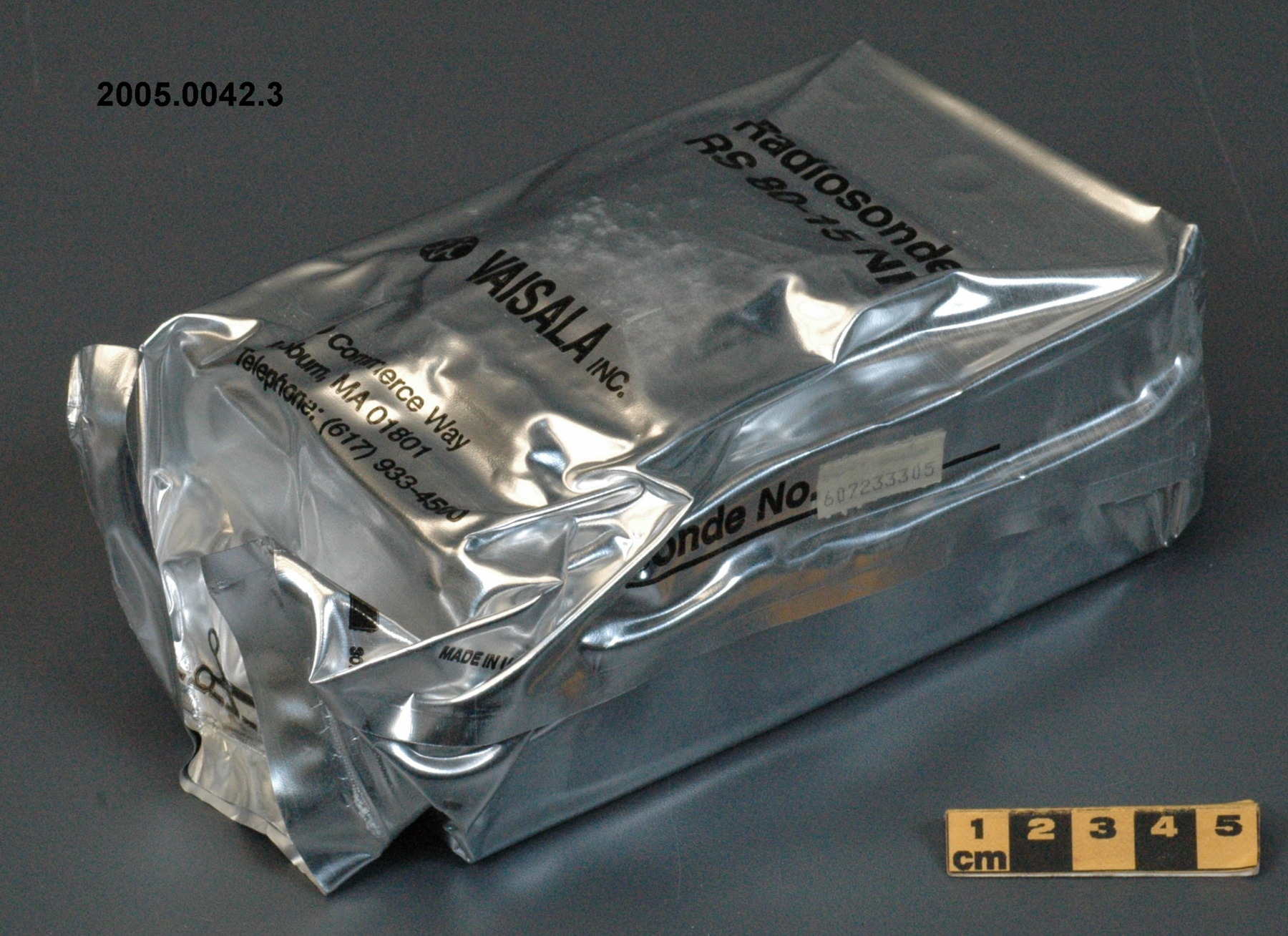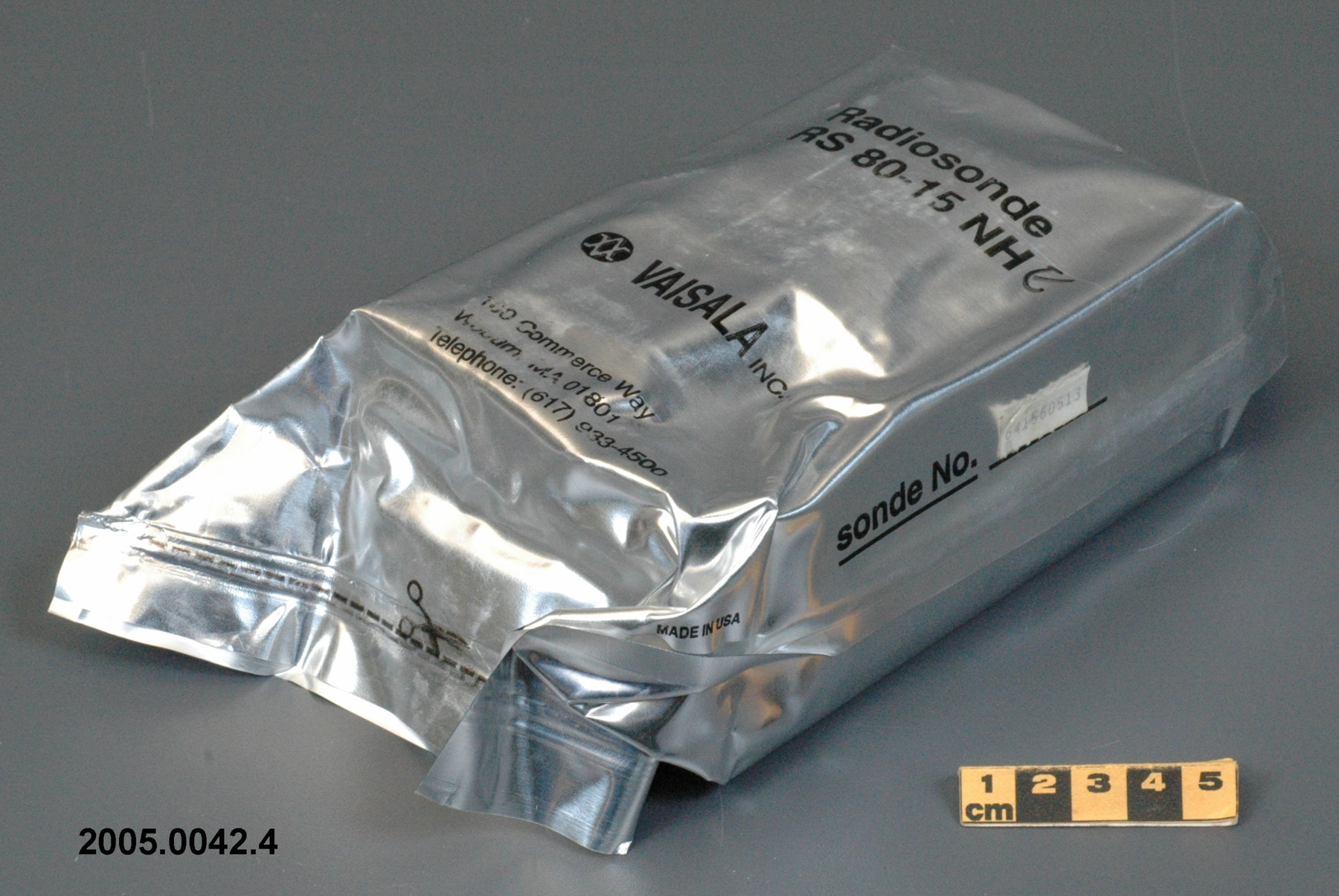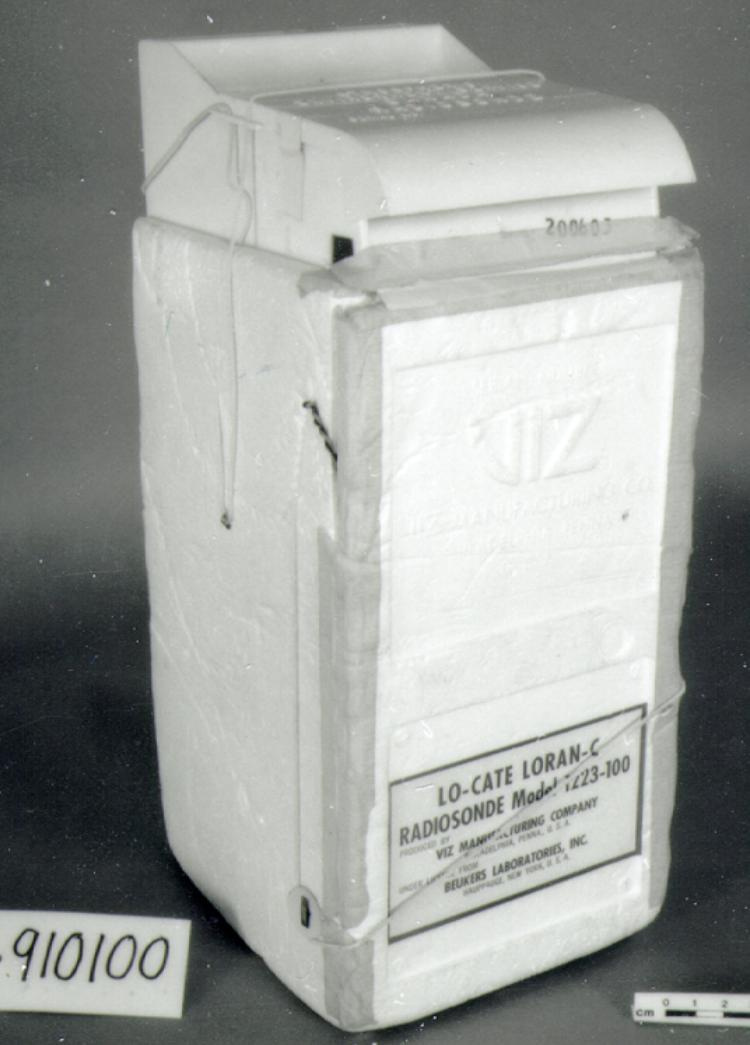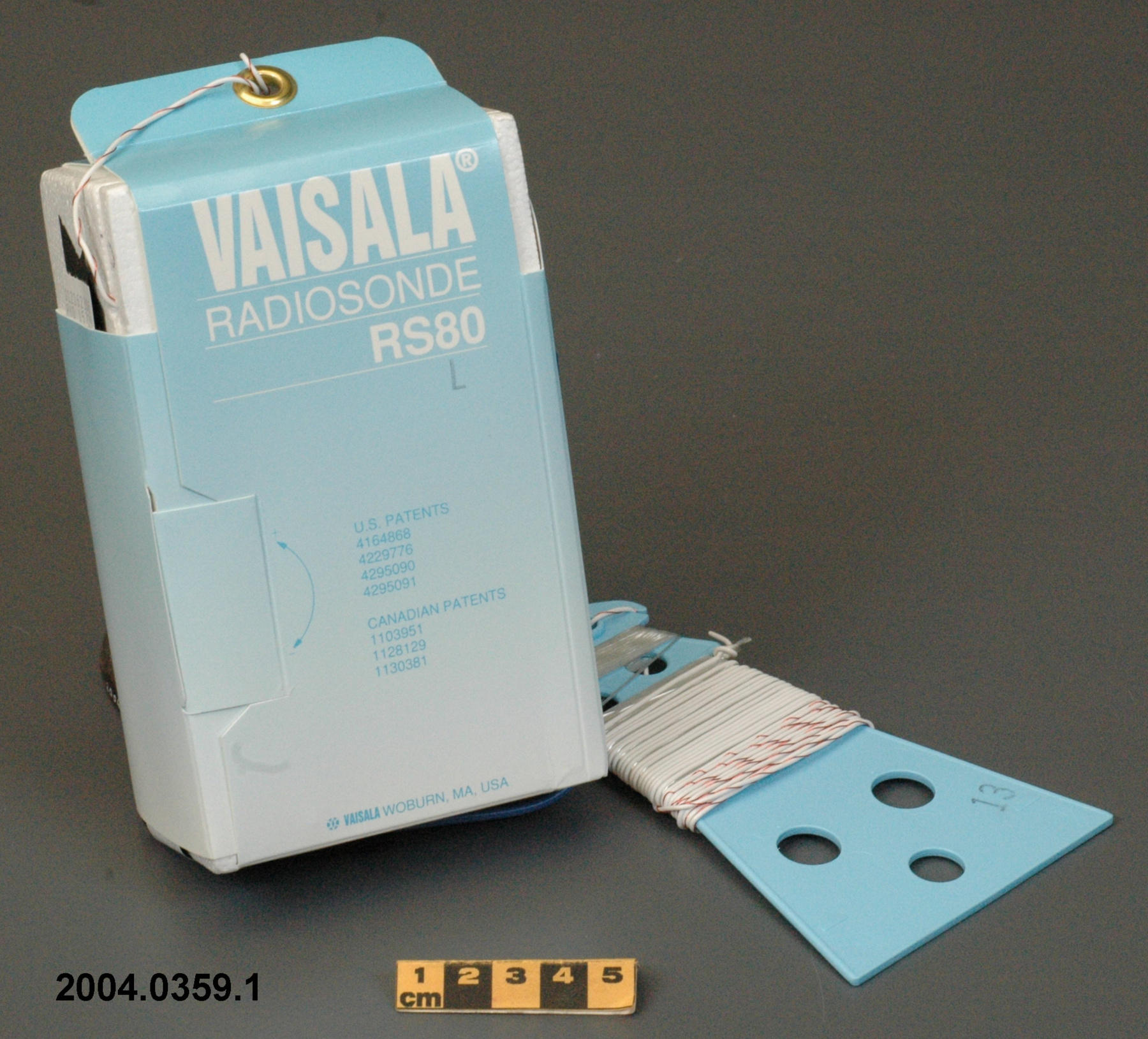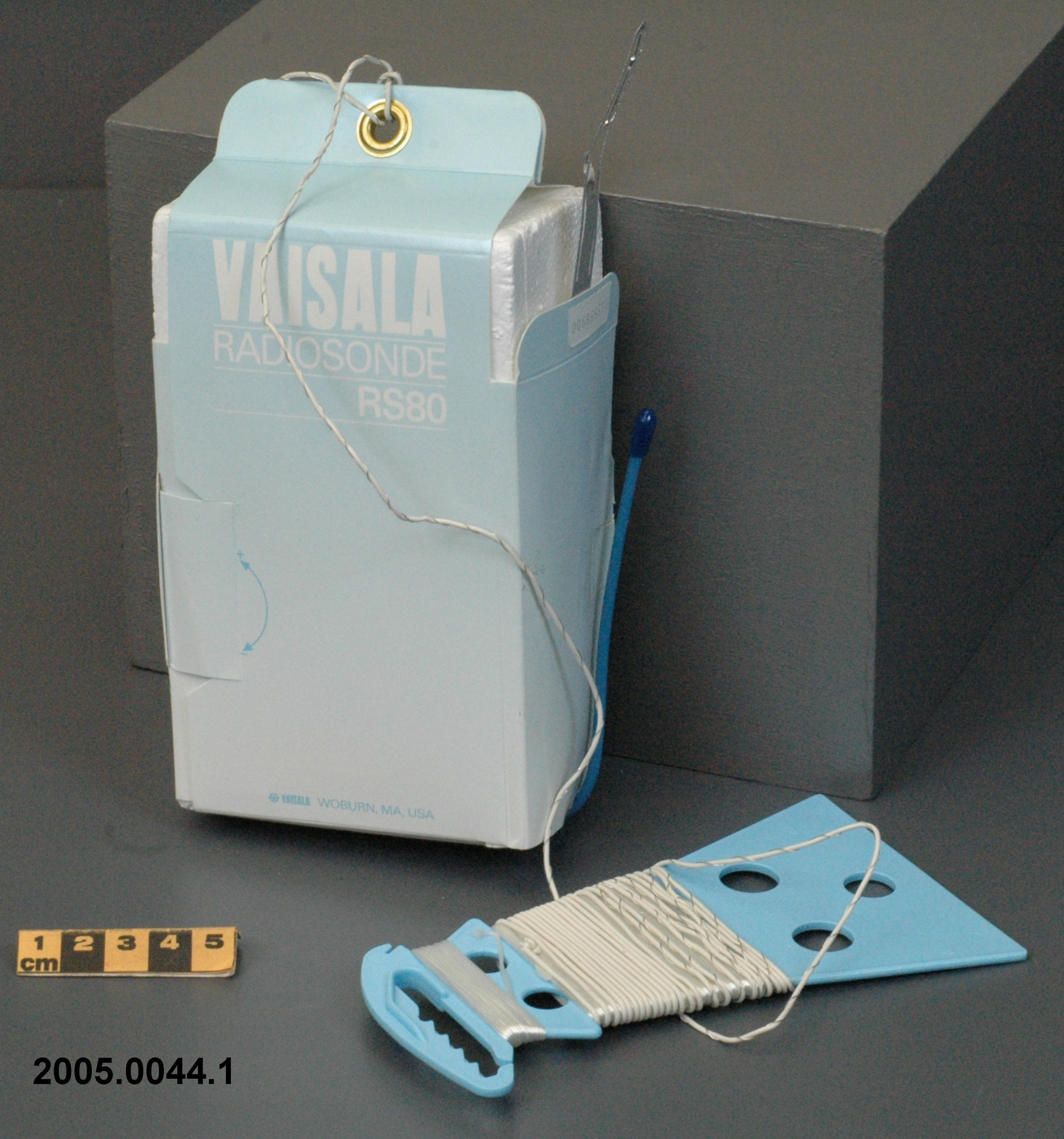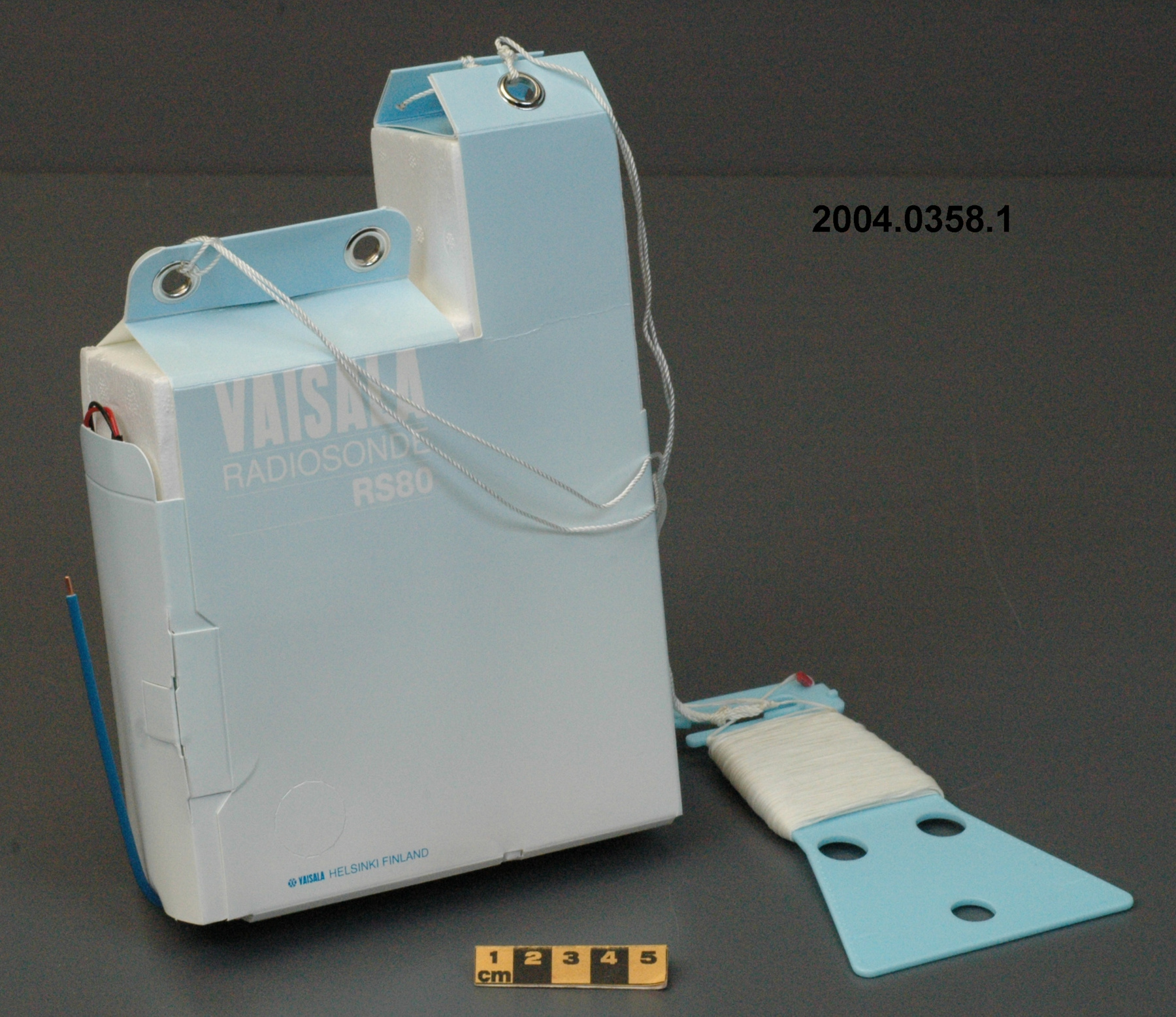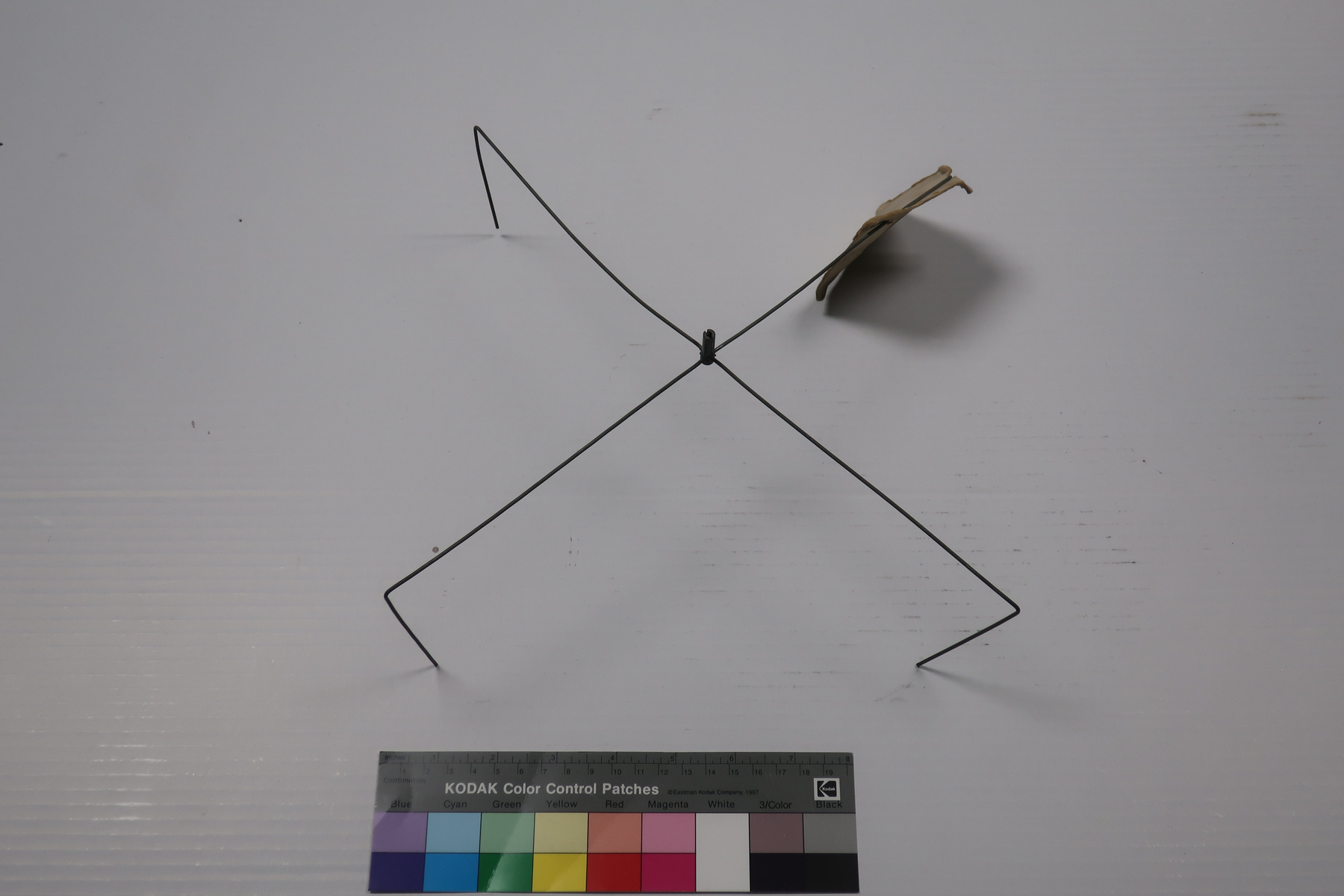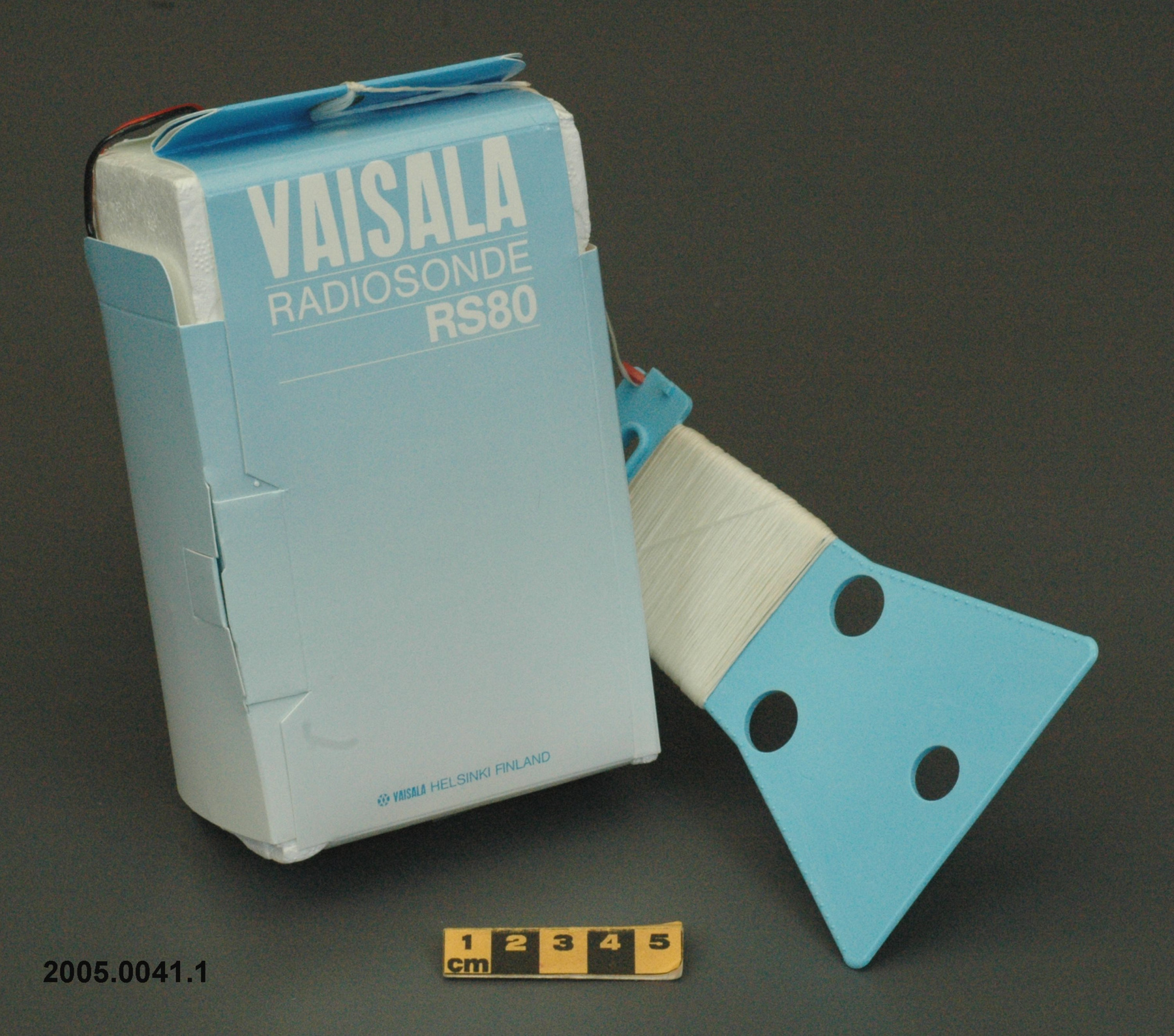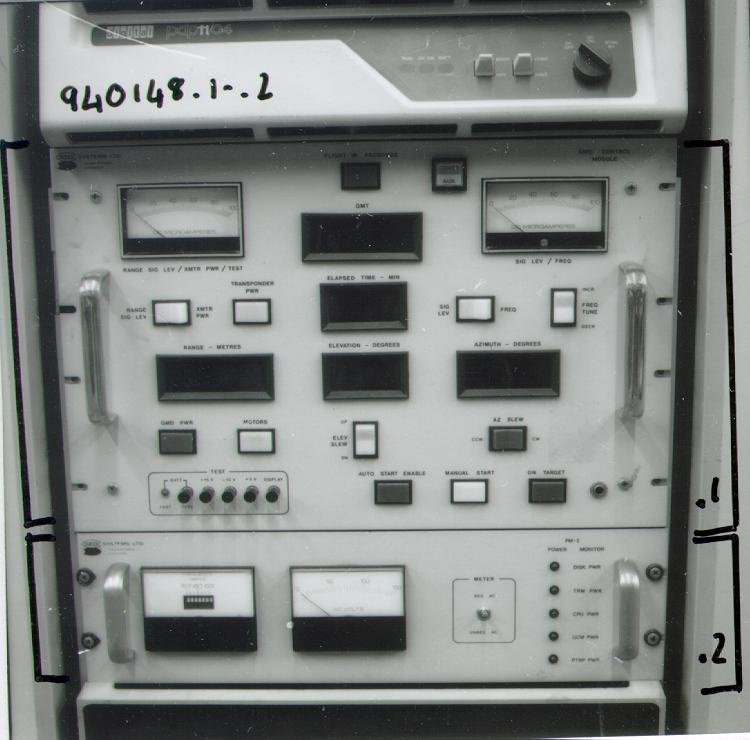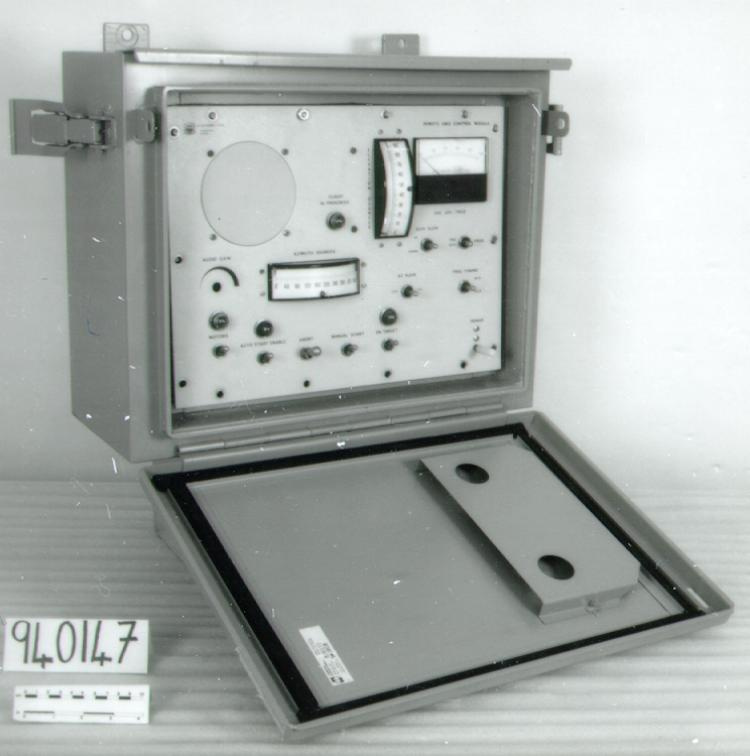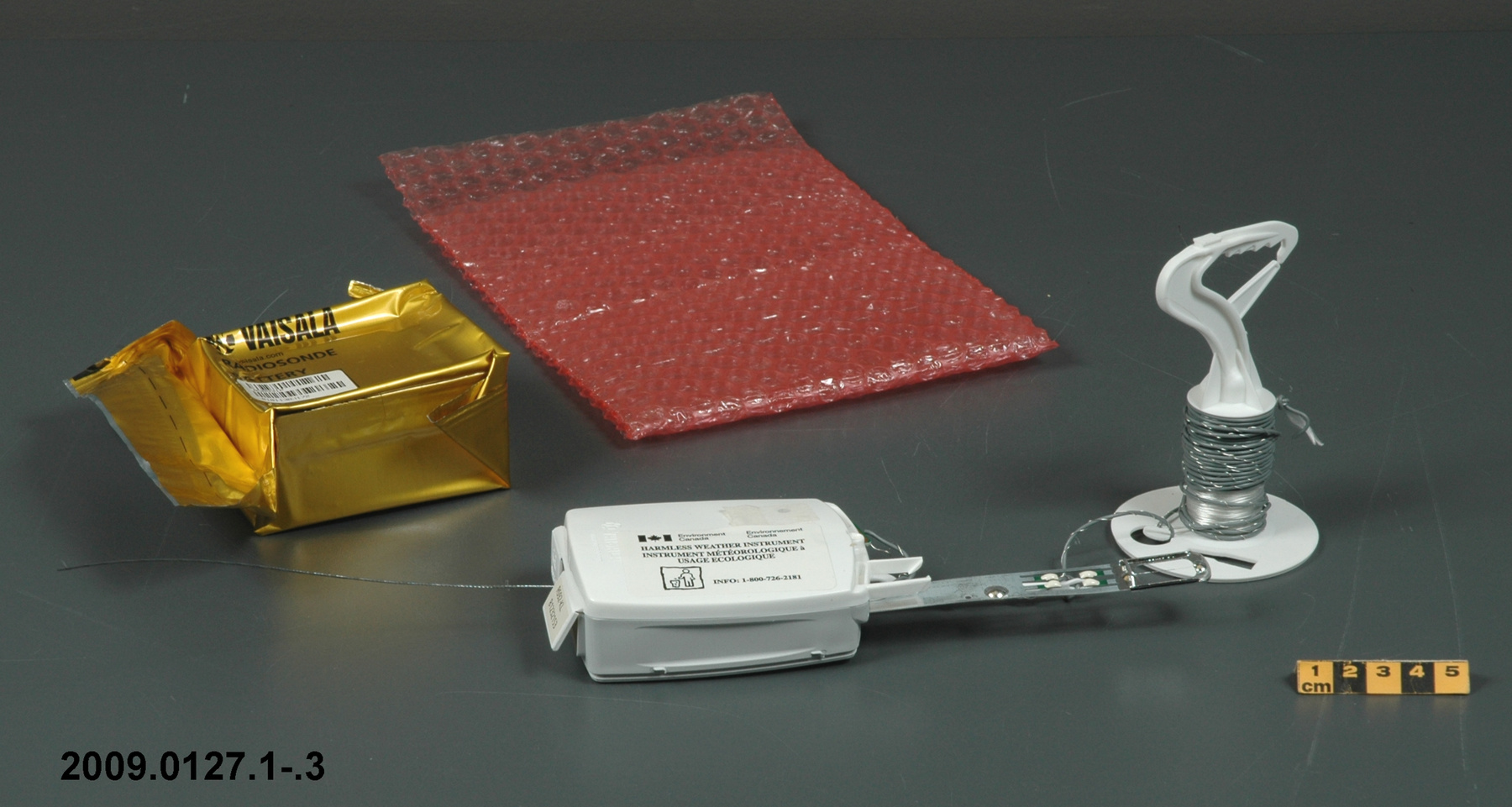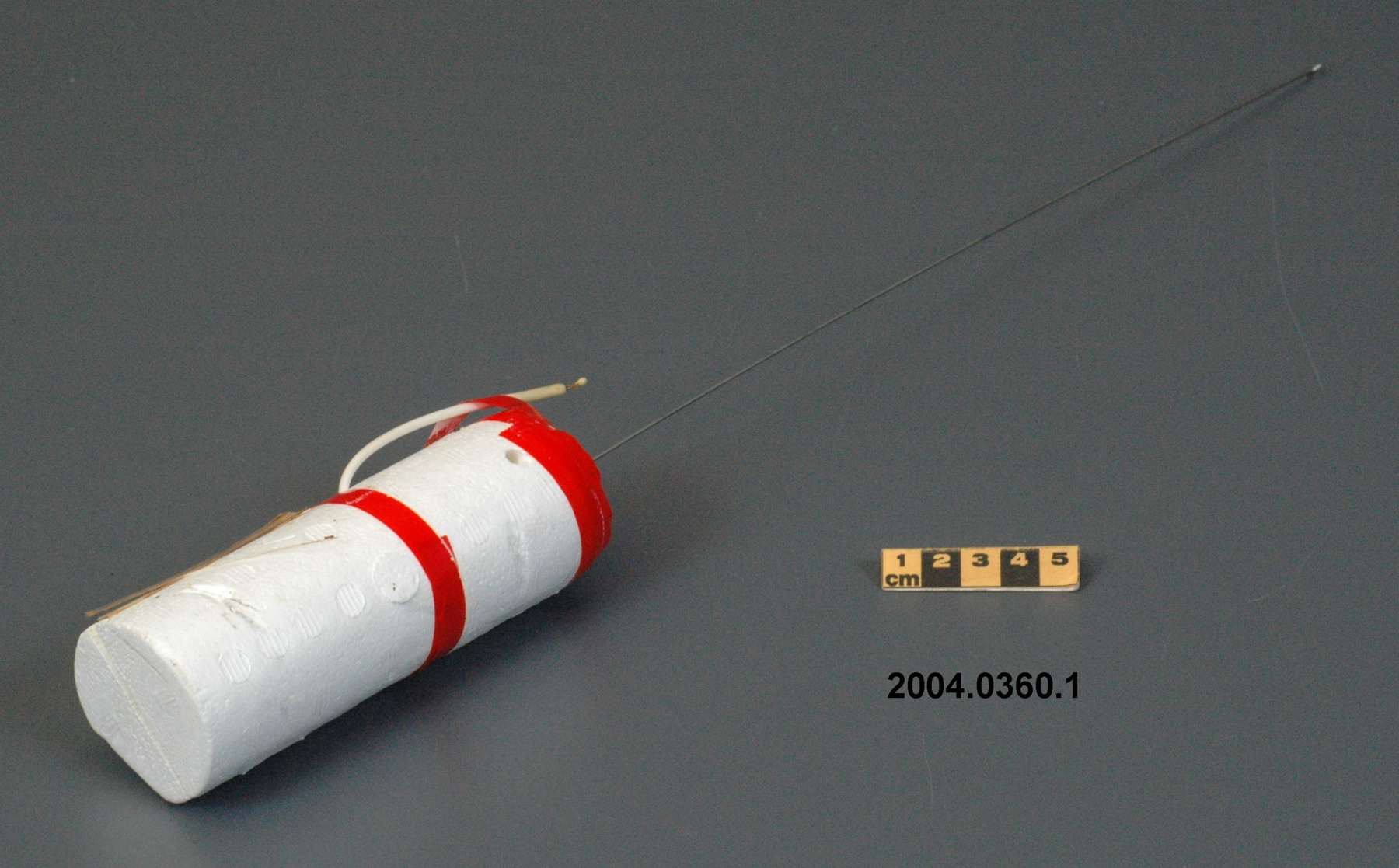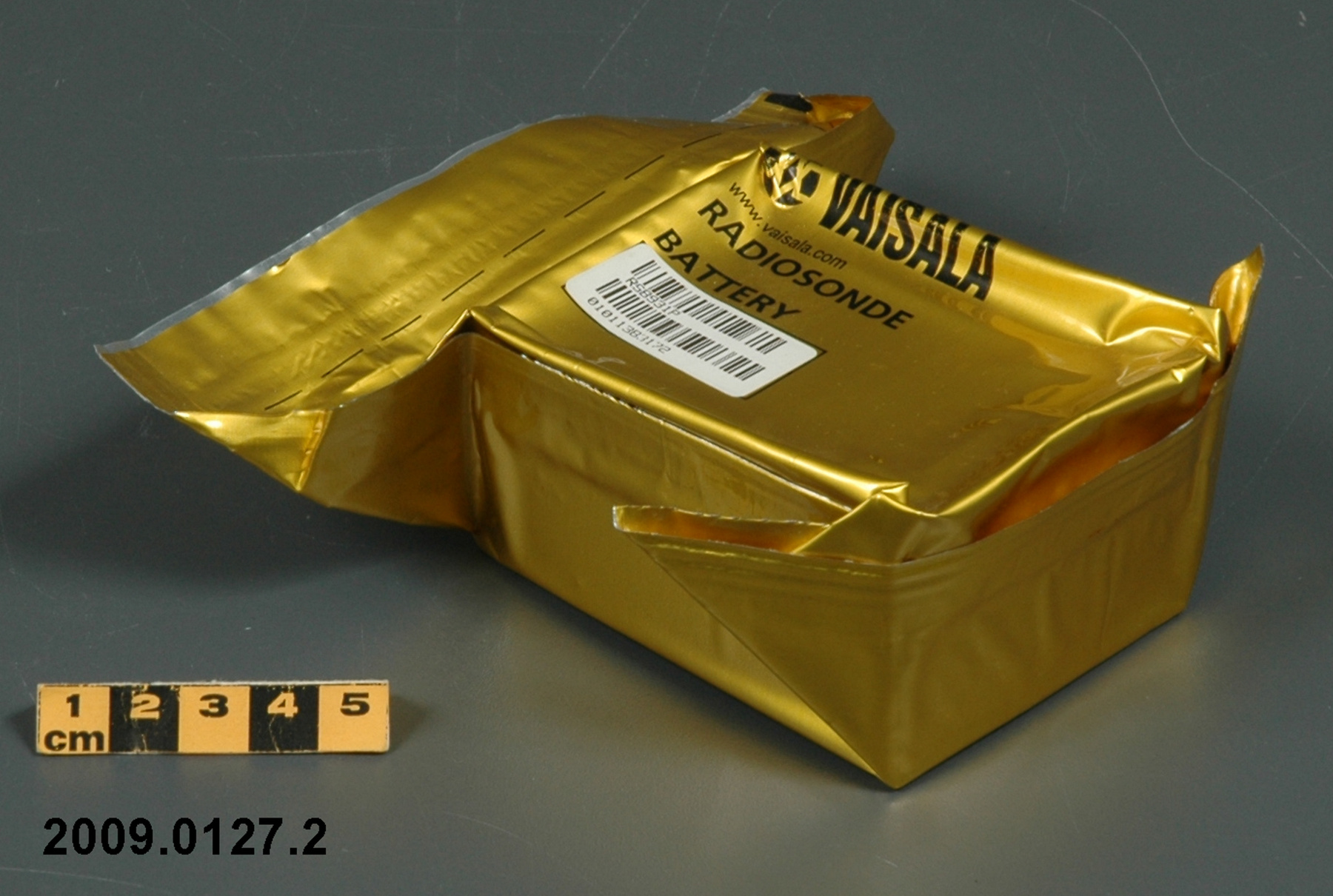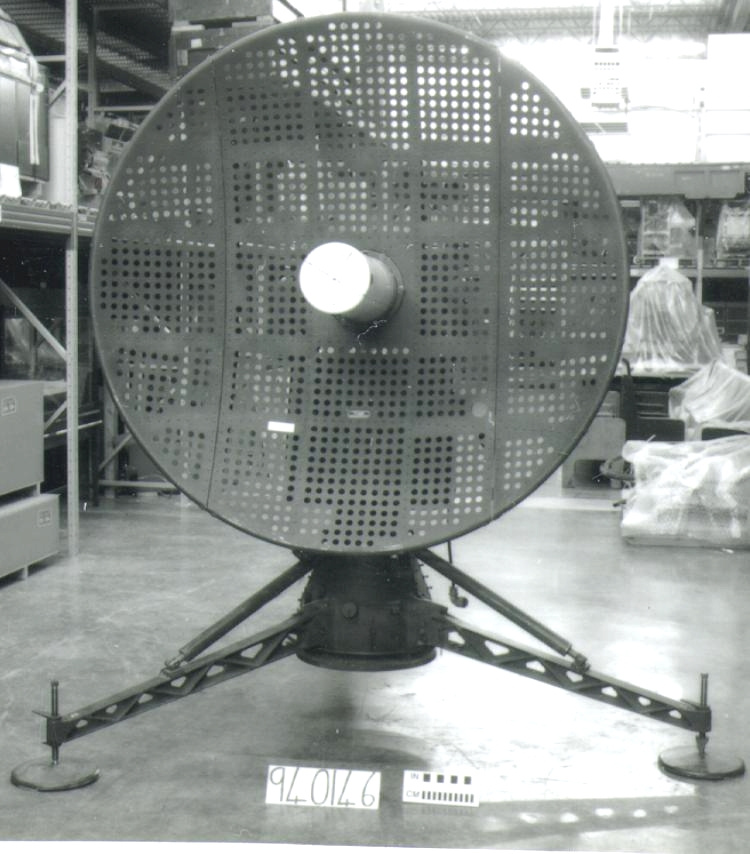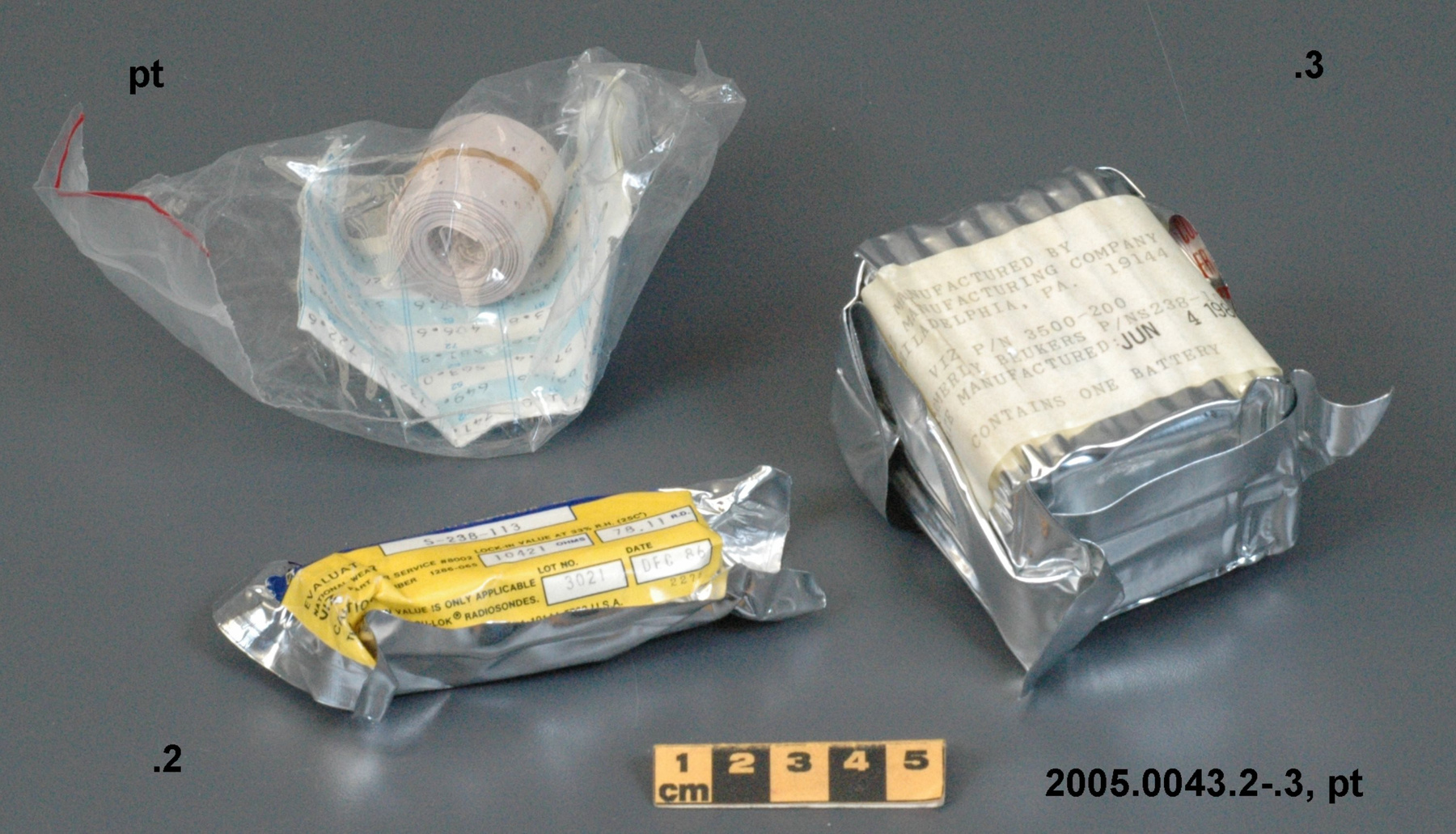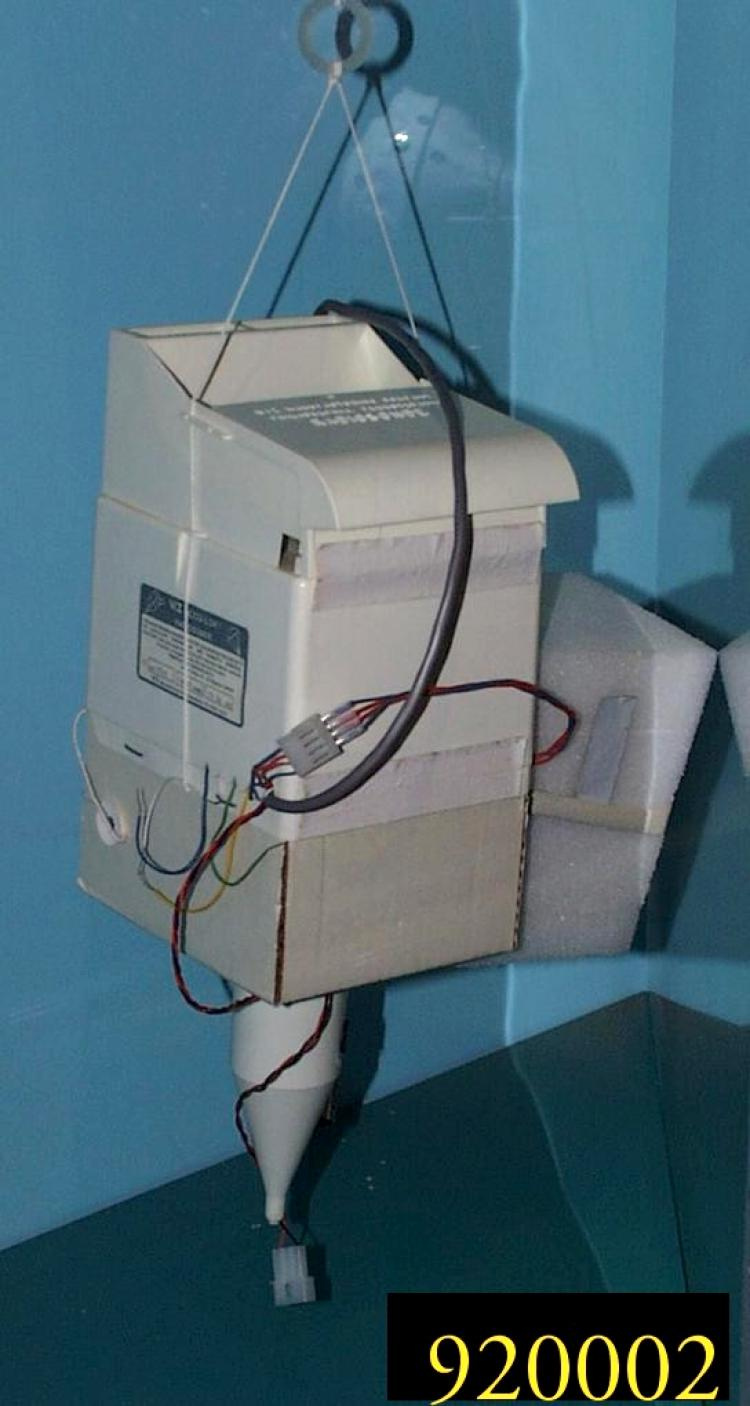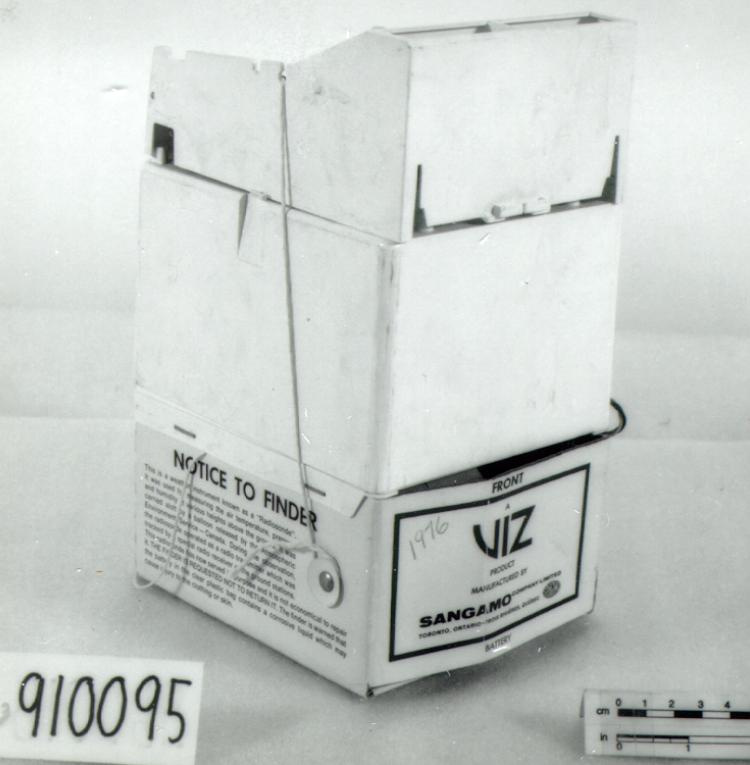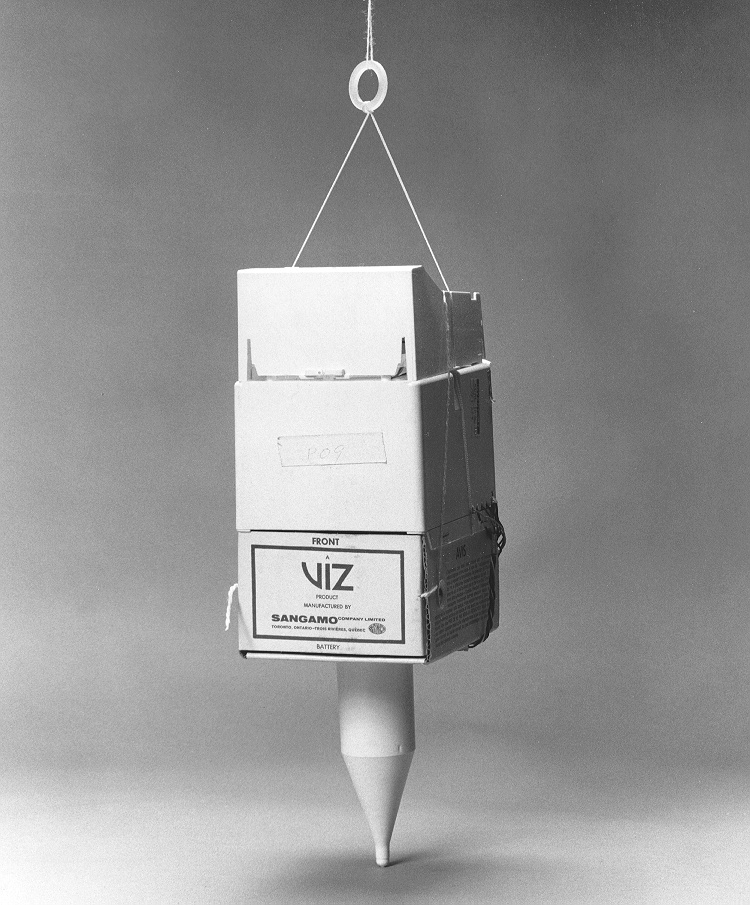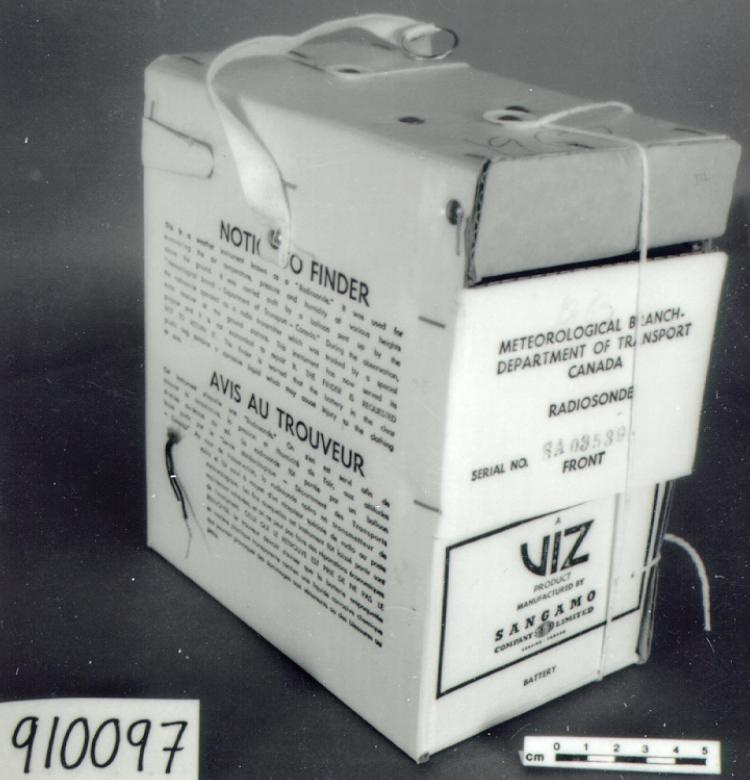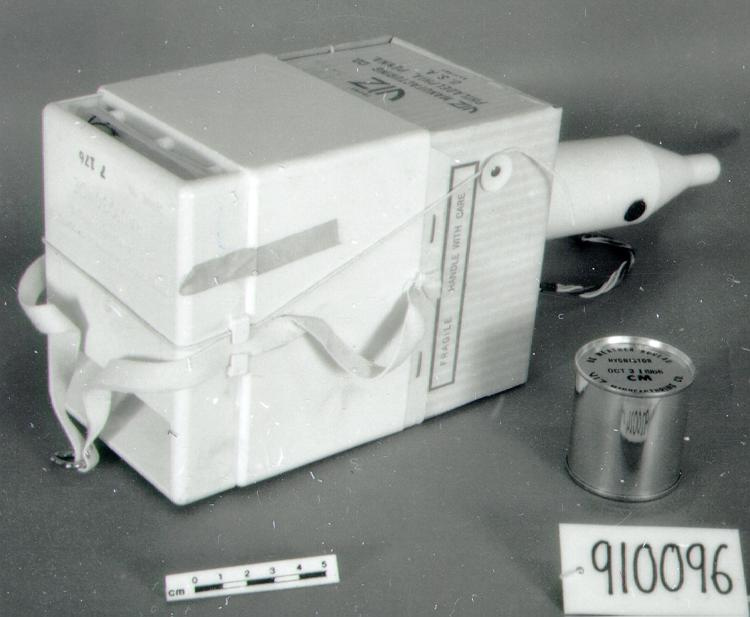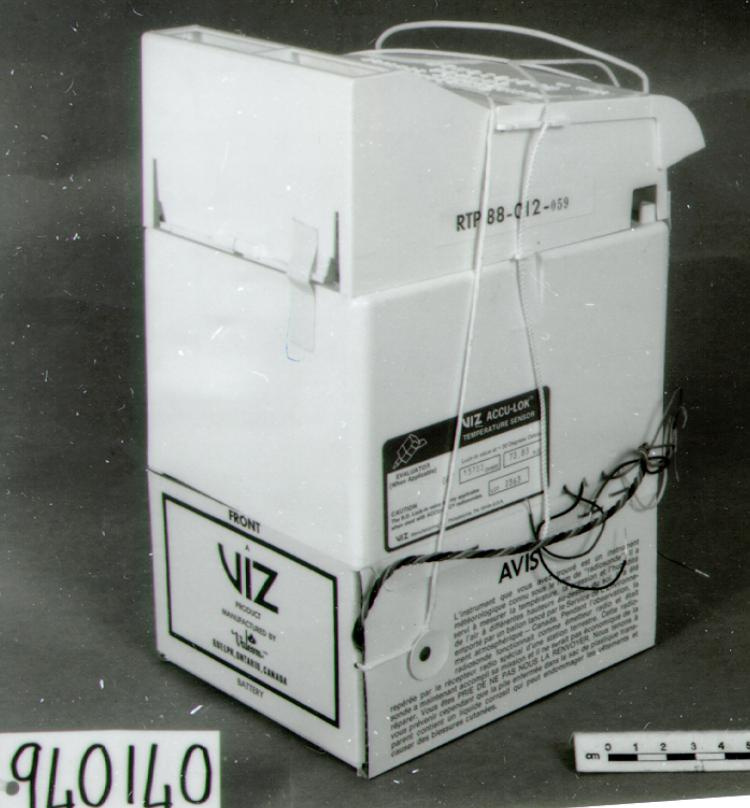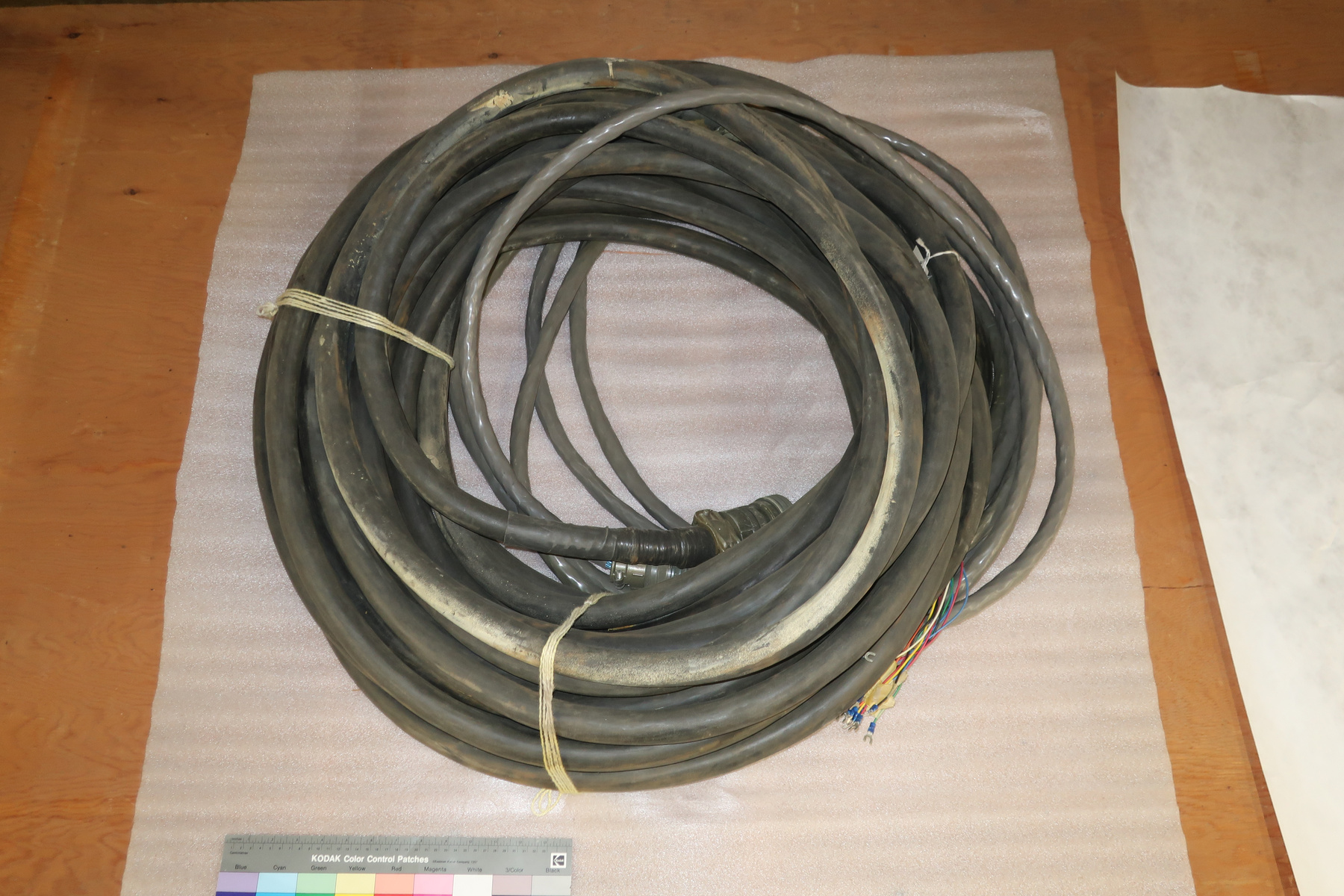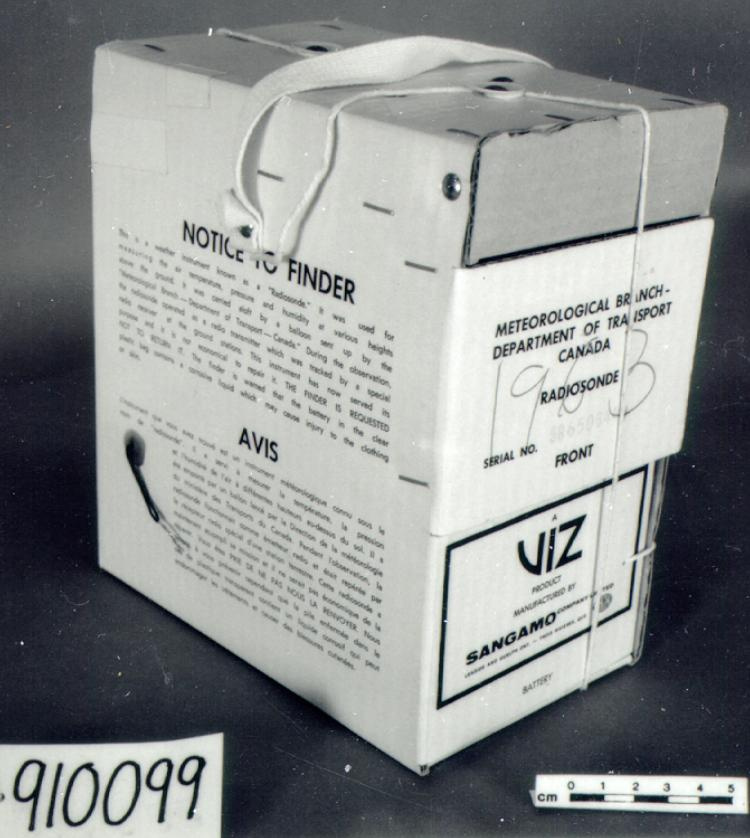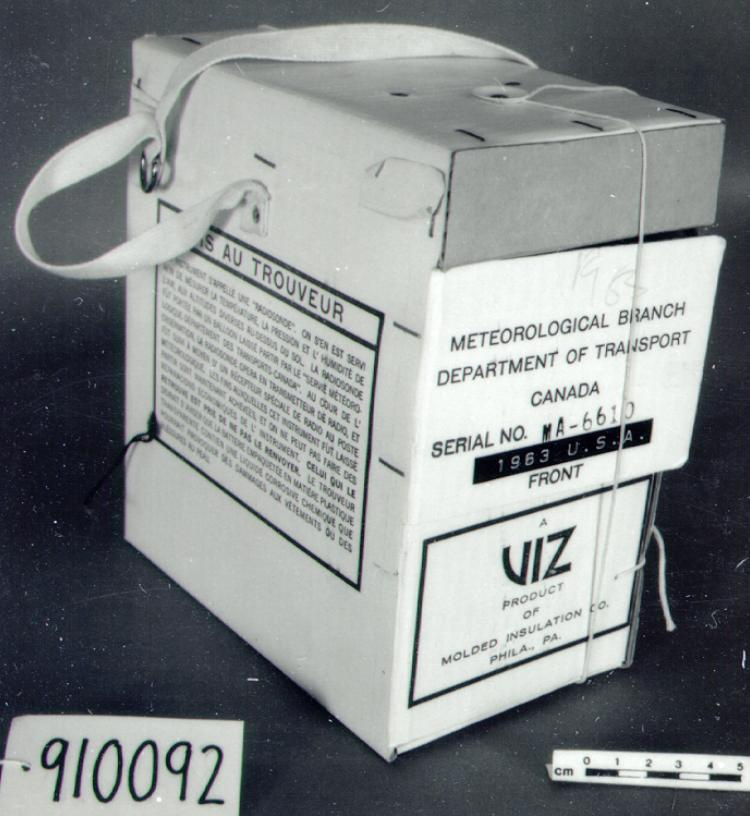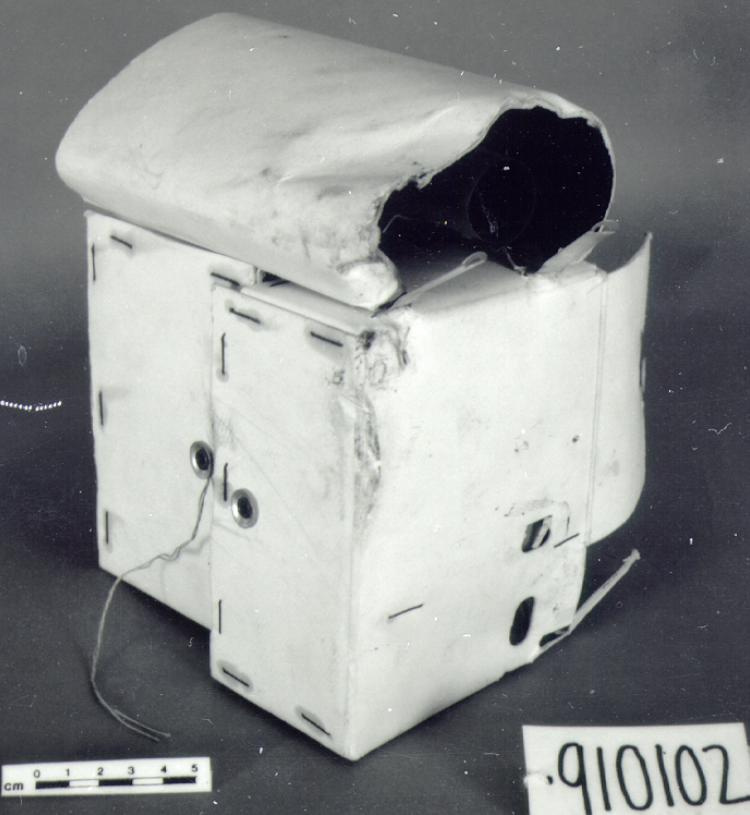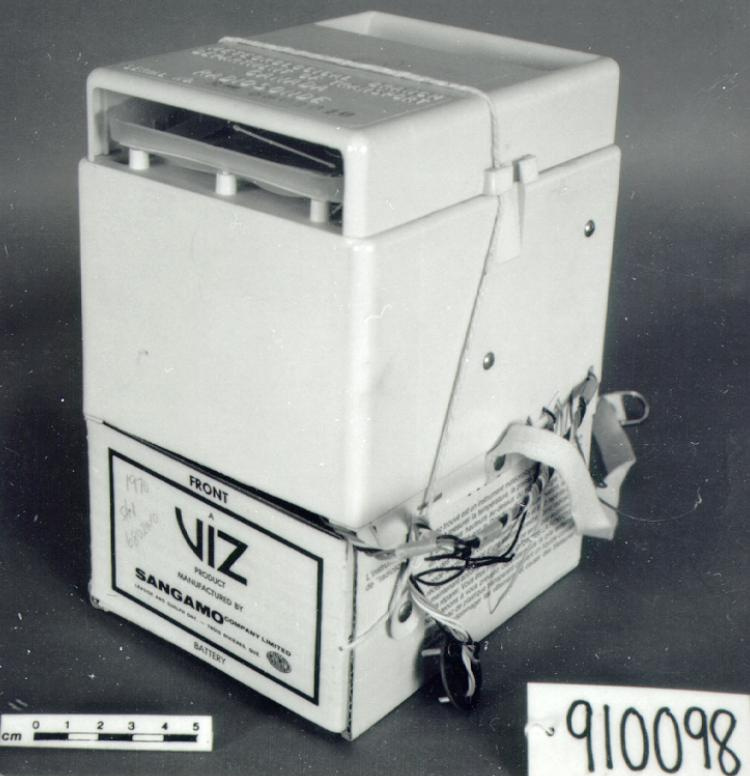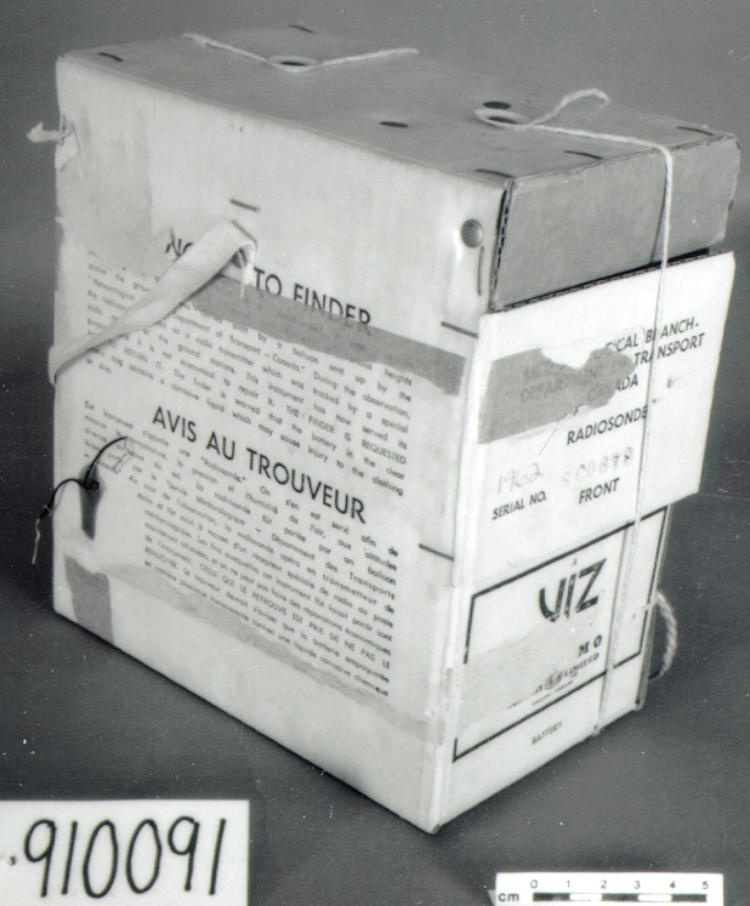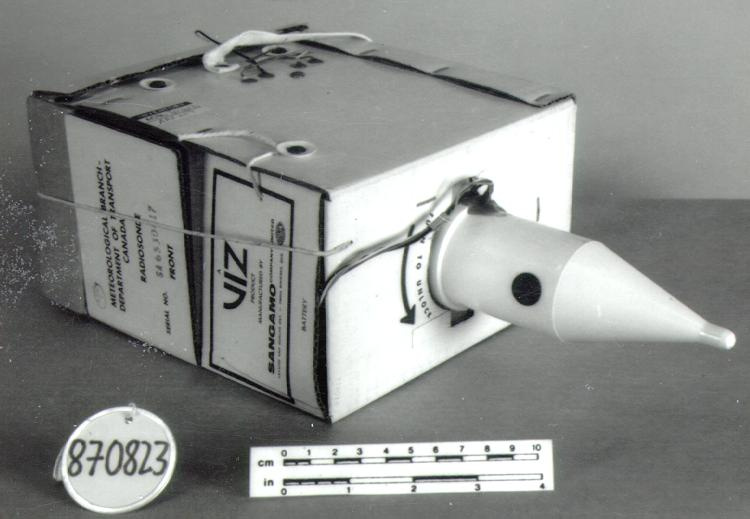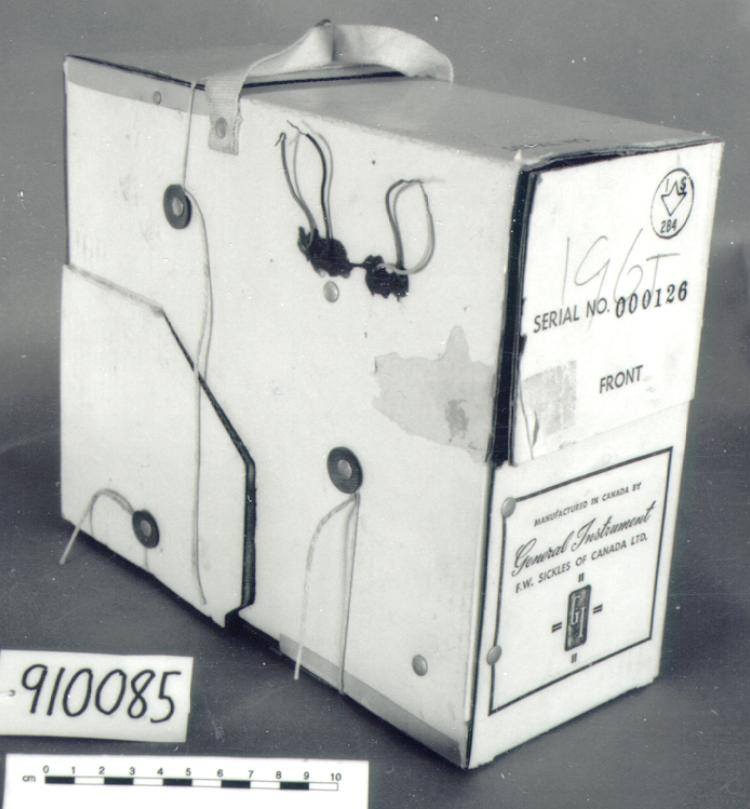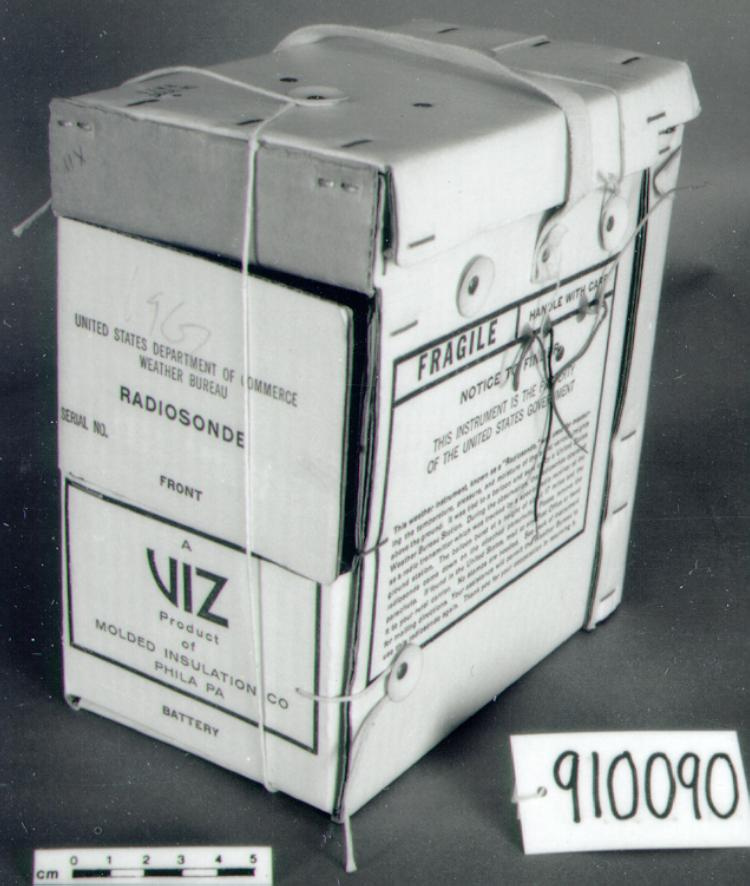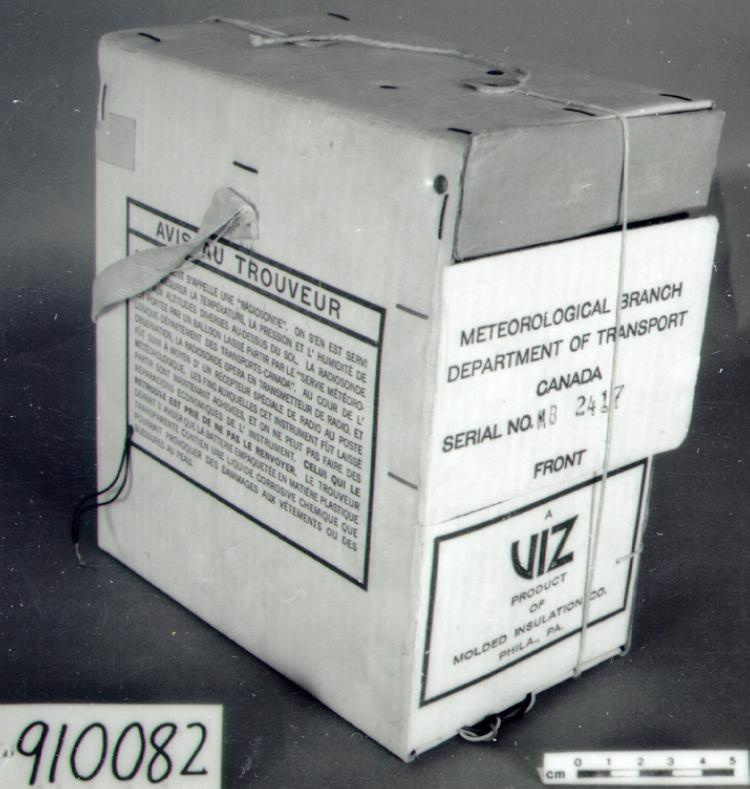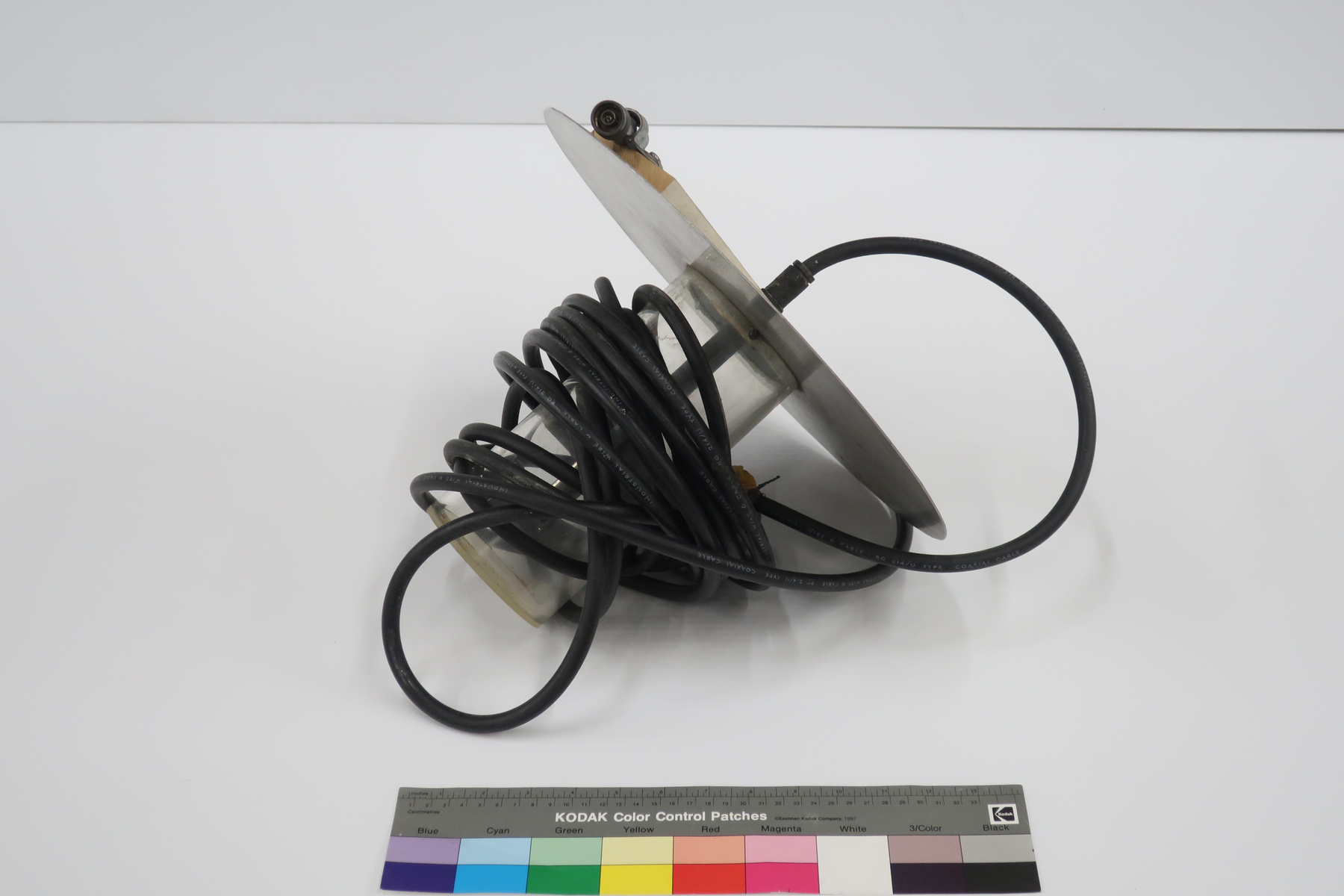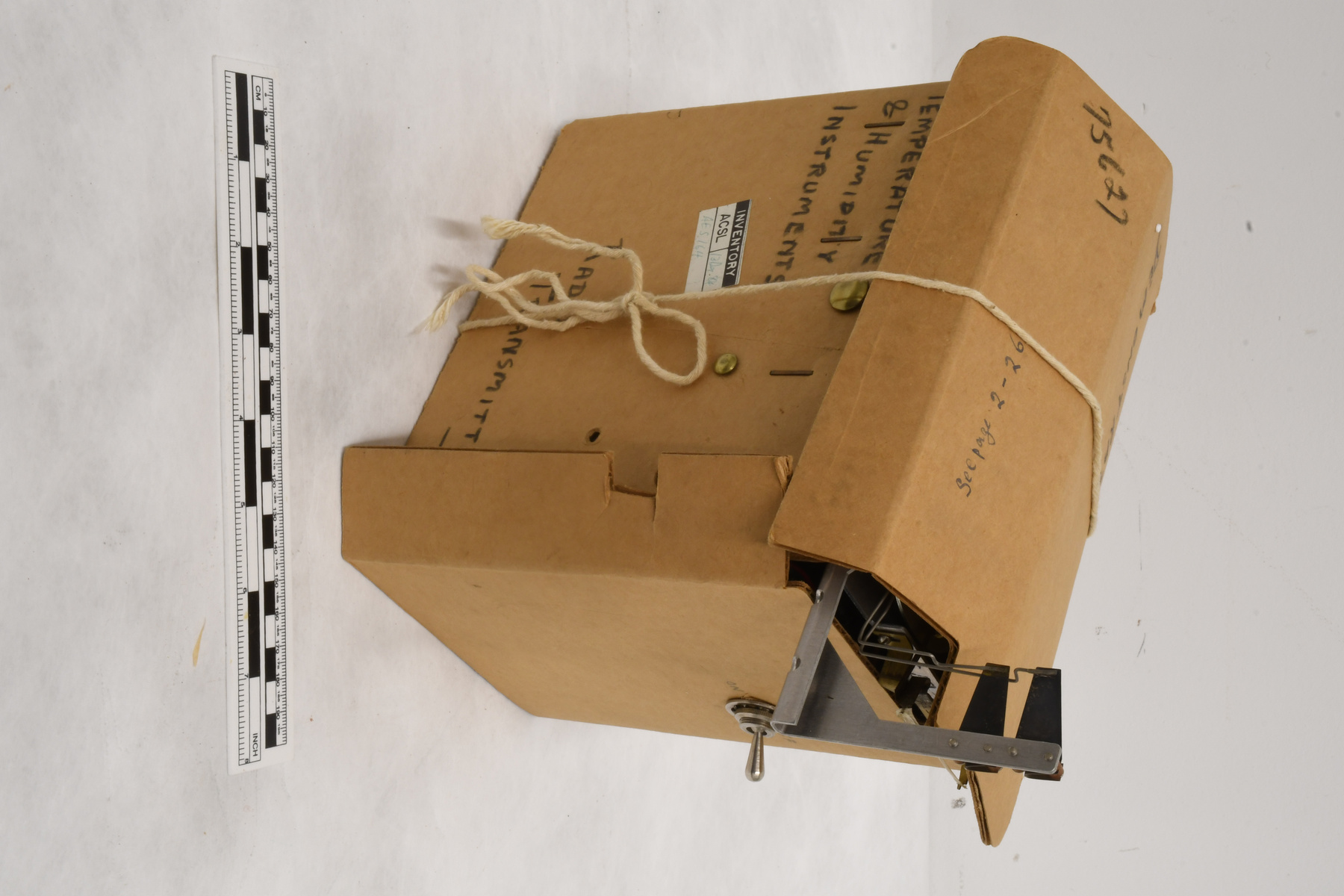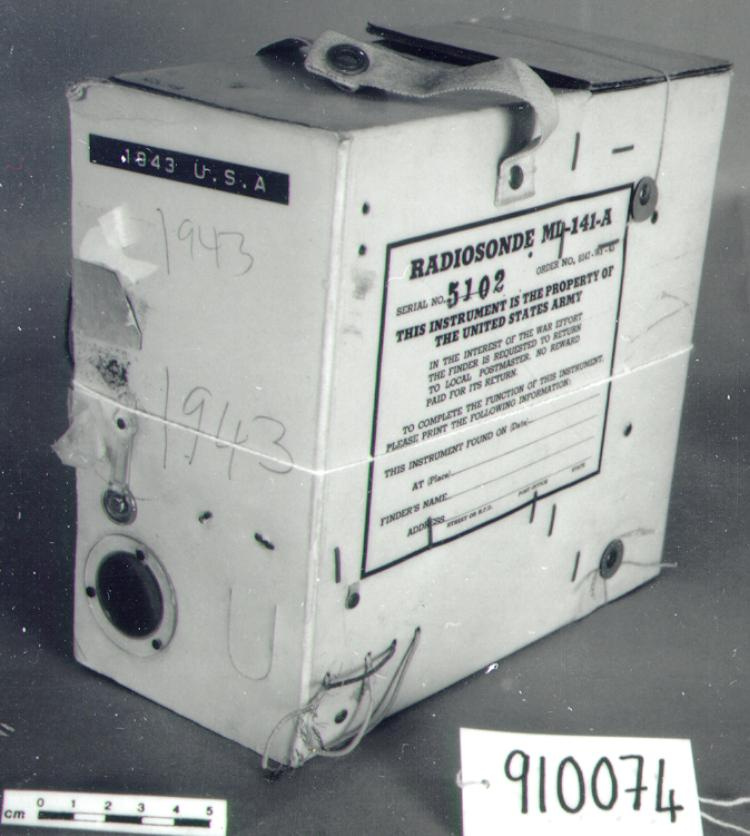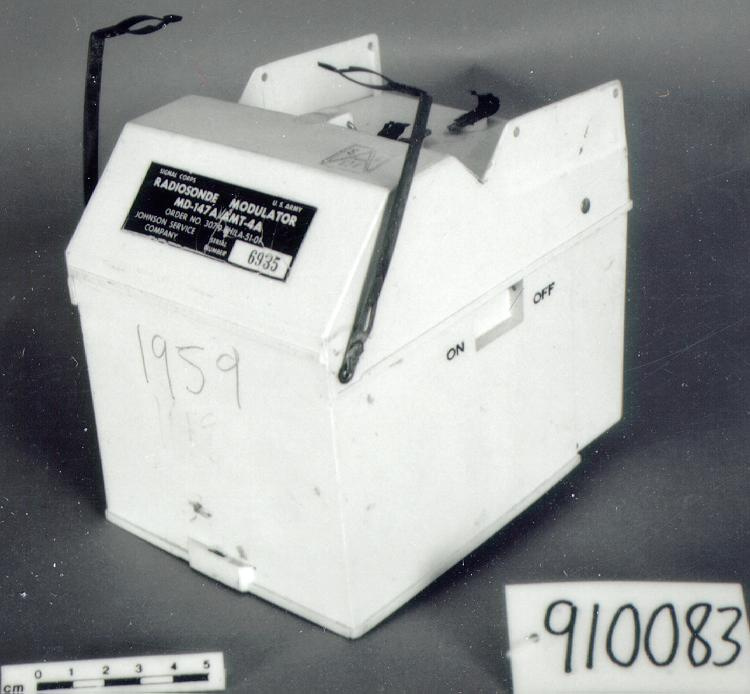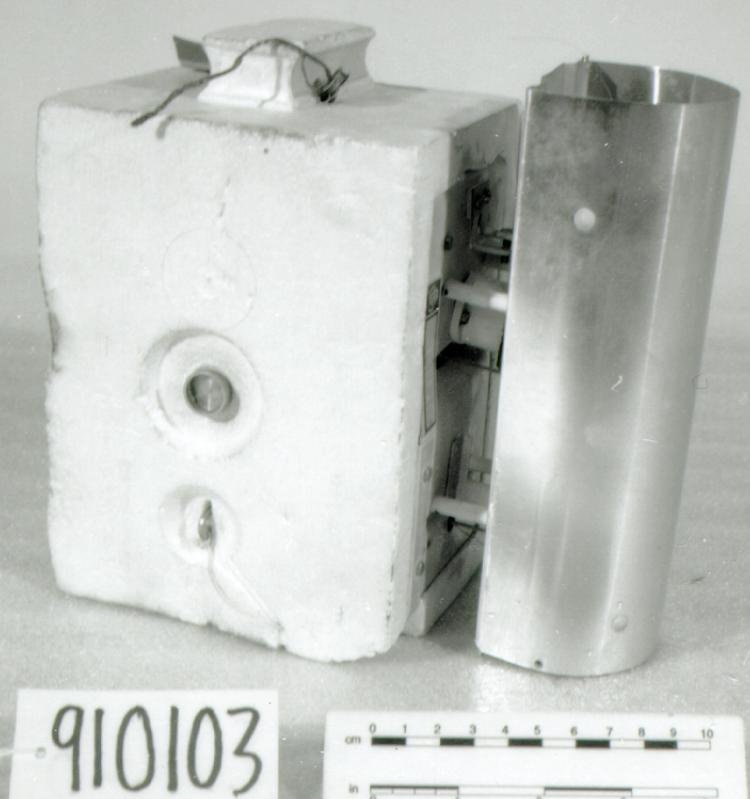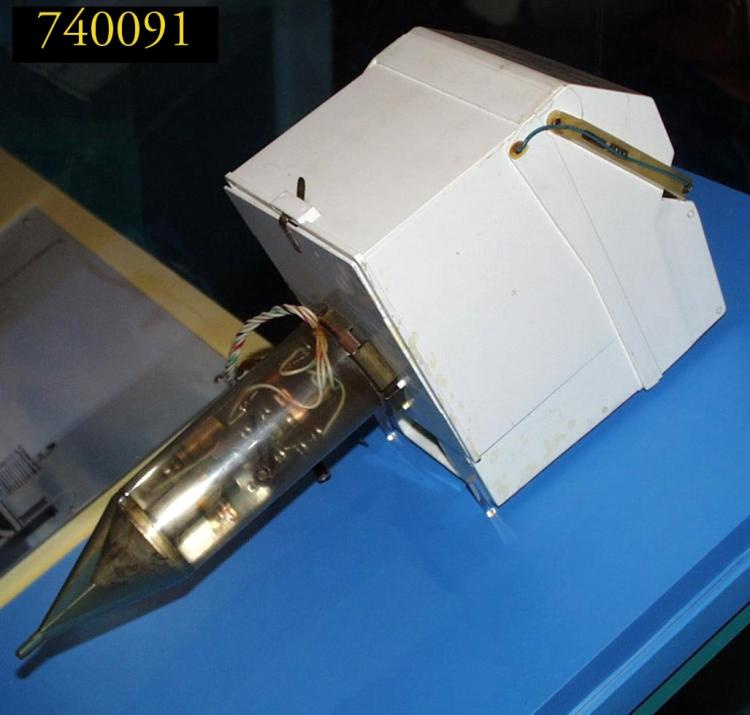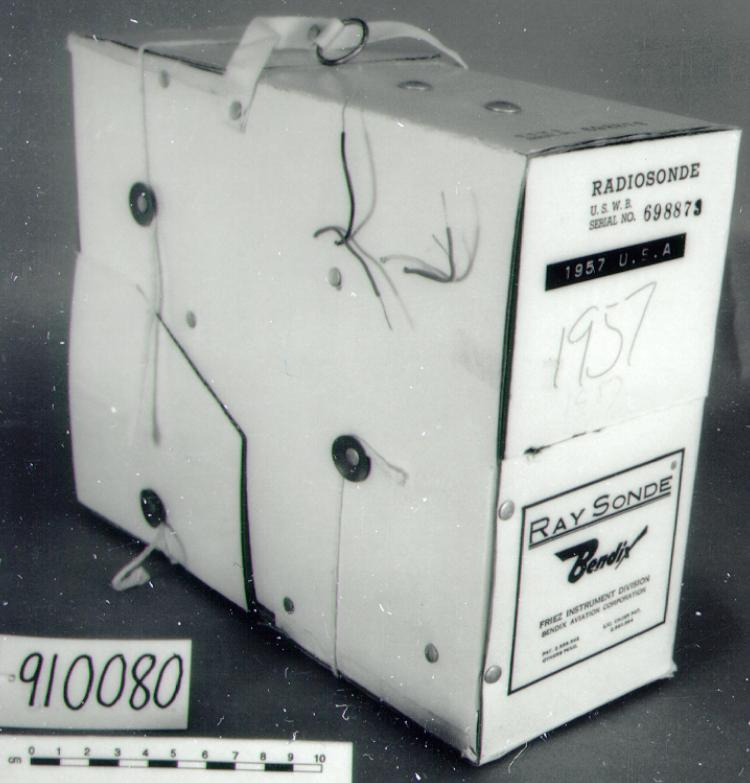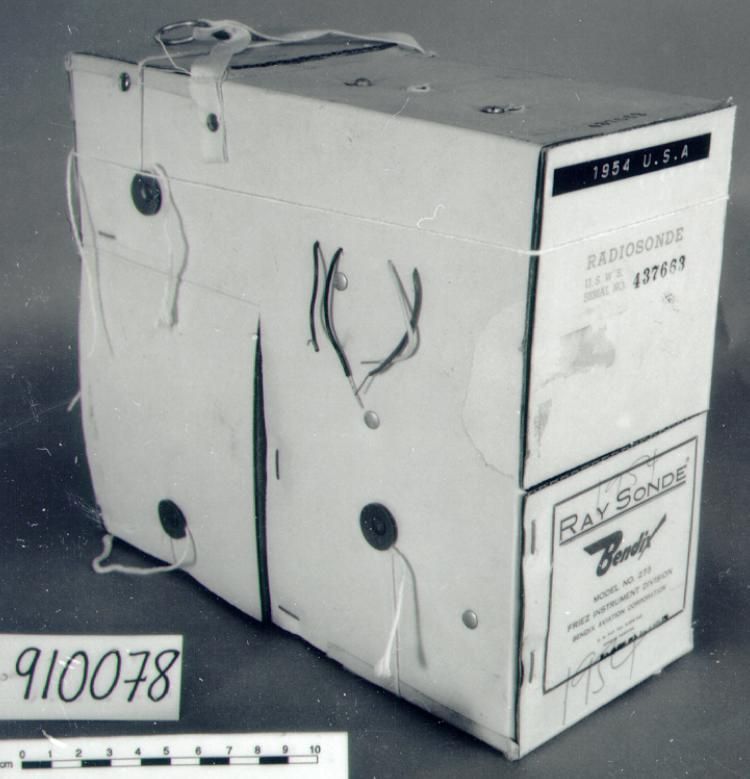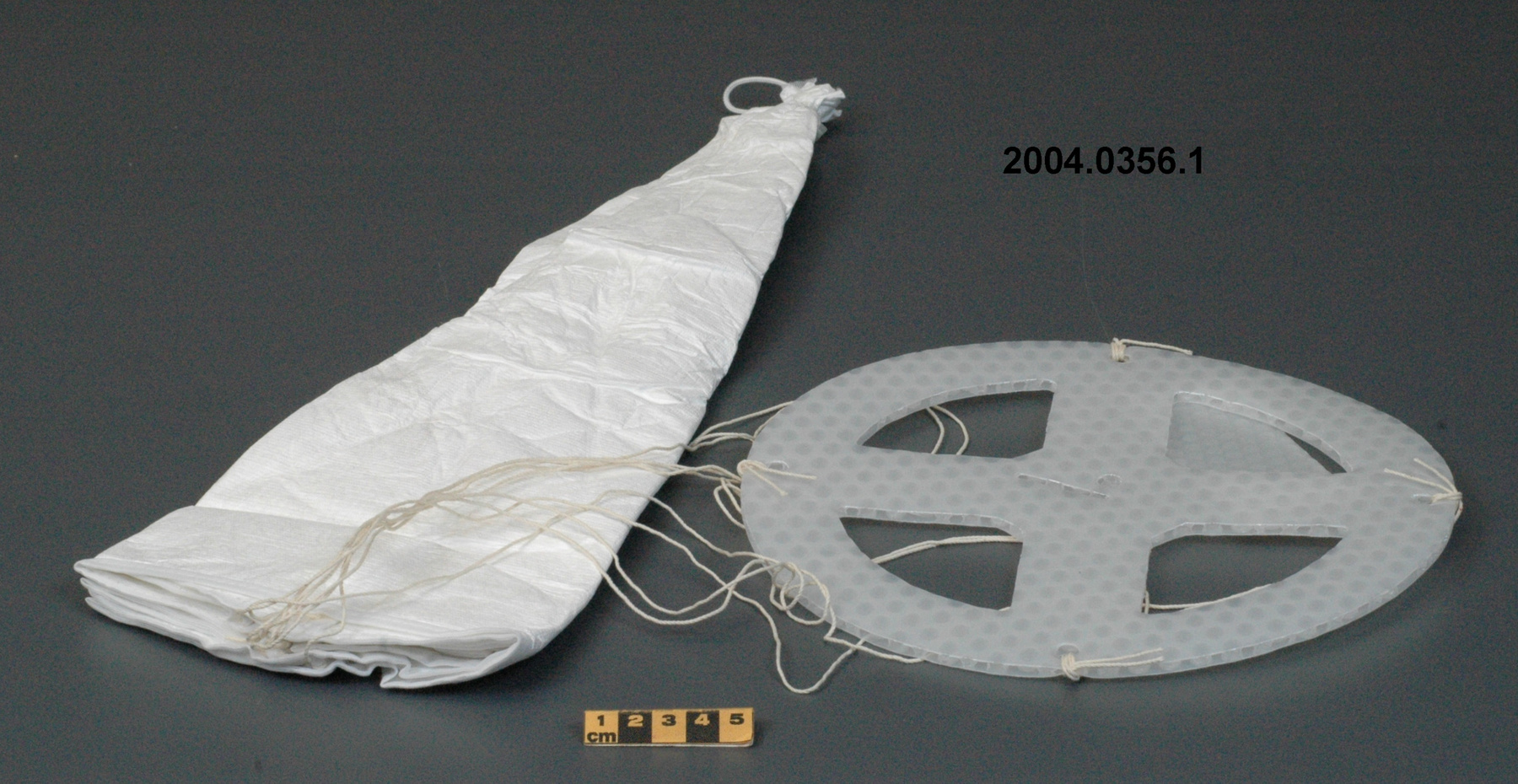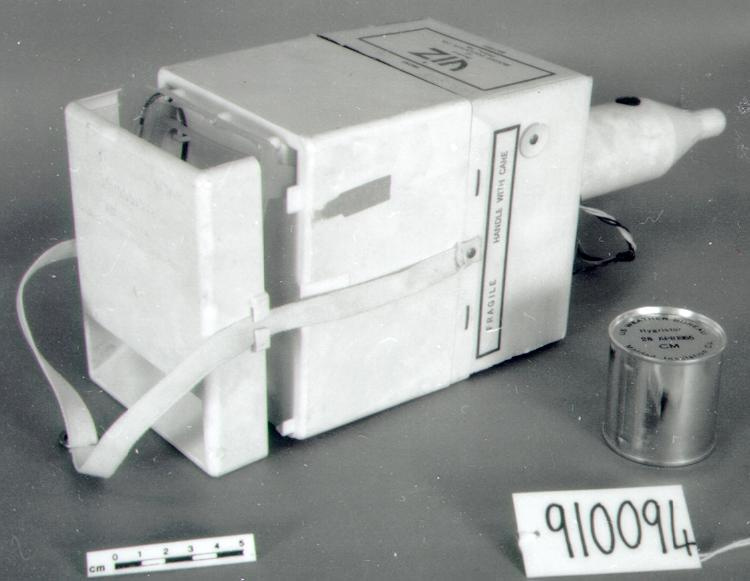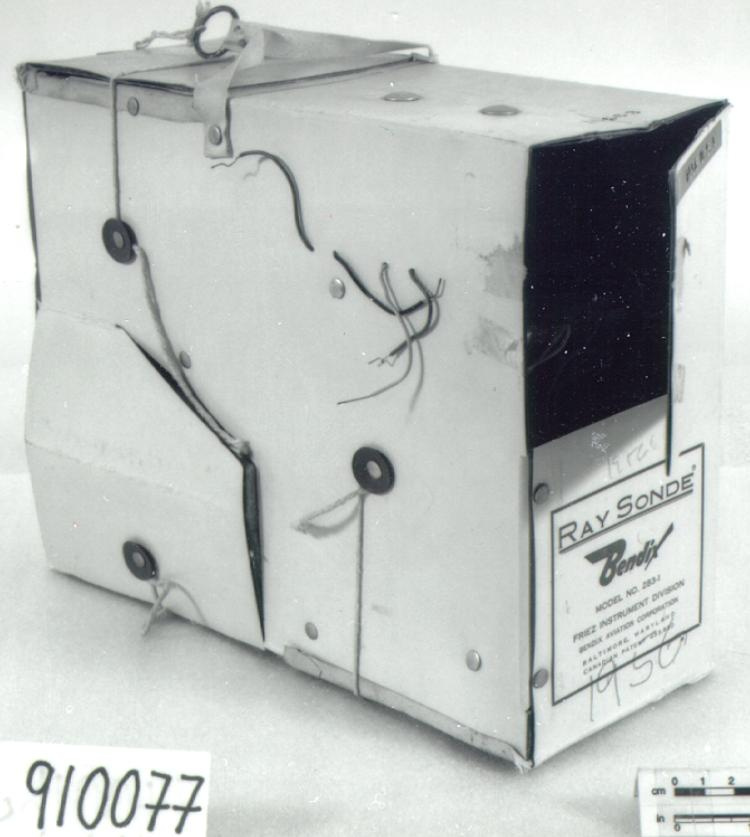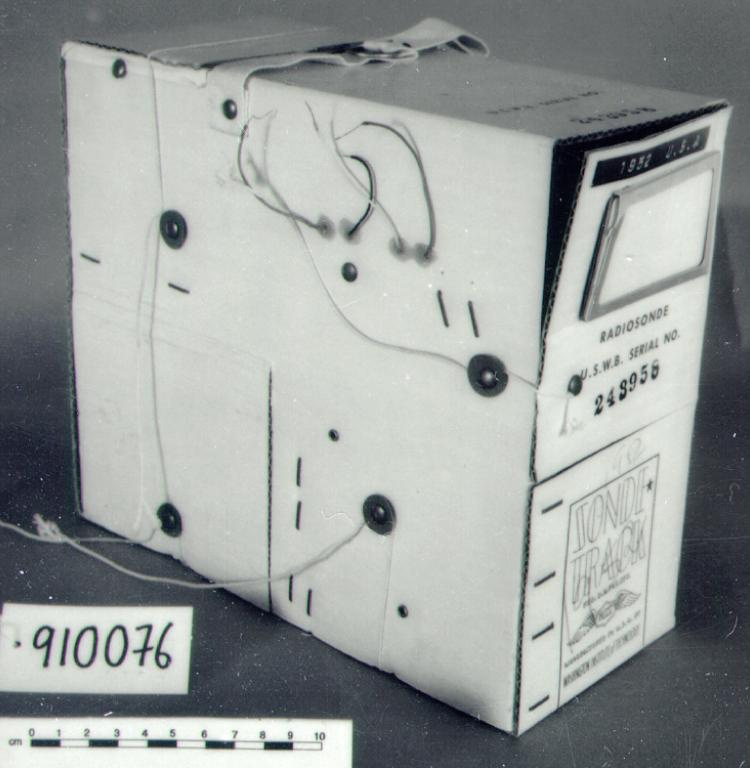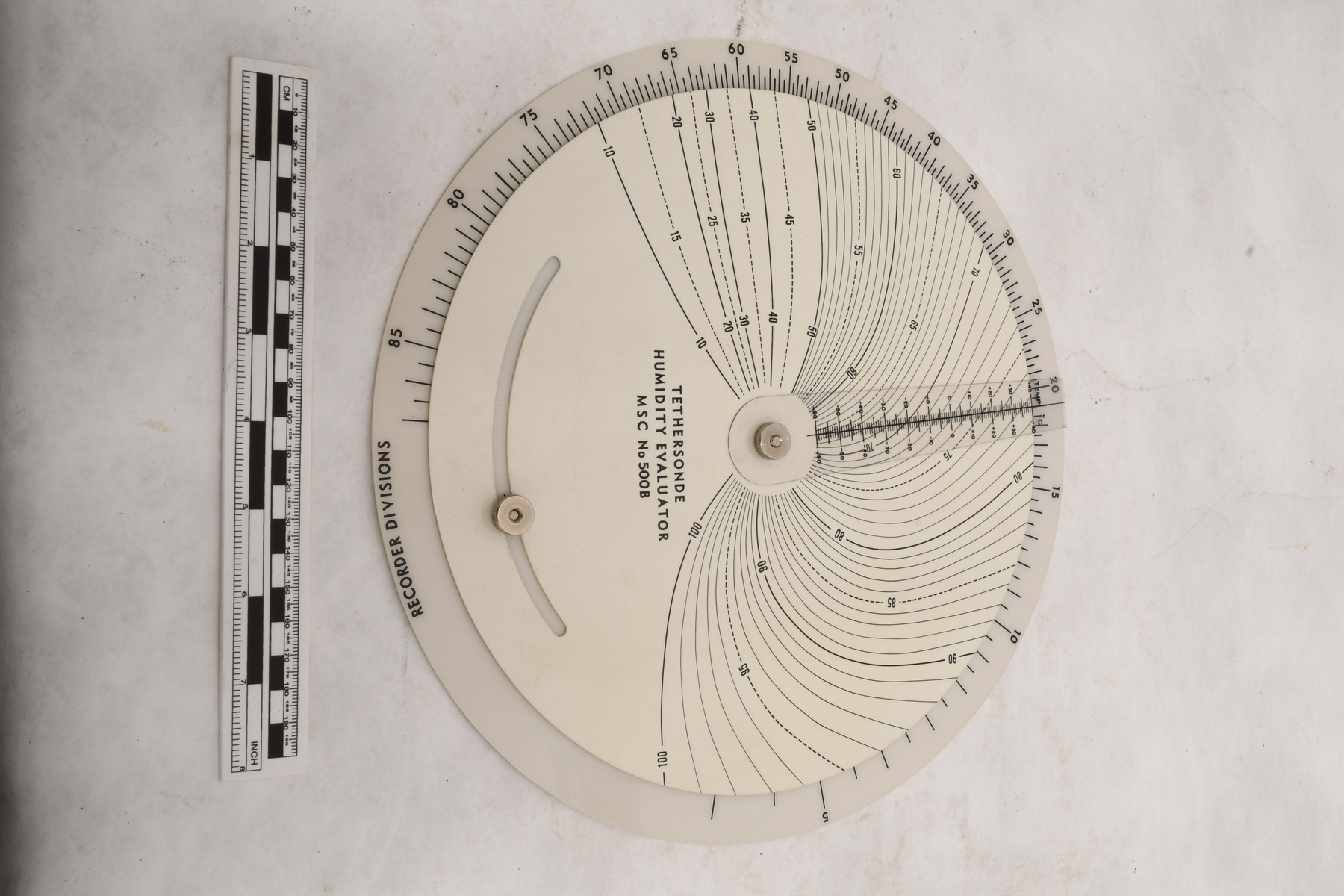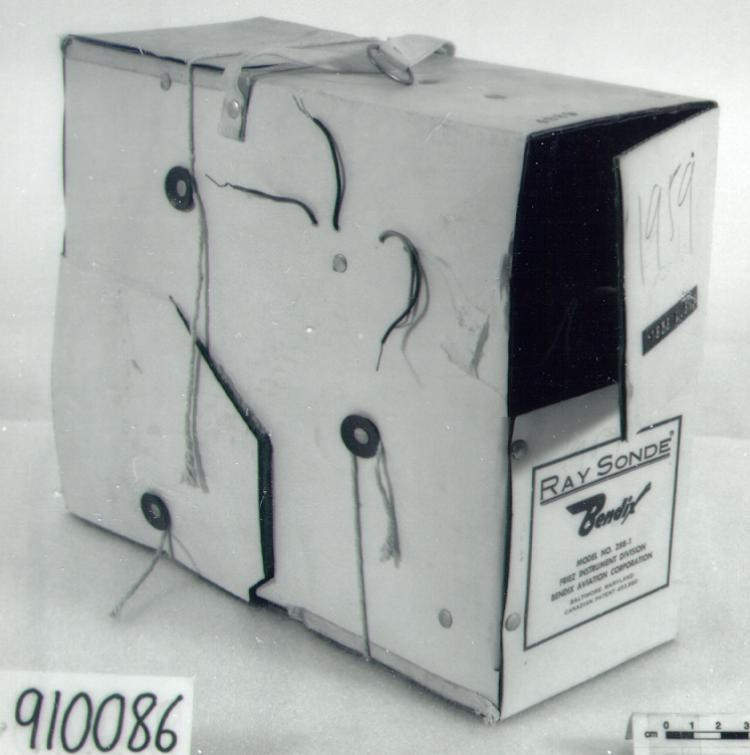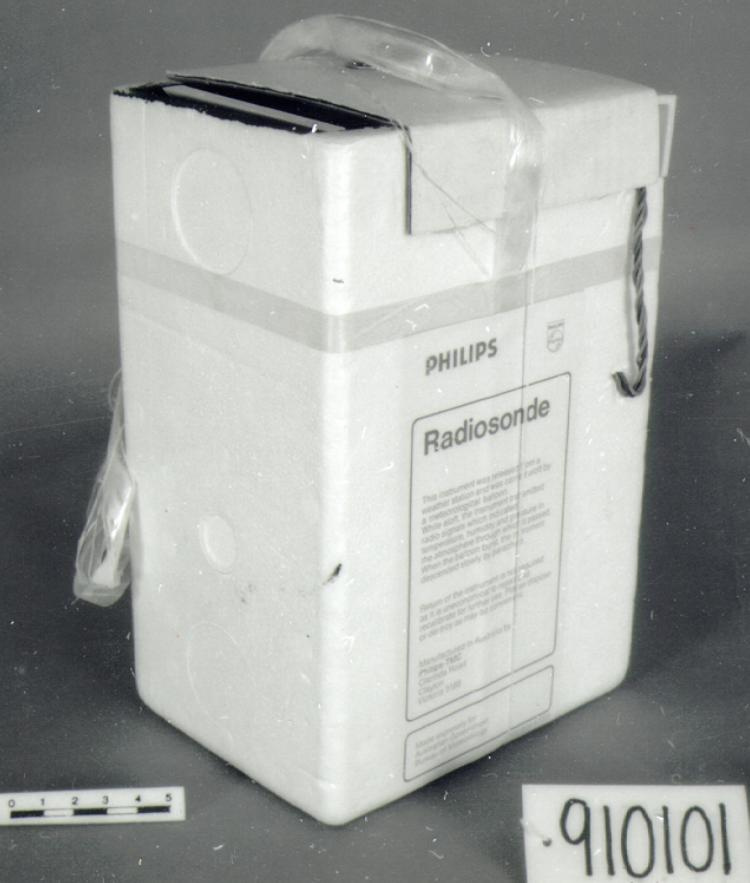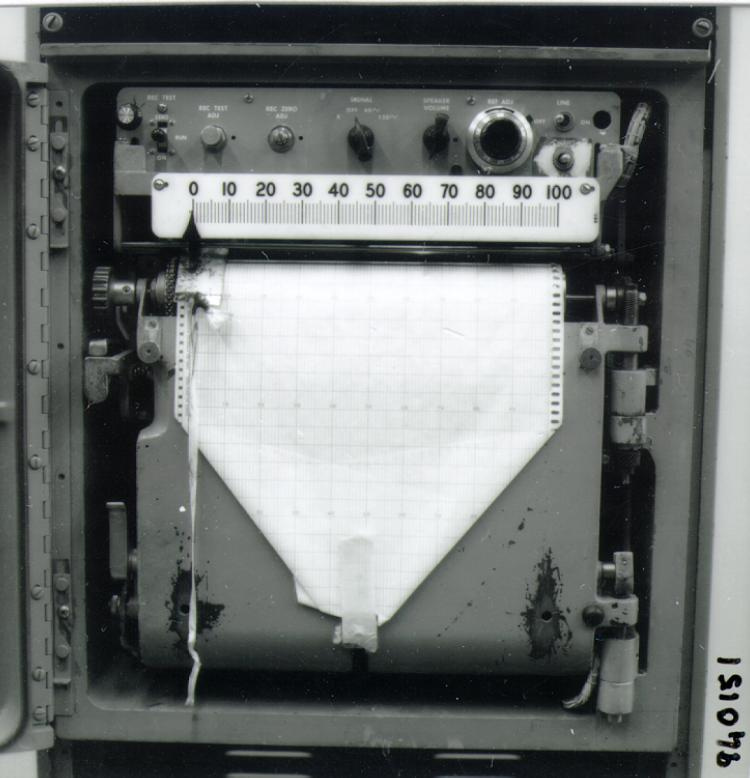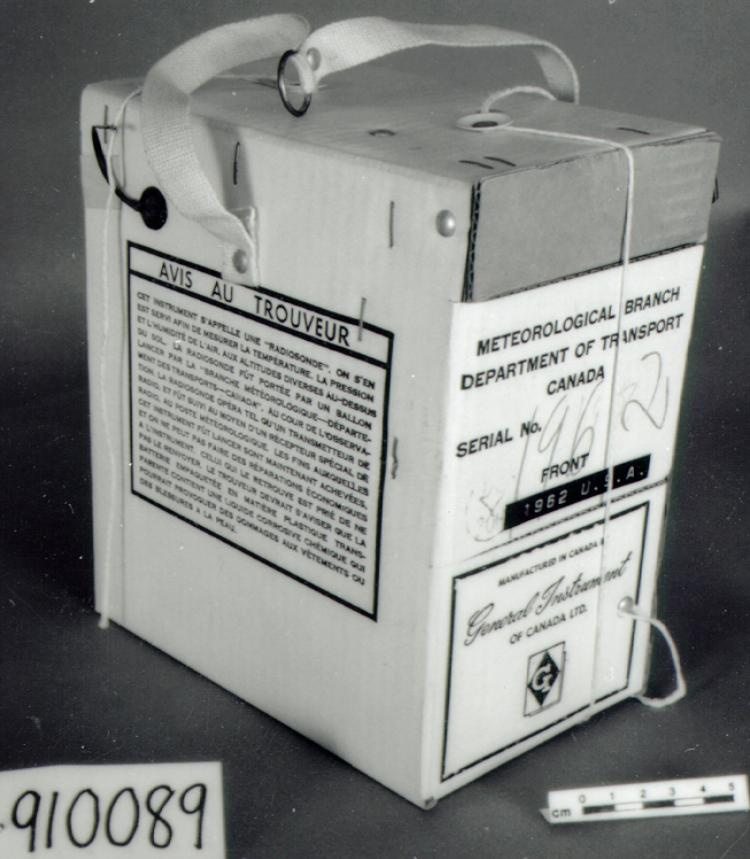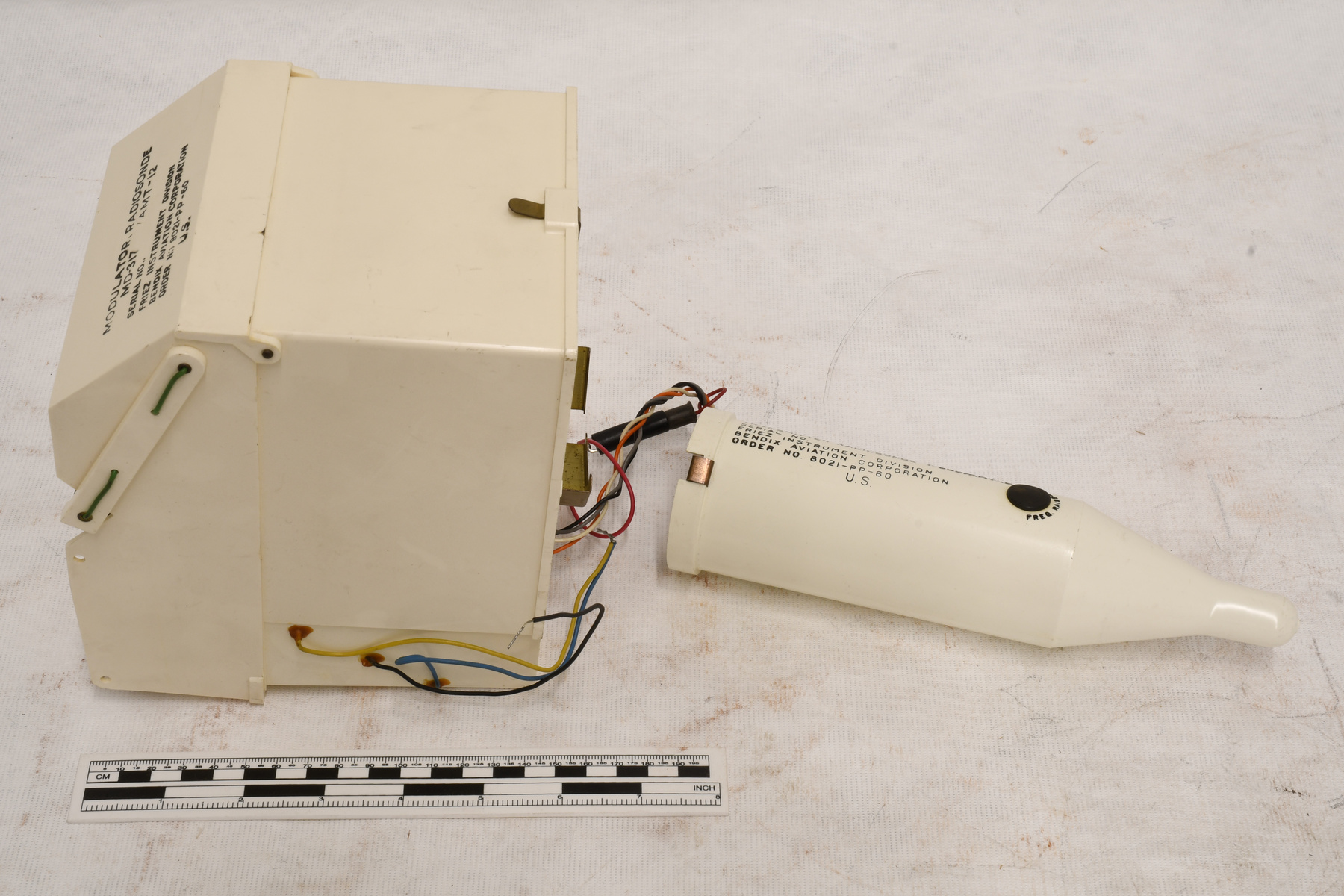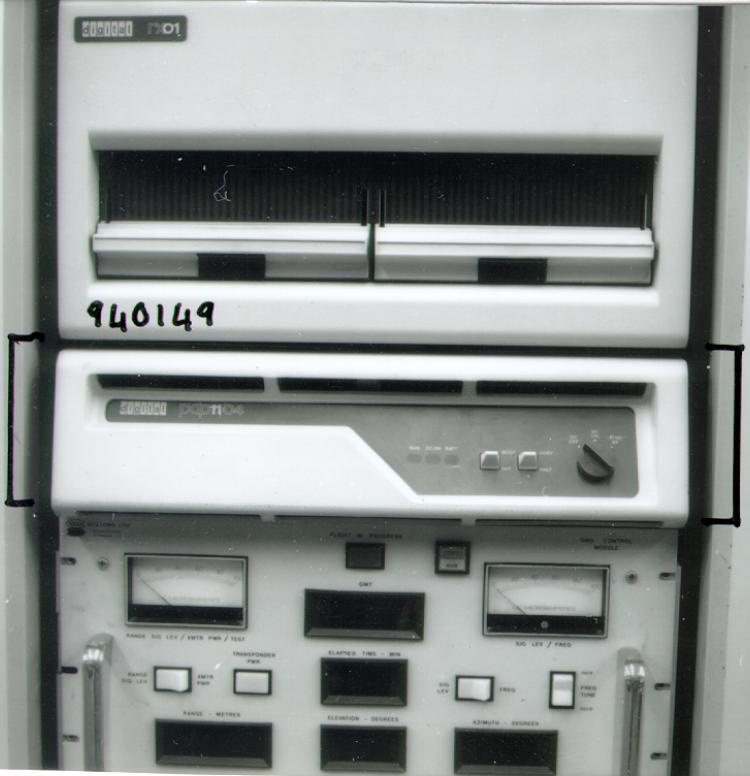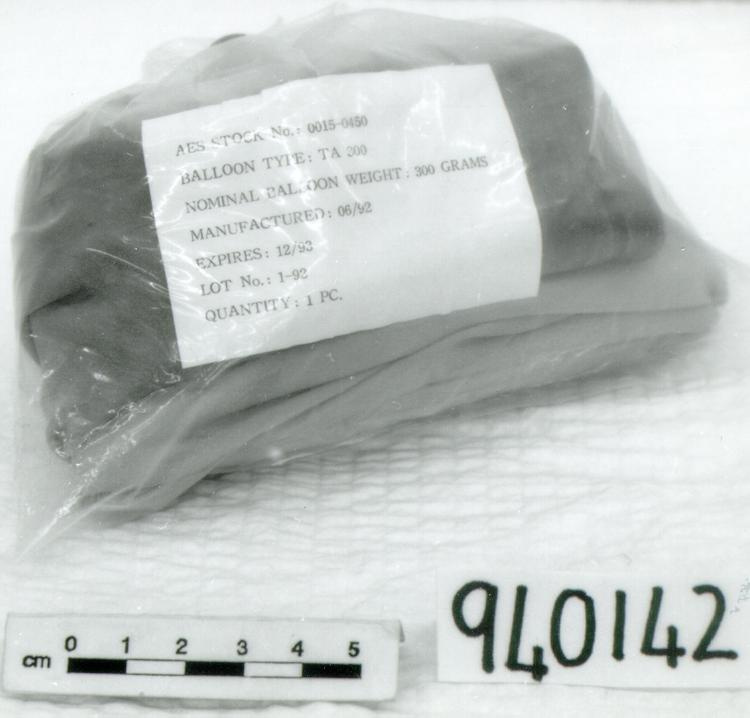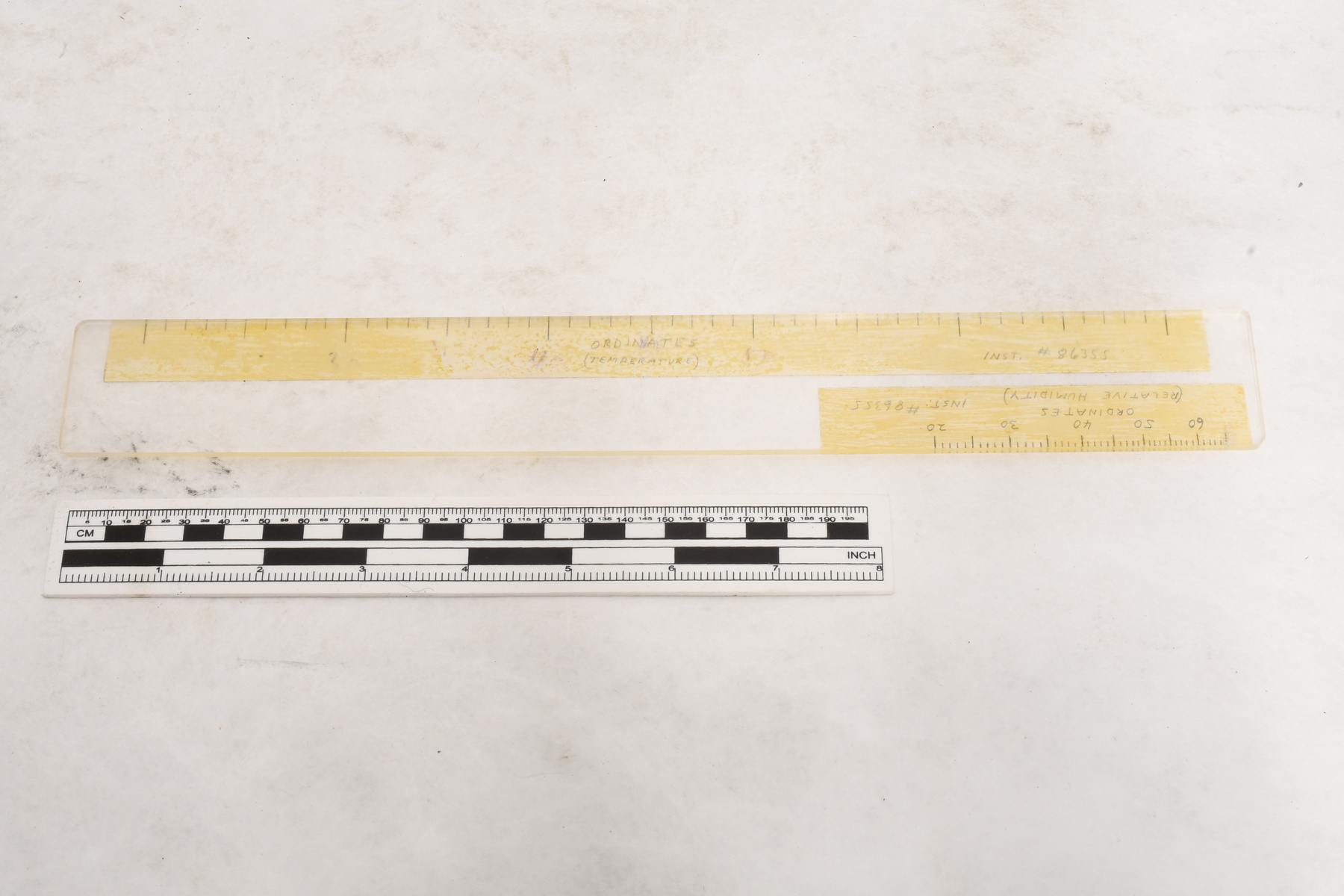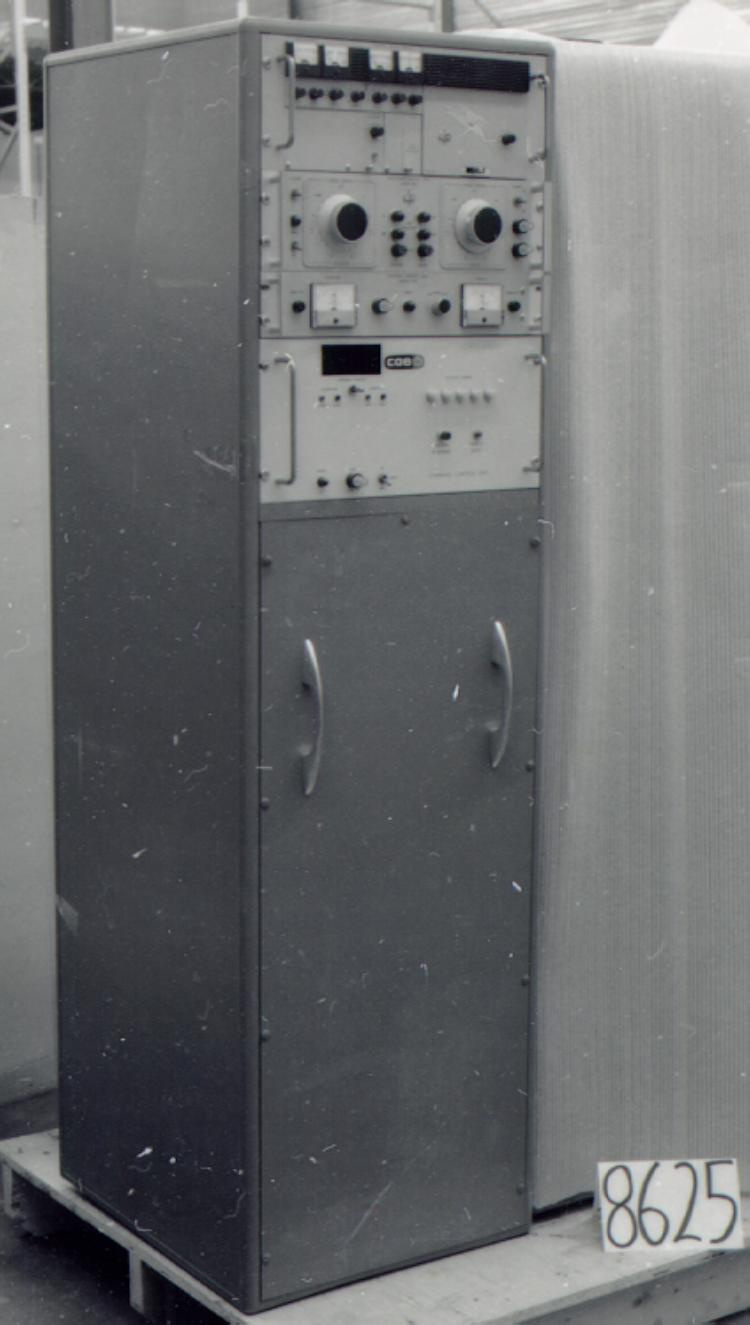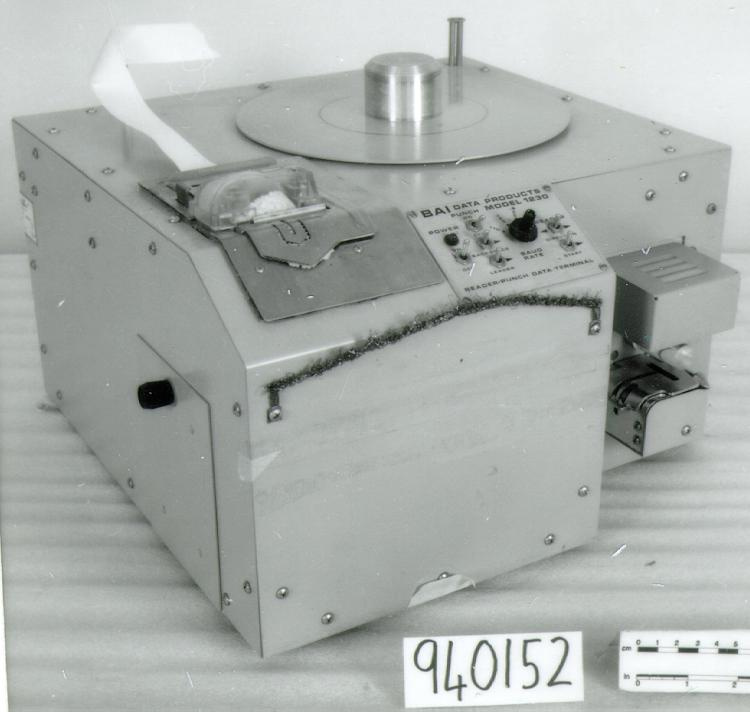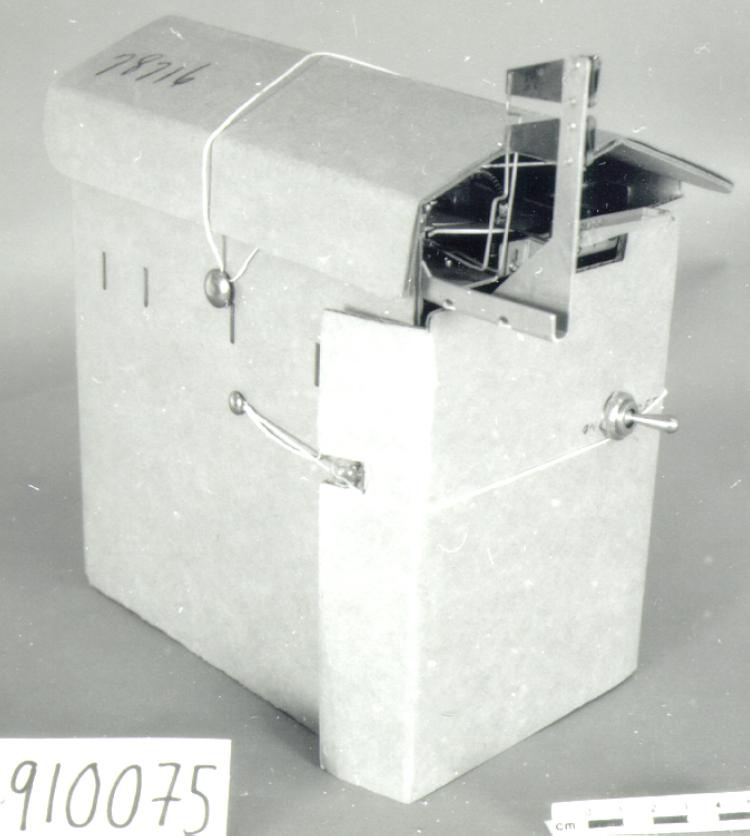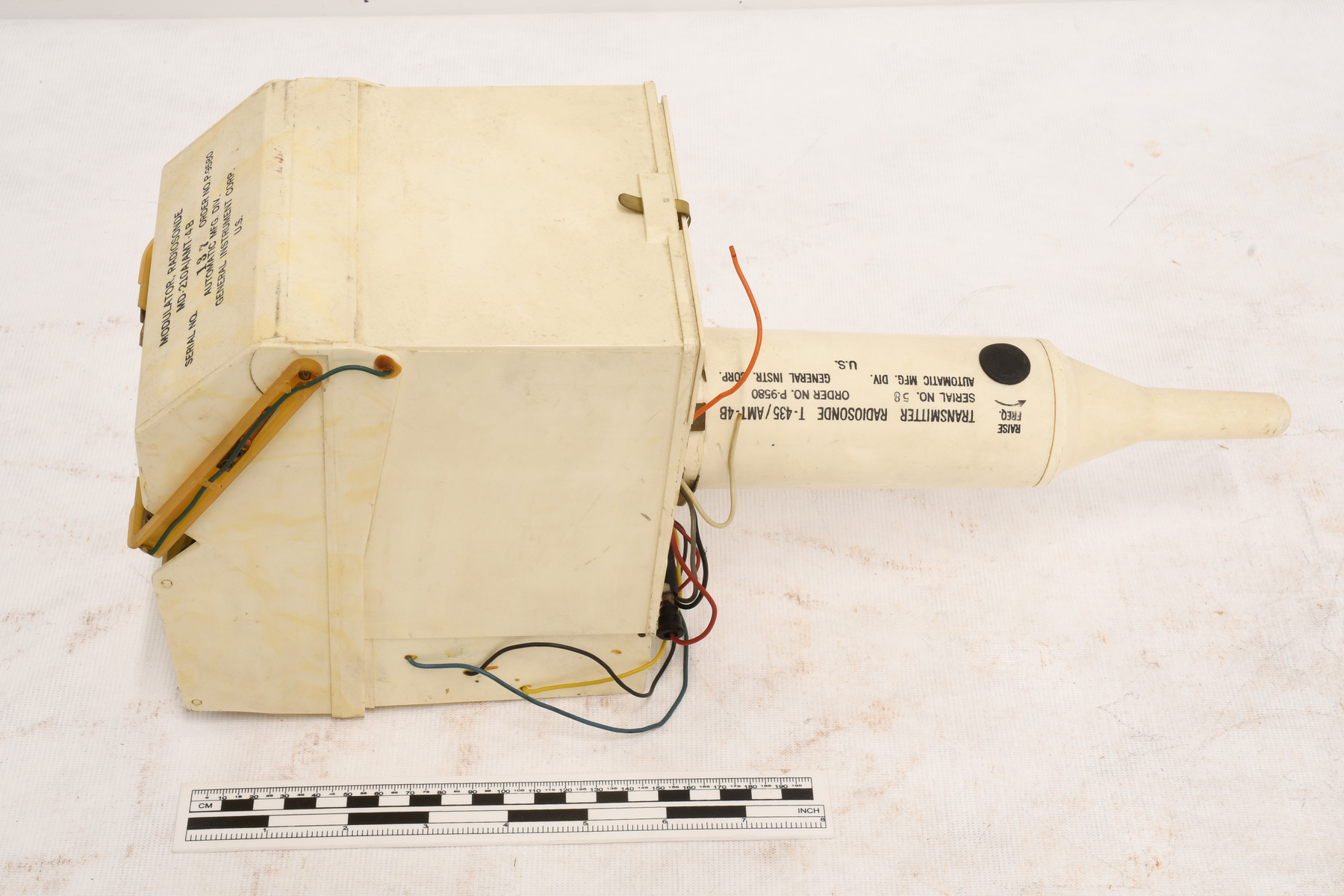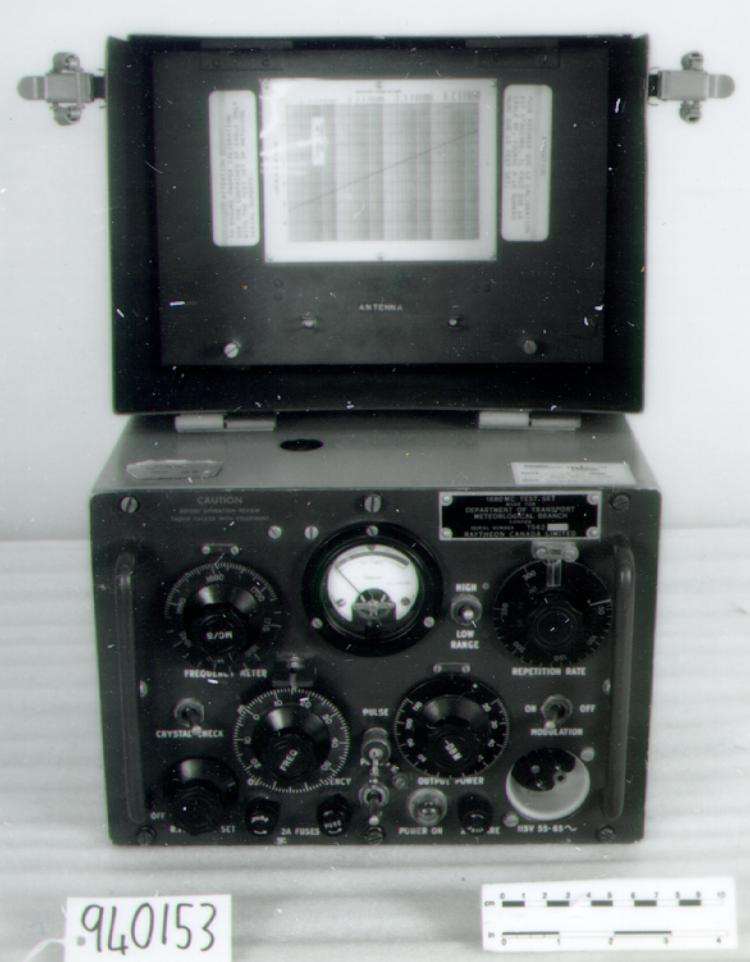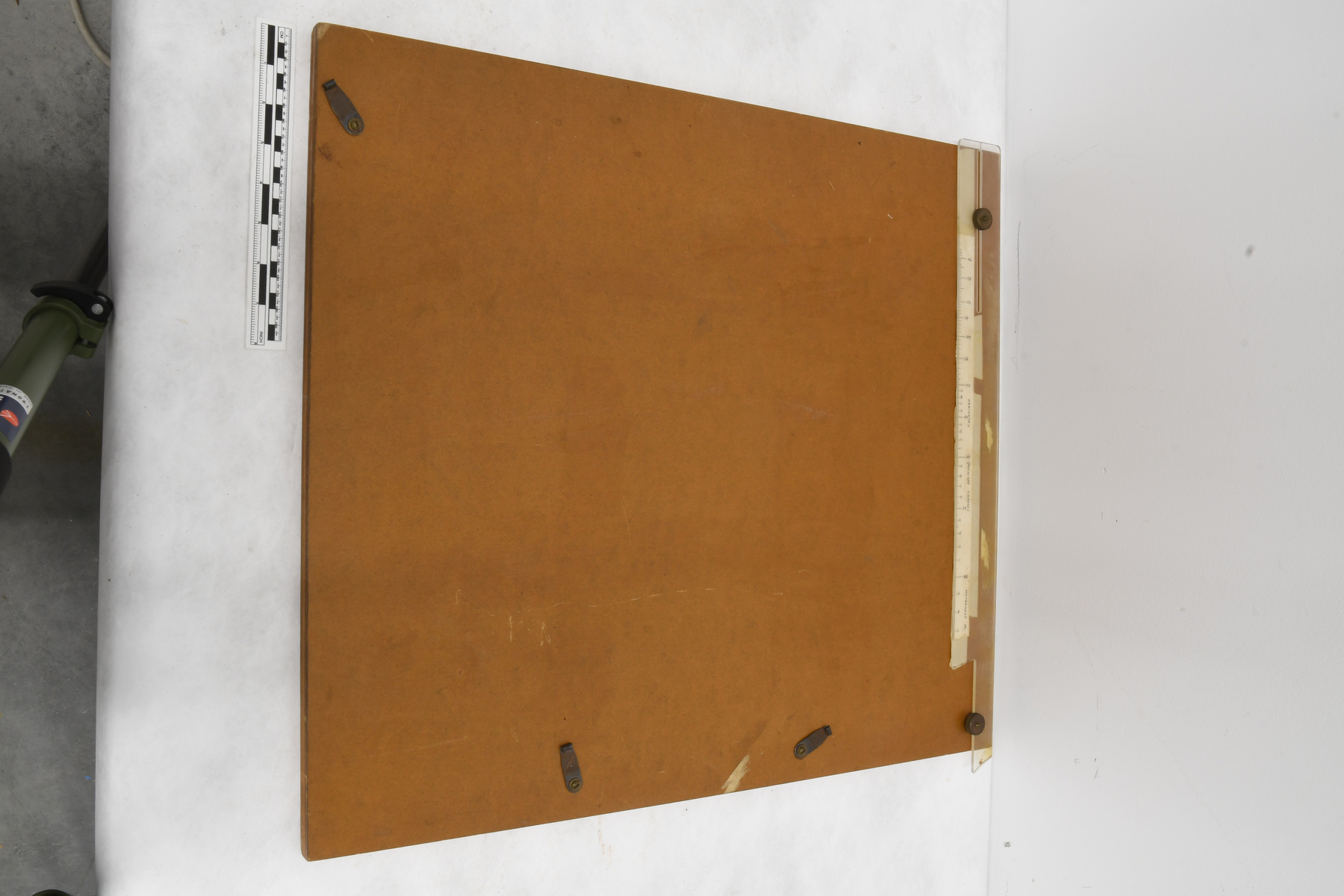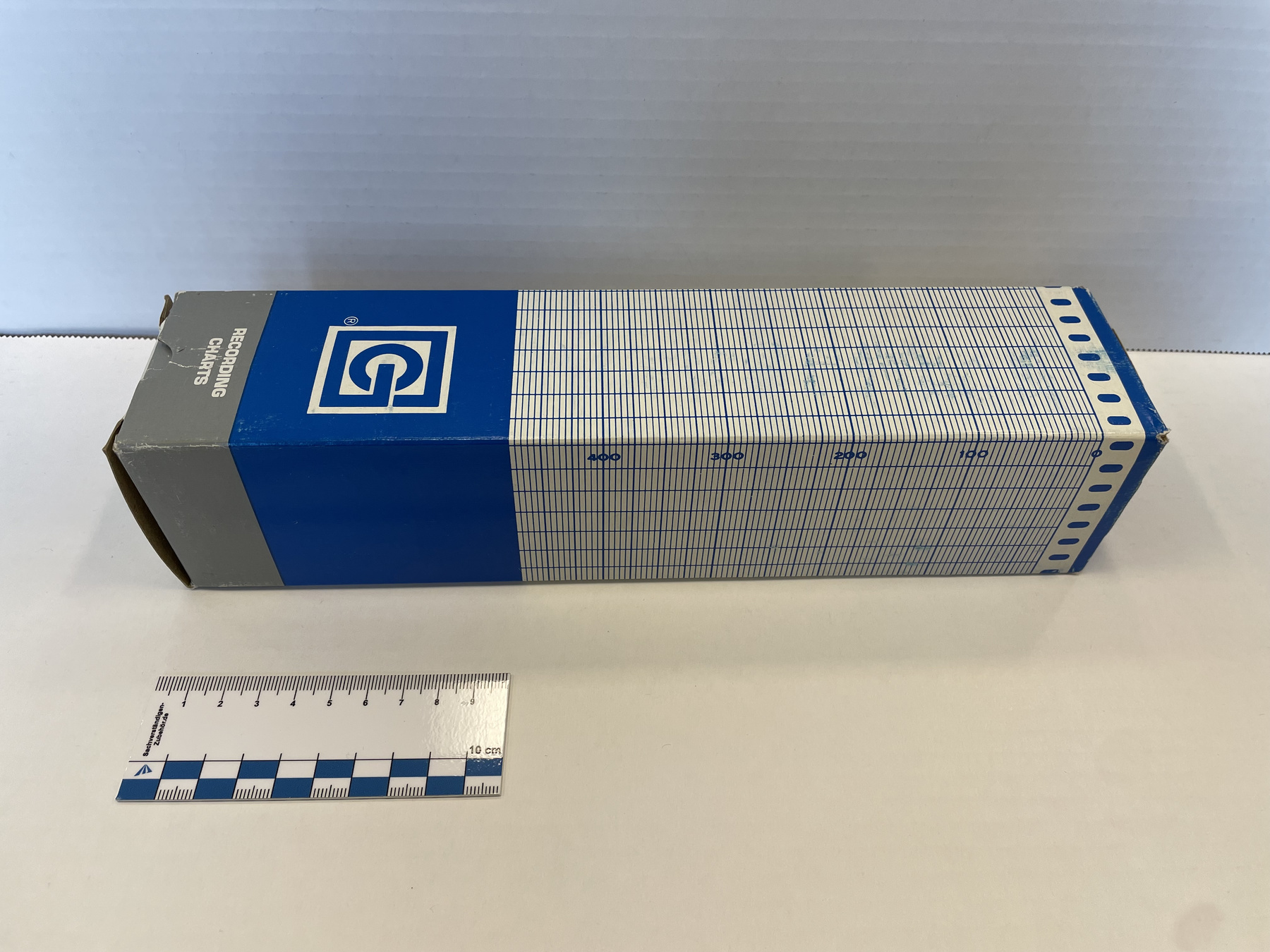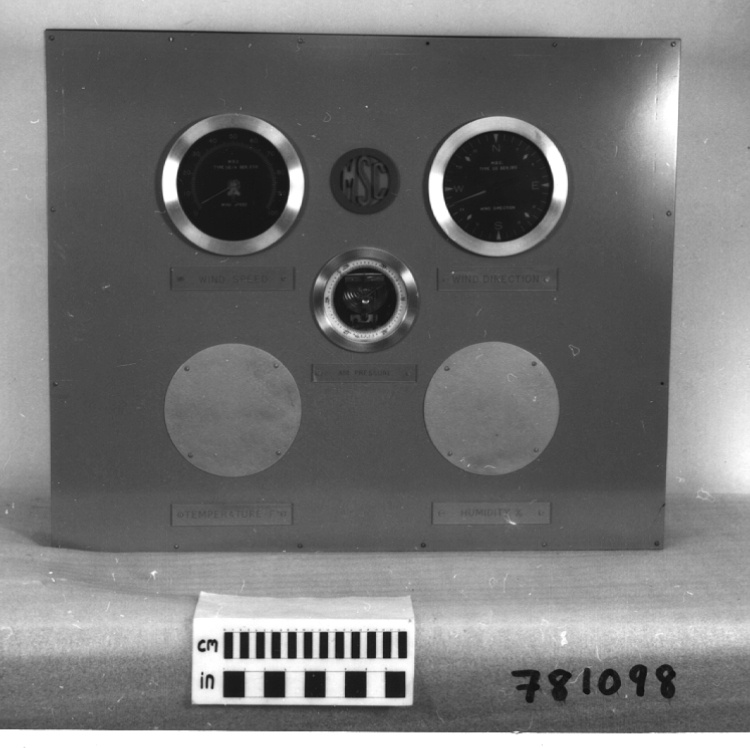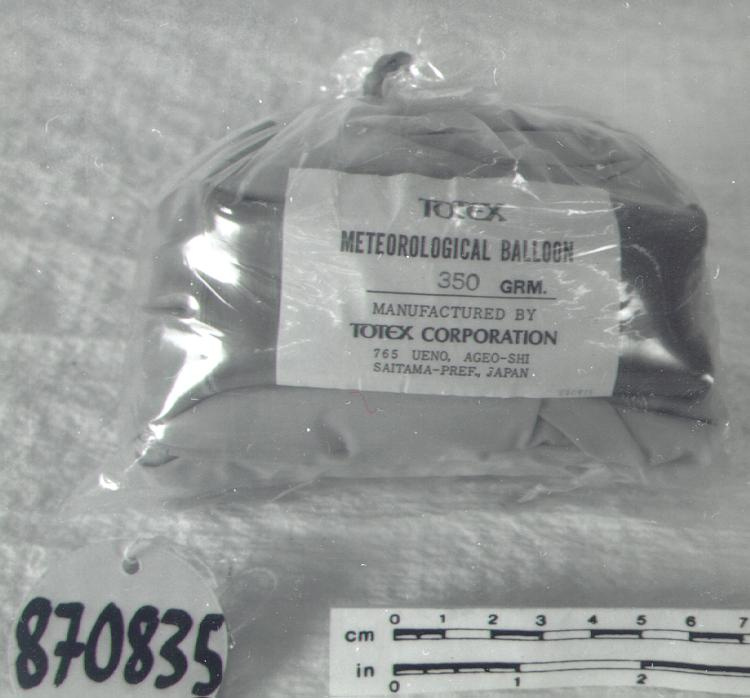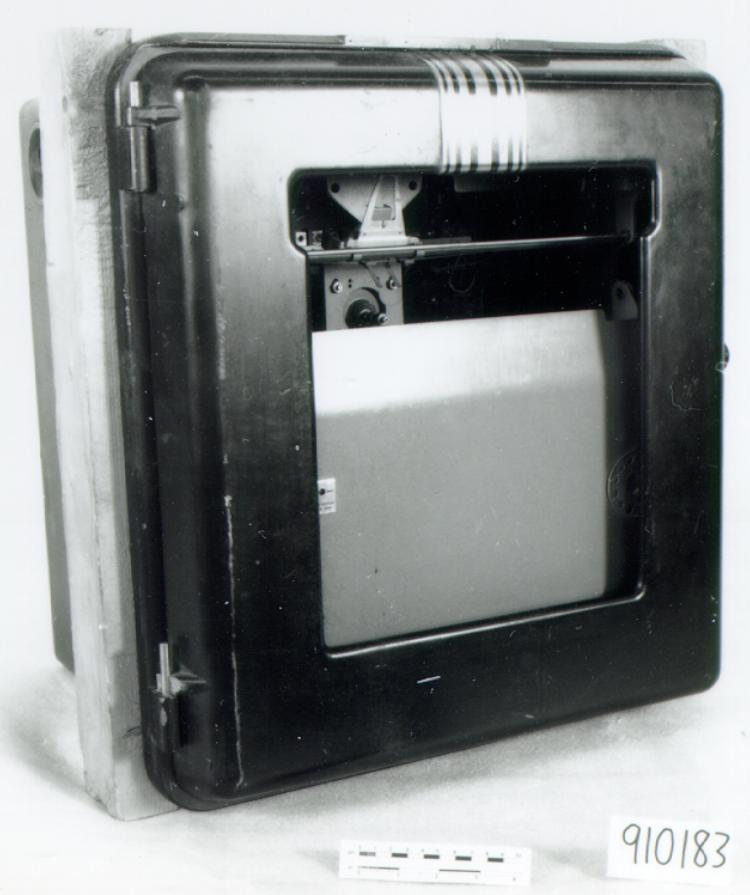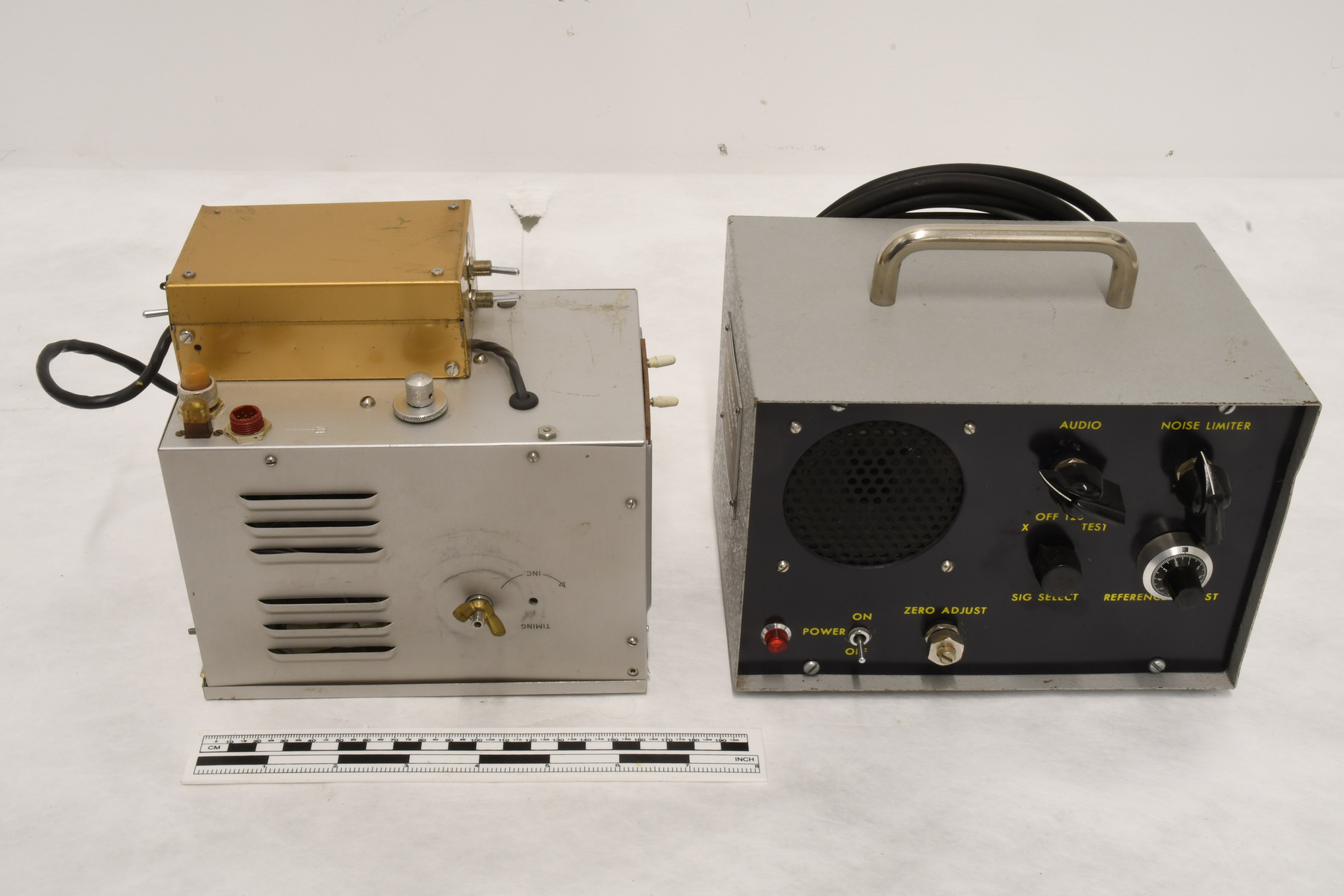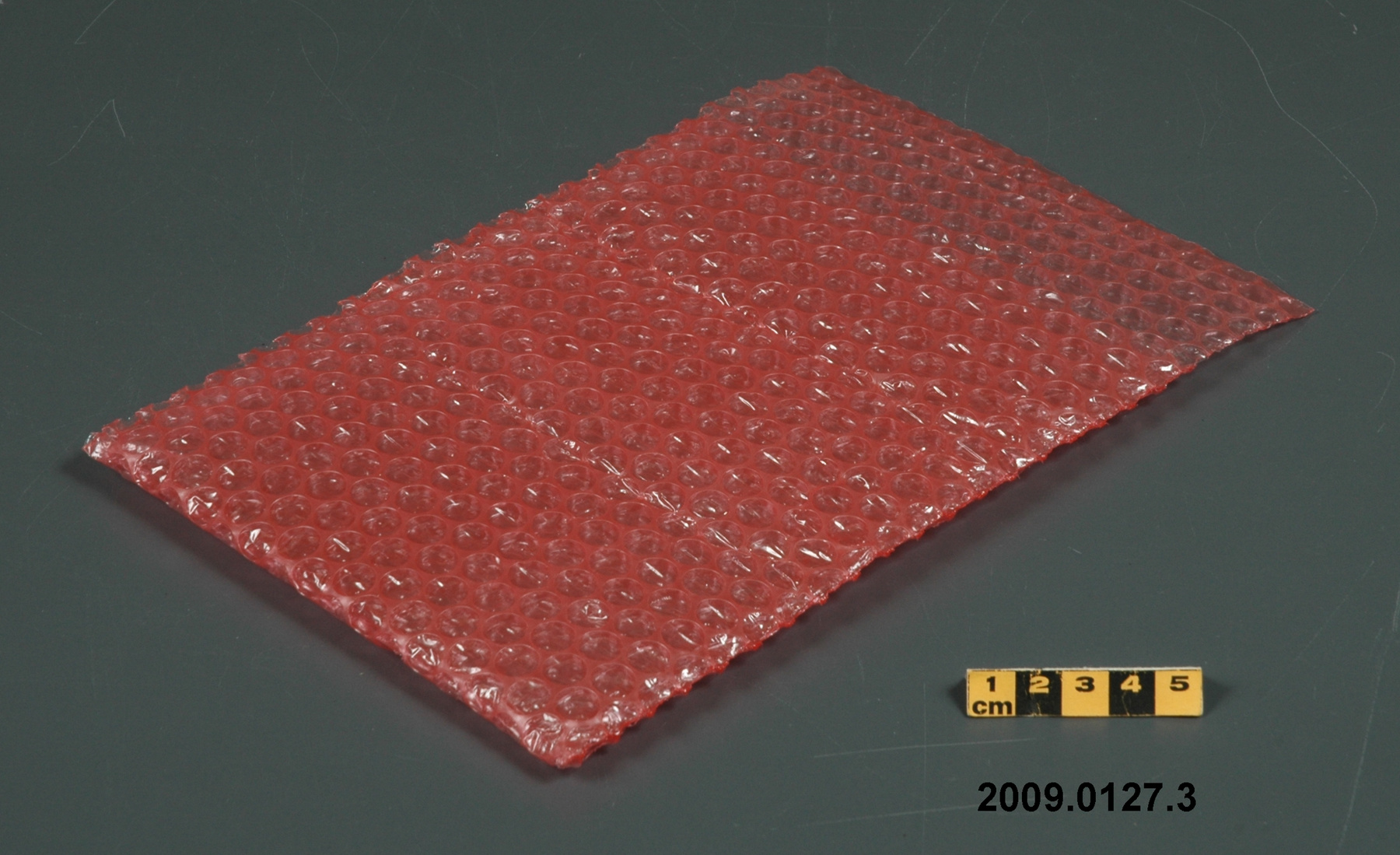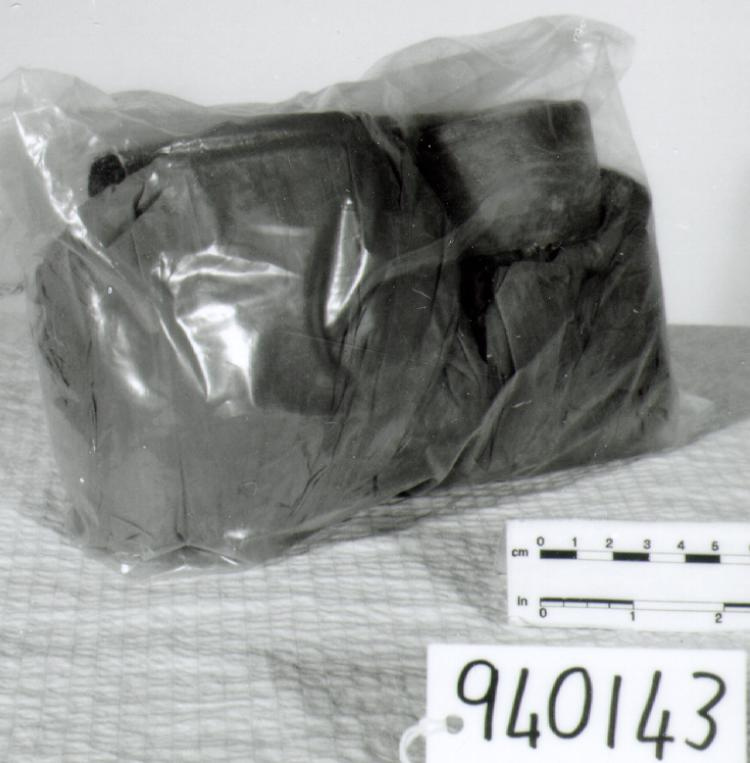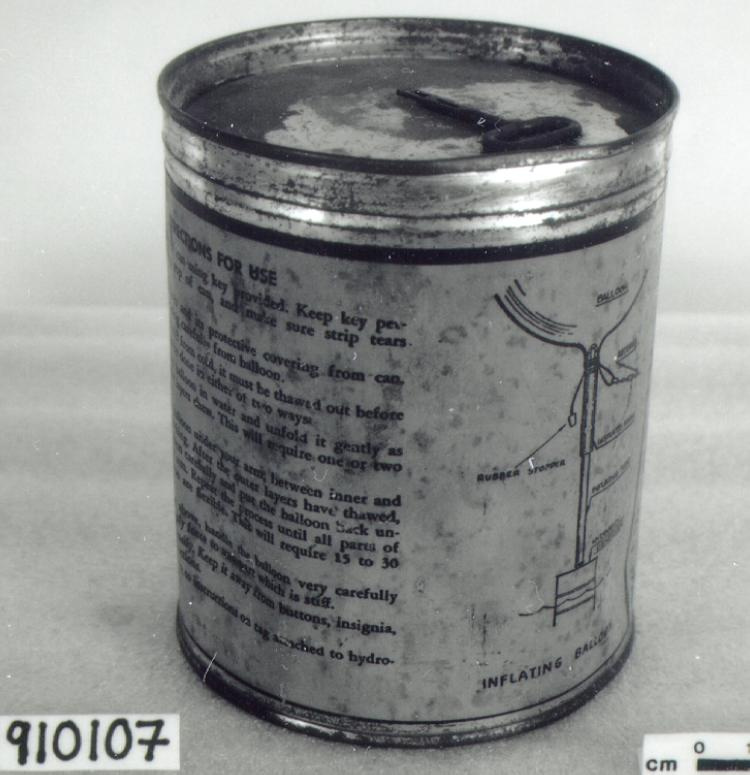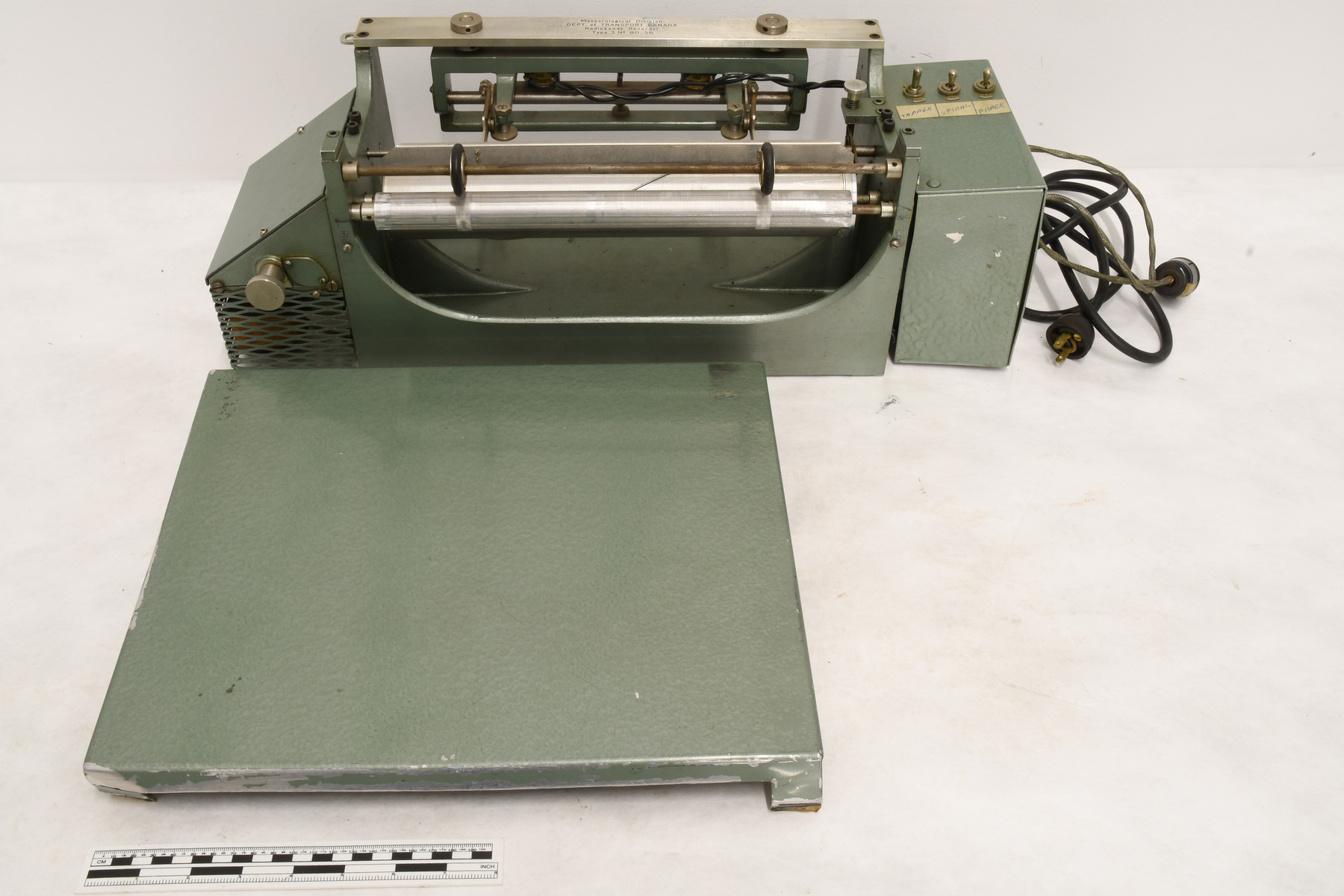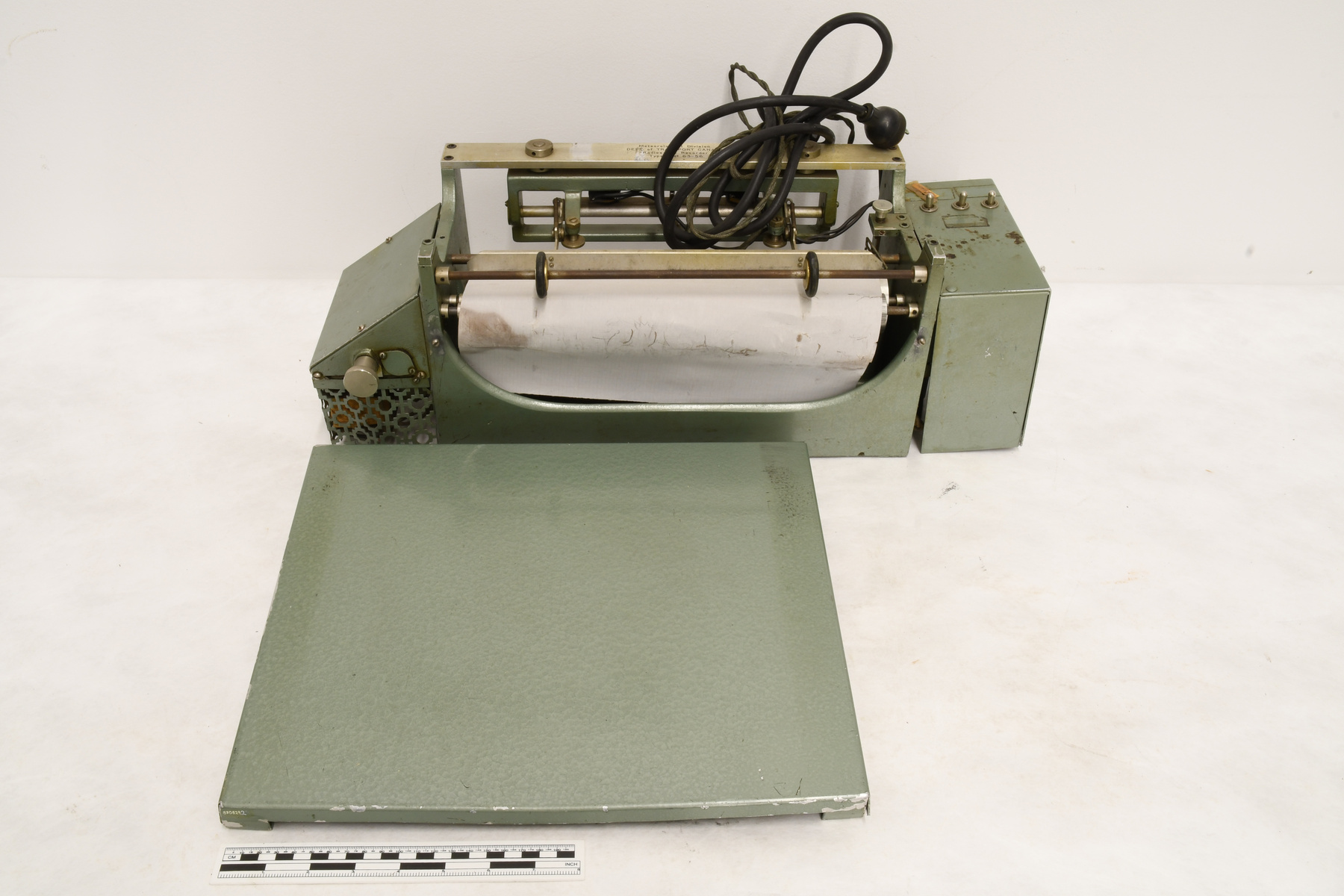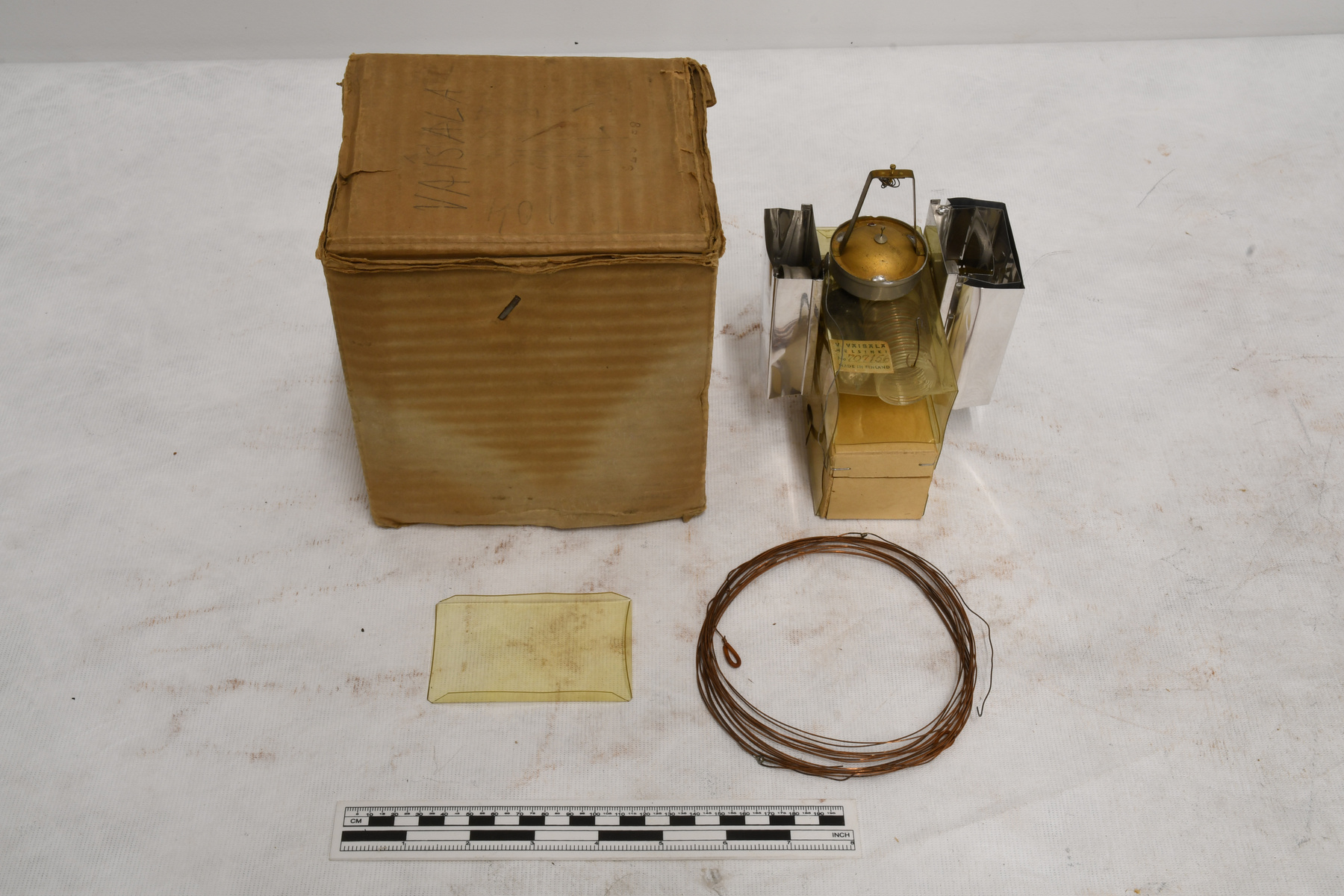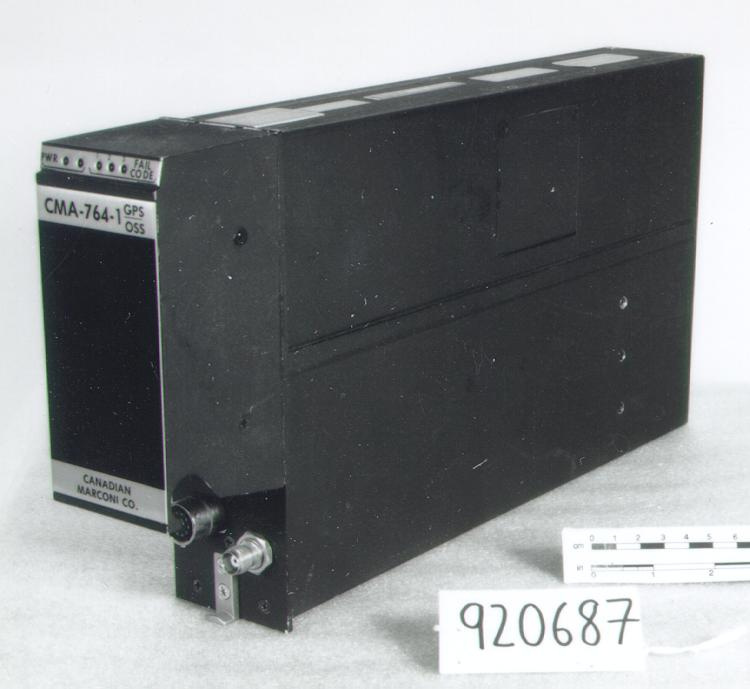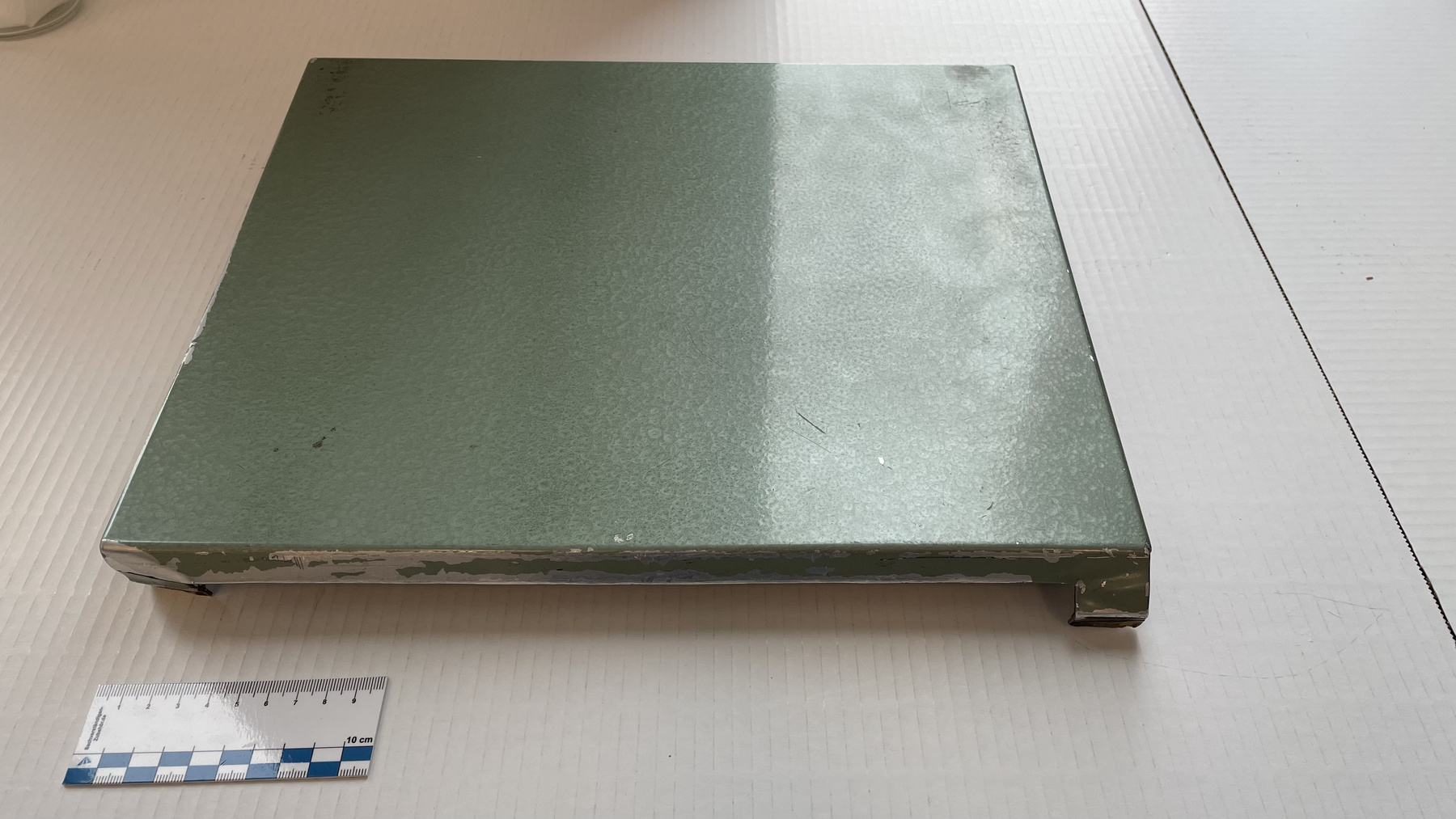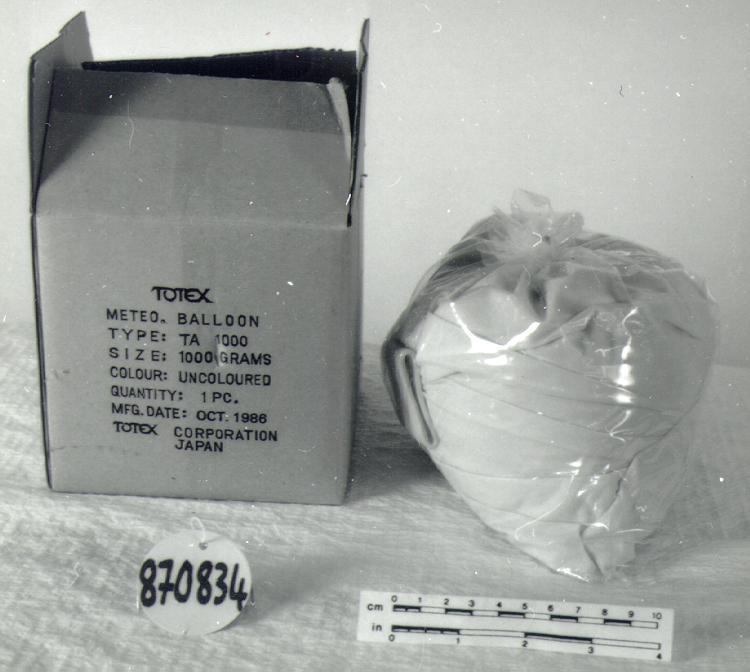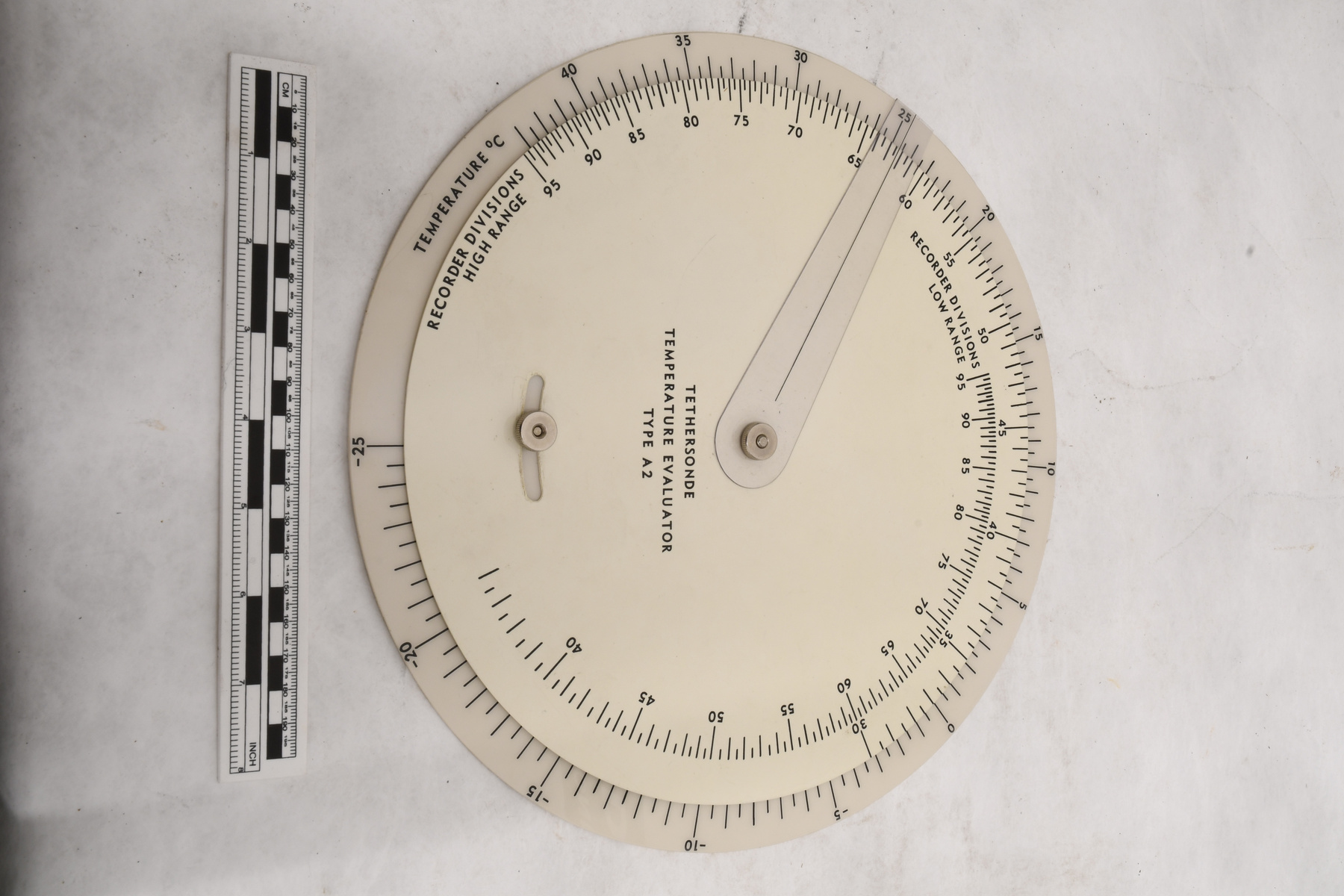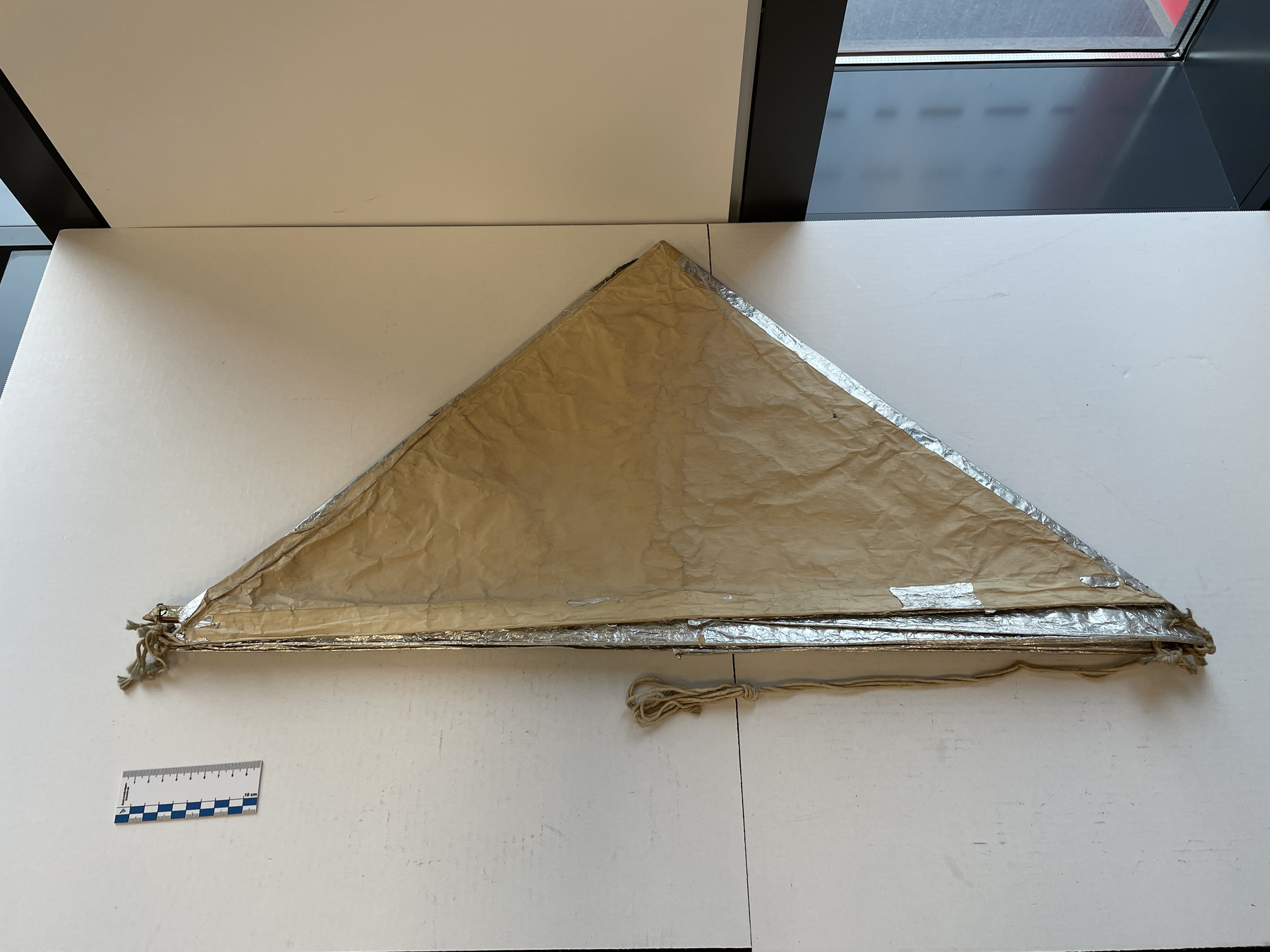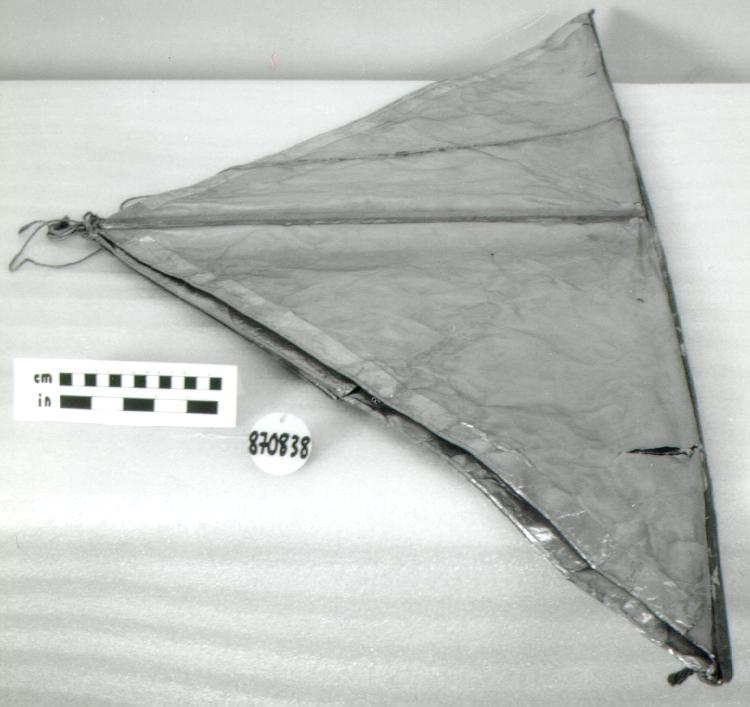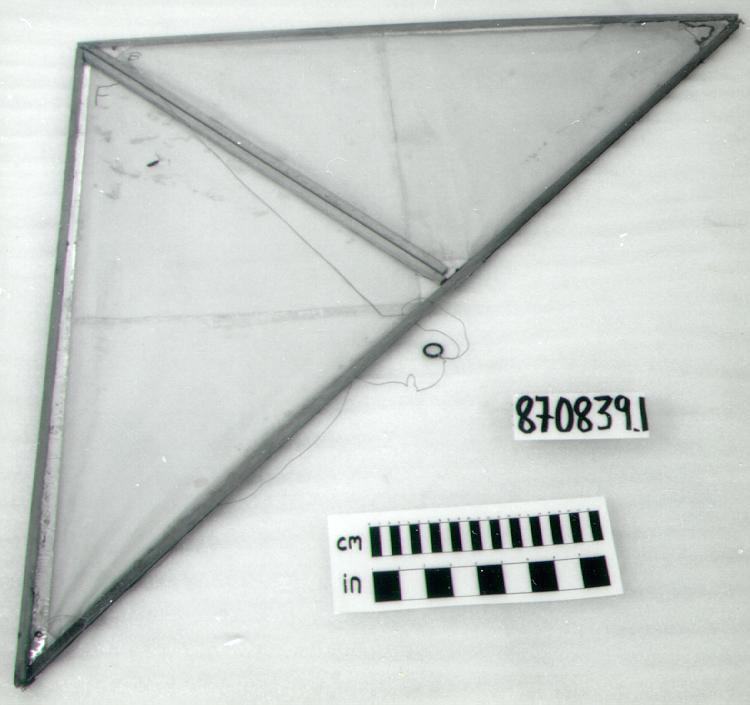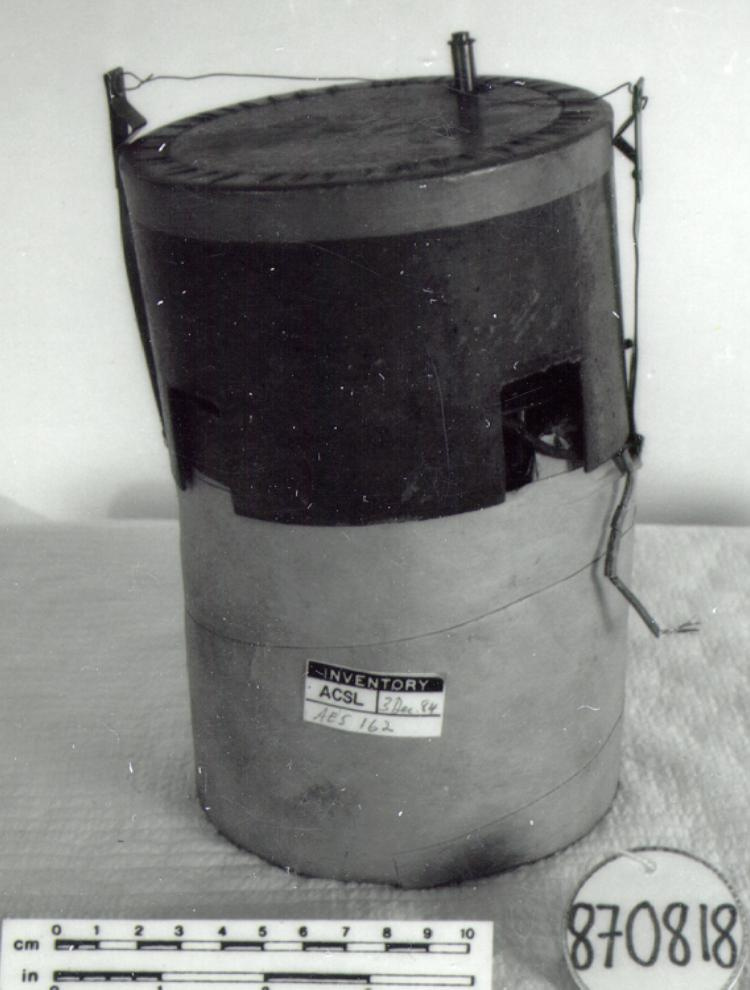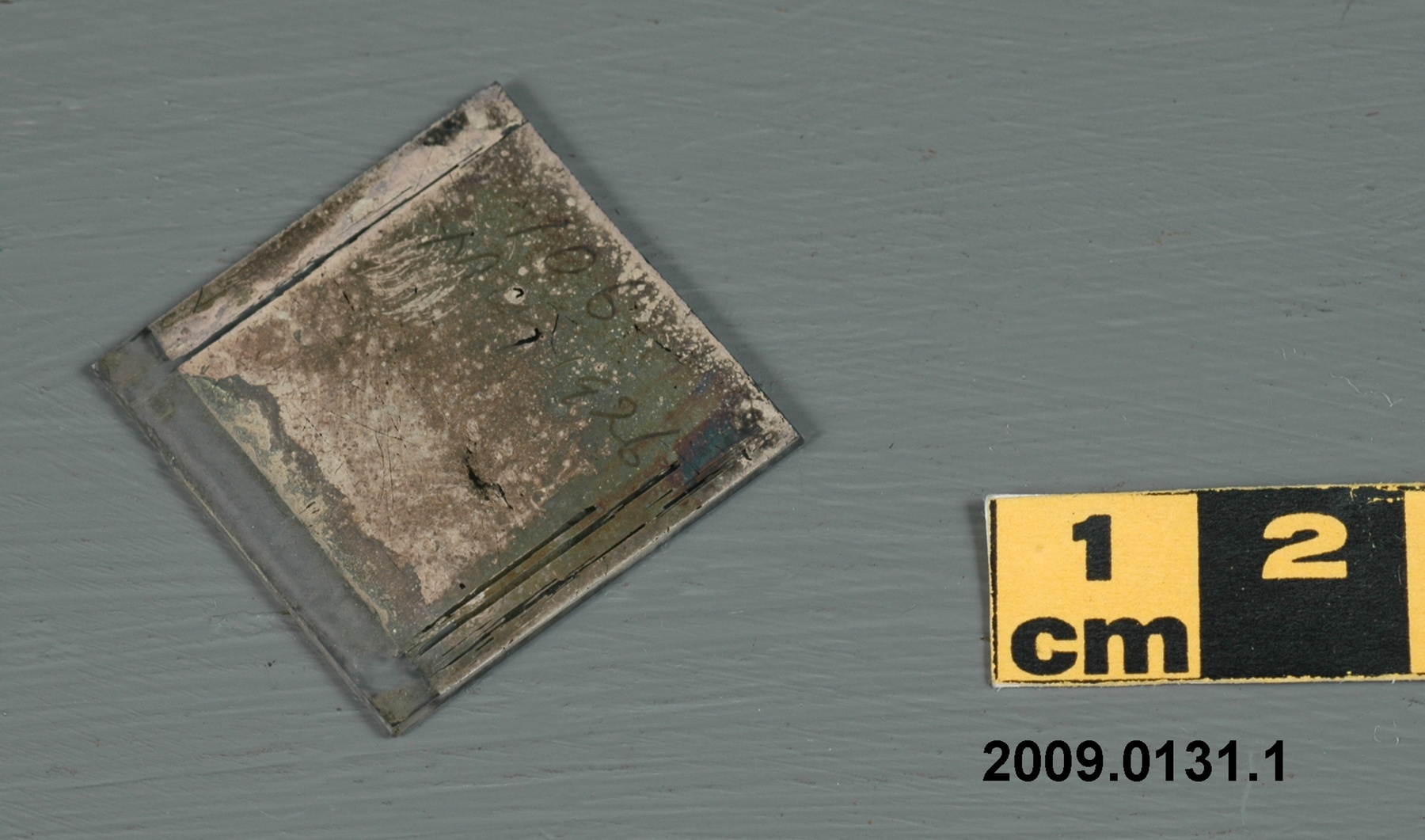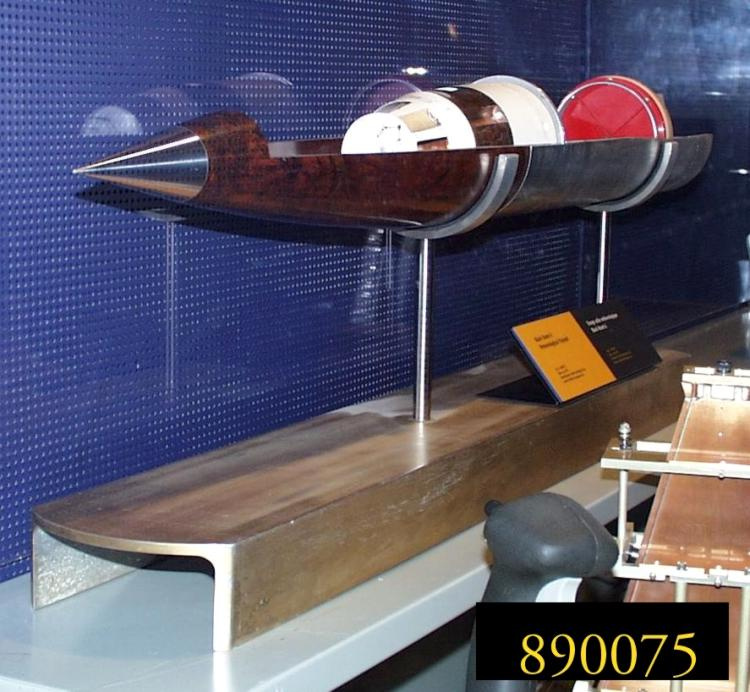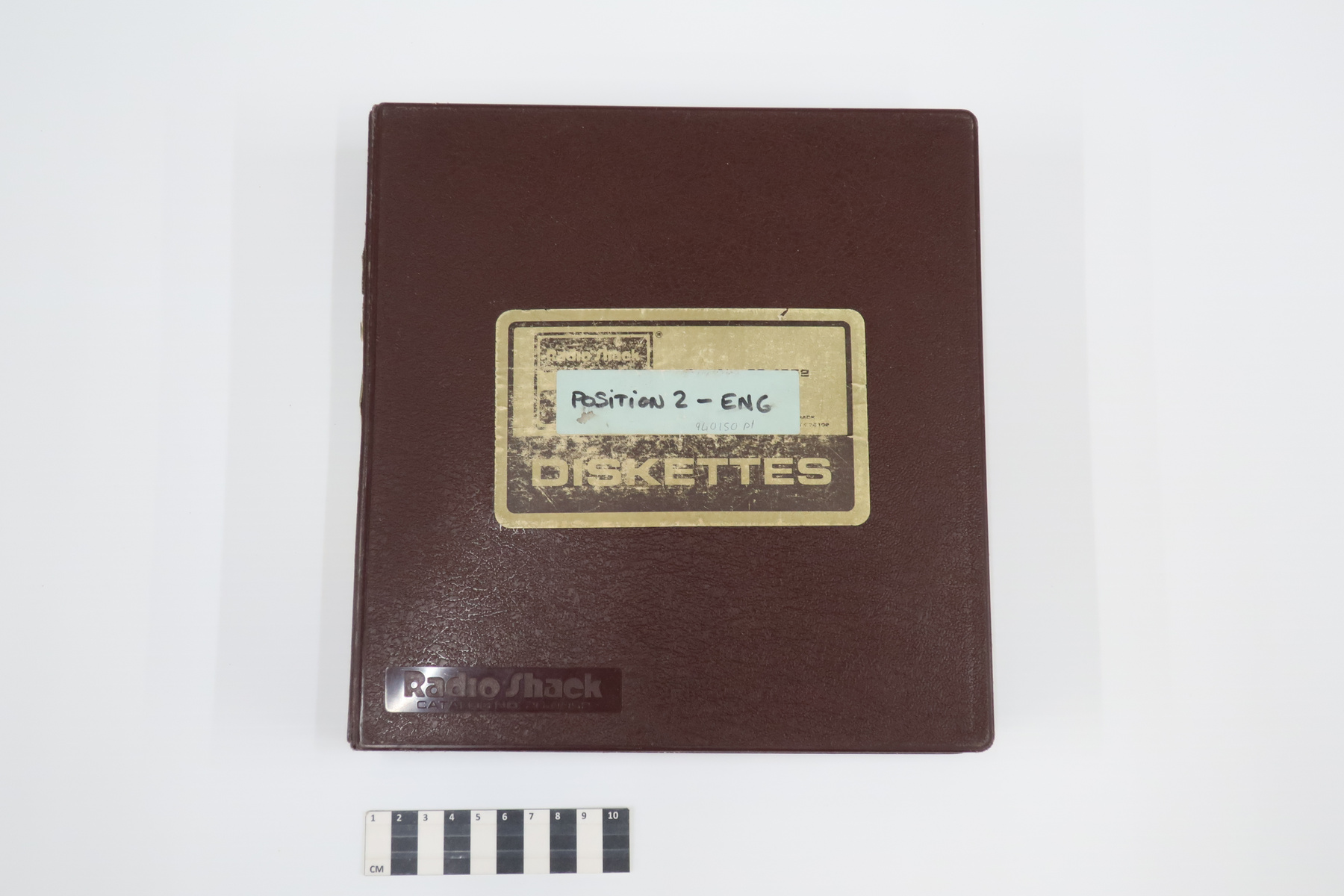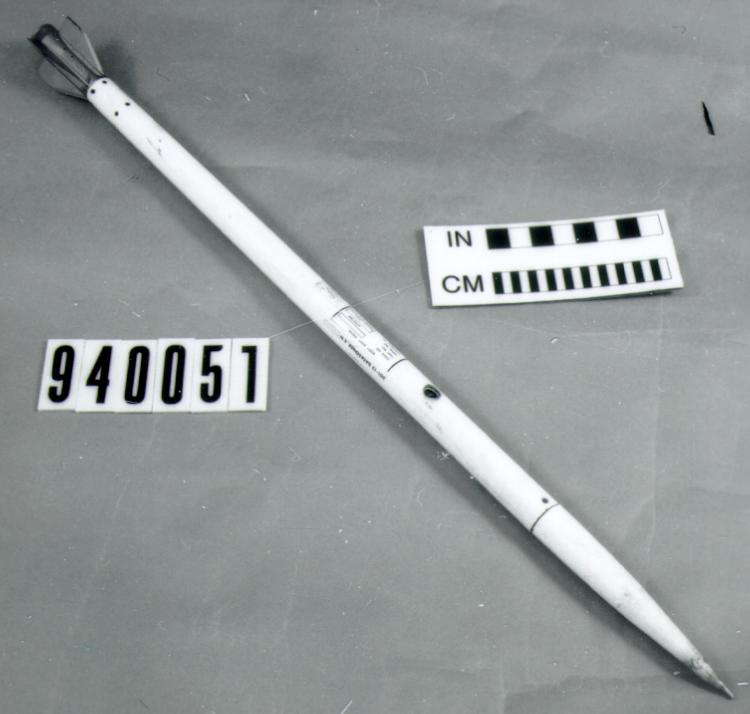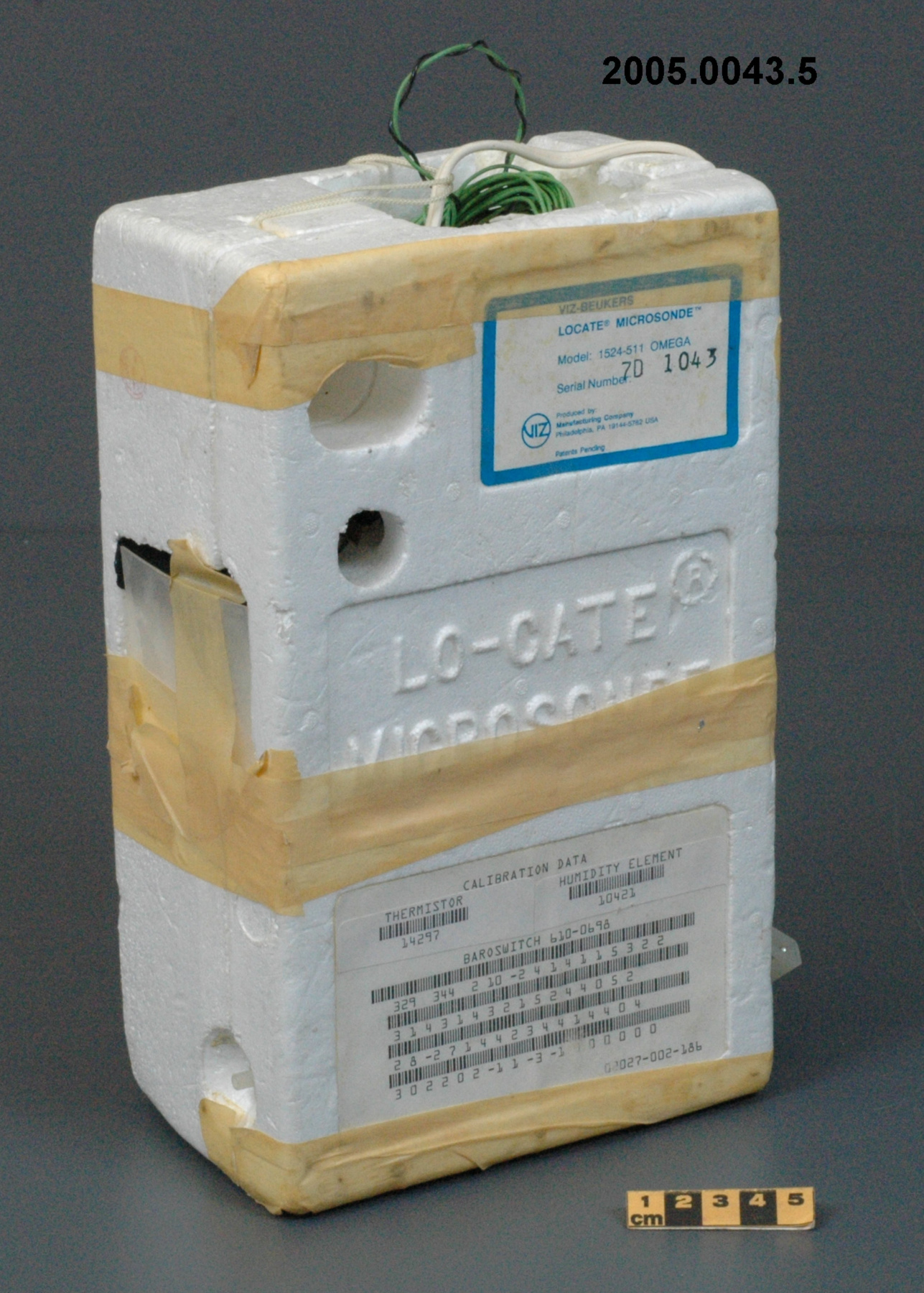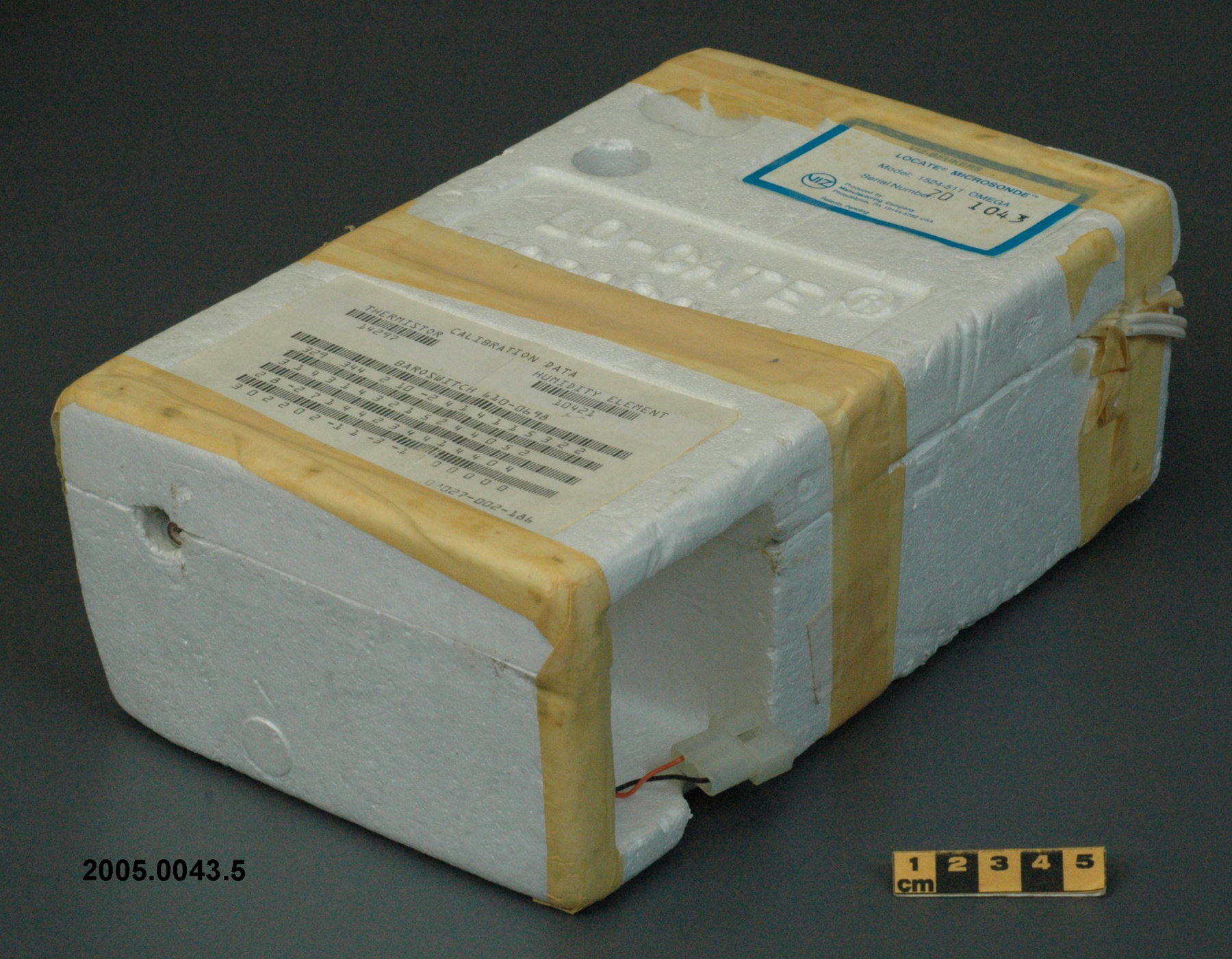Radiosonde
Use this image
Can I reuse this image without permission? Yes
Object images on the Ingenium Collection’s portal have the following Creative Commons license:
Copyright Ingenium / CC BY-NC-ND (Attribution-NonCommercial 4.0 International (CC BY-NC 4.0)
ATTRIBUTE THIS IMAGE
Ingenium,
2005.0043.005
Permalink:
Ingenium is releasing this image under the Creative Commons licensing framework, and encourages downloading and reuse for non-commercial purposes. Please acknowledge Ingenium and cite the artifact number.
DOWNLOAD IMAGEPURCHASE THIS IMAGE
This image is free for non-commercial use.
For commercial use, please consult our Reproduction Fees and contact us to purchase the image.
- OBJECT TYPE
- audio-modulated/Navaid/Omega
- DATE
- 1986
- ARTIFACT NUMBER
- 2005.0043.005
- MANUFACTURER
- VIZ MFG. CO.
- MODEL
- LO-CATE Microsonde/ 1524-511 Omega
- LOCATION
- Philadelphia, Pennsylvania, United States of America
More Information
General Information
- Serial #
- 7D 1043
- Part Number
- 5
- Total Parts
- 5
- AKA
- microsonde
- Patents
- N/A
- General Description
- styrofoam casing/ synthetic and metal parts/ masking tape
Dimensions
Note: These reflect the general size for storage and are not necessarily representative of the object's true dimensions.
- Length
- 26.2 cm
- Width
- 16.8 cm
- Height
- N/A
- Thickness
- 9.8 cm
- Weight
- N/A
- Diameter
- N/A
- Volume
- N/A
Lexicon
- Group
- Meteorology
- Category
- Upper wind speed & direction measurement
- Sub-Category
- N/A
Manufacturer
- AKA
- VIZ
- Country
- United States of America
- State/Province
- Pennsylvania
- City
- Philadelphia
Context
- Country
- Canada
- State/Province
- Unknown
- Period
- mid 1980's +
- Canada
-
An example of a radiosonde of a type used by the Meteorological Service of Canada at its 31 upper air observing stations mostly across southern Canada. In the 1980's the (American) National Bureau of Standards types of radiosondes (such as 1987.0824, 1987.0826, 1991.0095, 1991.0100), which had been the main operational radiosonde in Canada for fifty years, began to disappear. Gradually starting in 1985 they were replaced by the Viz/Beukers Mark I/II (2004.0360, 2005.0043) and the Vaisala RS80 NAVAID radiosondes (2004.0358-0359, 2005.0041-0042) (Ref. 2). Part of a large collection of meteorological instruments acquired from the Meteorological Service of Canada (previously Atmospheric Environment Service) by the CSTM since 1967. MSC is the government agency responsible for collecting and disseminating meteorological data and forecasts in Canada. It was founded in 1871 in Toronto where it is still headquartered. The MSC was originally on the University of Toronto downtown campus but moved to Downsview in 1971 on land owned by UofT. The headquarters houses laboratories, research facilities and calibration and instrument maintenance facilities (now largely contracted out). - Function
-
A device lifted by balloon into the upper atmosphere to measure temperature, humidity, and air pressure and transmit the data to earth. Wind speed and direction can be determined by tracking the radiosonde. - Technical
-
A type of radiosonde which used signals from a system of navigational radio transmitters to determine the position of an ascending balloon (and thus wind velocity and direction), known as the Navaid method. A receiver in the sonde detected navigational signals which were sent to the ground station for positional determination from which the winds are calculated. This radiosonde is marked ‘Omega', indicating that it was used with the Omega navigation system. Omega was a global radio navigation system for aircraft, operated by the U.S. and six other nations. from 1971 to 1997 with eventually eight stations which transmitted VLF signals. Use of the Omega system declined during the 1990's due to the success of the Global Positioning System (GPS) which began operating in 1994, and it was shut down by the U.S. in 1997. The radiosonde ground station includes a UHF directional antenna to receive the 403 mHz signal from a distance of up to 200 km, a whip antenna with amplifier to monitor the Loran/VLF signals and a separate antenna to receive the GPS signals. These antennae are attached to a computer which receives and processes the radiosonde and navigational signals in real time. It converts the analogue PTU signal from the radiosonde into pressure, temperature, and relative humidity and calculates the winds from the navigational signals (Refs.1-3). - Area Notes
-
Unknown
Details
- Markings
- blue lettering on white and blue lettering on front reads 'VIZ-BEUKERS/ LOCATE (R) MICROSONDE (r)/ Model: 1524-511 OMEGA/ Serial Number: 7D 1043/ Produced by:/ VIZ Manufacturing Company/ Philadelphia. PA 19144-5782 USA/ Patents Pending'/ raised lettering on front reads 'LO-CATE/ MICROSONDE'/ black typed lettering on label on front reads 'CALIBRATION DATA/ THERMISTOR/ 14297/ HUMIDITY ELEMENT/ 10421/ BAROSWITCH 609-0699/ 02027-002-186'
- Missing
- humidity sensor, battery, paper roll; calibration chart
- Finish
- white casing/ white and green wire coverings/ white cord/ yellow tape
- Decoration
- N/A
CITE THIS OBJECT
If you choose to share our information about this collection object, please cite:
VIZ MFG. CO., Radiosonde, circa 1986, Artifact no. 2005.0043, Ingenium – Canada’s Museums of Science and Innovation, http://collection.ingeniumcanada.org/en/id/2005.0043.005/
FEEDBACK
Submit a question or comment about this artifact.
More Like This
